- Photography
- North America
- Beach Destinations
- City Destinations
- Mountain Destinations
- Art & Craft
- Get Published


Best Double Stroller for Travel
Airplane toys for toddlers [that actually fit in your bag], best double stroller [umbrella], gifts for moms who love to travel.
- Family Travel Adventures
- Family Travel Tips
Traveling to India with a baby or toddler
India with baby

Traveling to India with a baby or toddler.
India gives you the chance to experience a bit of luxury and actually get a vacation in – instead of settling for a trip simply because you have children. The affordable hotels, dining, fantastic service, family-friendly culture, and easy access to quality childcare make India a really GREAT destination choice for traveling with babies and toddlers.
That said, it can be challenging in some ways compared to other countries to get around with a baby or toddler in tow which is why I wanted to write this guide. I first moved to India when my twins were 10 months old and stayed here through their toddler years. After living in India 3 years, I moved away only to move back a few years later. It’s now home once again! Now I have a third baby in addition to my older twins. I’ve lived in both the North and South of India, while also traveling throughout the country so I have had varied experiences.

When I travel in India, I usually stay in nicer hotels and resorts so I can’t really speak to backpacking or hostels. I personally wouldn’t recommend that route with small children in India anyway. There are however fabulous glamping sites in India which I have absolutely loved, but you should seek out a well-reputed one. Regardless of where you’ll be staying, or how you choose to travel, most of this information should be helpful.
You have to take the good with the bad here. In a lot of ways, things are much easier, but in other ways, it can be much more challenging logistically. Here are a few tips for getting around India smoothly with your little one(s).
Transportation
Car seats in India are rare. They are readily available for purchase these days but I still recommend that you bring your own. If you feel your car seat will be too heavy to carry over, you can consider purchasing an affordable lightweight one specifically for travel. [If your car seat was purchased in the US or Canada you will need a locking clip , European ones have them built in]. I recommend hiring a car and driver for your entire stay in each city where possible. If not possible use your hotel car or their recommended service. Don’t try to drive on your first (or 3rd) trip here – there’s a reason most tourists AND locals hire a professional. When planning your trip, plan to fly between cities instead of driving. The roads can be rough and the rest stops far between.
I don’t take the metros on a day-to-day basis. Metro stations vary from dingy and overwhelmingly crowded to beautiful, modern, and clean. If you want to take a train, search the route to get reviews online. India is now home to many new, clean, and beautiful trains, but you should check 1st to see if that is the one you are getting. For long trips, sleeper cabins are available, and a lot of people love these. I personally prefer to fly with toddlers to keep the travel time short.
Sidewalks can be damaged, uneven, or nonexistent. I’ve managed to walk around everywhere from Delhi to the beaches in Sydney with my eco-friendly all-terrain stroller but for sure leave that umbrella stroller at home – or just plan to use it indoors or at certain places. For tourist sites, check online to see if it’s stroller-friendly before you head out. Most of the time an all-terrain stroller is perfect, but sometimes there are too many stairs. If feasible for you, a baby carrier is the best way to go. I use an Ergo carrier most of the time because it’s very comfortable and can be used from 7 lbs and up without a hot, bulky insert. When I travel, however, this is my go-to carrier because it folds up so compactly!

Online shopping/Amazon
Yes! India has Amazon – with one and two-day deliveries so if you forgot something or need to buy diapers, baby food, snacks, or formula they can deliver to your hotel. The front desk will usually bring it up for you. Also, check out Swiggy (app) for food deliveries! Not just prepared food but groceries, bakery deliveries, etc. Choose cash on delivery if you don’t have Google Pay. You can also call the hotel concierge and ask if they can send someone to the pharmacy to pick something up for you if you fall sick – they’ll send a Dr too if needed.
Best diapers in India
Babies use pull-ups here as soon as they’re out of the infancy stage so that’s all you’ll find. At first, I couldn’t figure out how they changed dirty diapers without a huge mess but then I realized you’re supposed to tear the side when removing the diaper. It seemed so obvious as soon as I did it!
The best diapers in India (I’ve tried them all) are Pampers Premium . I actually prefer them to diapers in the US now. Y ou’ll need to know your baby’s weight in kilos to know which size to buy. For wipes I like Huggies brand , they are the same formulation as in the U.S. They are scented but it’s mild and non-irritating.
For baby shampoo, lotion, etc. there is a natural brand here called Mama Earth, they make a great travel pack for all the baby essentials.
Changing tables
Changing tables isn’t really a thing here. You won’t find one anywhere in the country unless you’re in a play cafe, higher-end mall, nice theater, or another very family-friendly venue. I’m not entirely sure how other moms do things but I’ll tell you what I do. I find a private corner recline the stroller seat all the way, pull down the sunshade, and change my baby in the stroller seat. If you are in a very public area, you can ask a security guard if there is somewhere private to change them, sometimes you’ll get lucky and they’ll let you in a restricted area for a few minutes. Once my toddlers were around 18 months, I could take them to the restroom with me and change them standing up too if bathrooms were nice.
Potty-Trained toddlers
Whenever I travel anywhere with my potty-trained toddler I bring this foldable seat cover . It works on most toilets that I’ve tried in India but not all because some are shaped just a bit differently. Usually, I just keep it for the hotel room so they can be comfortable.
If you find yourself somewhere a hygienic restroom is just not going to happen with a potty-trained toddler, well, it can be challenging. I actually carry diapers around for mine and in the event of an “I can’t hold it” and there are only disgusting bathrooms around type emergency, I slip it on, have them go in the diaper, and then take it off immediately after. I’ve only done this a few times but it sure beats any alternatives I could think of. They make travel potty training seats , but I feel the diaper is often more discrete. For boys, they can stand and go usually but for older girls and myself, we use these…. erm ….devices so we can stand and go too. I keep two in my diaper bag always along with some tissues.
Baby Formula in India
If you need to buy baby formula in India, Enfamil is available at just about every pharmacy or you can order it online.
Baby food while traveling in India
You can easily buy baby food in India online (See Big Basket) or in stores (Look for Food Hall, World Market, or anything with the word “Hypermarket” in it). In hotels and restaurants, they will usually accommodate special requests such as mashing fruits and vegetables. Know that toddlers are often offered free desserts when out to eat. A few times my babies were offered food that was a choking hazard for their age like a small chocolate ball so you can either eat the dessert yourself or politely decline in that case.
Snacks for toddlers in India
I do recommend bringing some of your little one’s favorite snacks from home because that’s what they know and love. Packaged toddler food is usually less expensive. They also often incorporate more ancient grains and millets. There are several great local options as well. My kids love Happa Super Puffs , zookers – healthy toddler cookies , Anything Timios makes, and Indian Kishmish raisins.

Hotels in India
Hotels in India go SO far above and beyond for guests. If you leave your laundry all over the room, they will pick up and fold it all. They will also send housekeeping to clean up after your toddler eats their third snack of the day and leaves crumbs all over the room. When I first moved to India, I was in a hotel for 2 months. I called housekeeping 2ce a day to clean up after our meals – my babies were very messy eaters at that time but they were very happy to help. You can also ask hotels to reserve a table in the corner for you each morning at breakfast so fewer people pass by your table if your kids are feeling inundated with extra attention. Trust me, the breakfast buffets in India are not to be missed! If you have a food intolerance or allergy they are a dream!

Many higher-end hotels these days actually have tap water that you can drink. I don’t trust it for everyday drinking (which is fine because they also provide unlimited free bottled water) but it’s really nice to have if your baby is in the swallowing bath water phase. If your hotel does not have potable water and you are worried about your baby ingesting the water, a quick shower is a better option. Recently a lot of hotels have shifted to bottled water in reusable glass bottles. These are safe for drinking. If any concern call the front desk.
Washing Bottles
Use bottled water to wash all of your baby bottles, pacifiers, etc. I don’t like the baby dish soap here so I brought my own from the US. I also brought a travel bottle cleaning set along but you could easily pick something up here as well. Many hotels will actually wash and/or sterilize bottles for you – some even have sterilization machines. I tried the washing service (I don’t sterilize bottles) but they kept missing the air valves so I preferred to wash them myself. I generally start washing with tap water but do the final rinse with filtered or bottled water. That’s just for bottles and sippy cups where I tend to be extra cautious. F or plates, bowls, etc tap water is fine to wash with – just be sure it is completely dry before using again.
Cribs in Indian Hotels
Some hotels have older-style cribs – you know the ones they don’t sell anymore in other countries with the wide bars for the baby heads to get stuck in? Email your hotel beforehand and ask them to send you an image of the crib so you know if you need to bring your own pack-and-play or not. You can also buy pack and plays here online or at a baby shop such as First Cry.
Childcare in India
Babysitting is very affordable in India, most hotels provide babysitting services on-site. I have had so many great experiences with babysitting in Indian hotels. I also had one bad experience so it’s very important to vet the sitter before leaving your child – click here to see questions to ask the hotel and sitter before heading out. My preference is to always have the babysitter watch my toddler in the kids’ club – you have to hire a separate sitter due to their age but they can use the space with older kids.
Nannies in India
You can find a temporary full or part-time nanny during your stay. I recommend asking in an expat group on Facebook if they know of anyone between jobs. Nannies can also act as your translator should the rare need for one arise but typically English is enough.
Food safety while traveling
Food safety is a concern, especially for children under the age of 6. I highly recommend you read this post before your trip but if you are short on time at least remember to stick with well-reviewed restaurants where you can eat pretty much anything. Pro tip: Download the Zomato app and stick to restaurants rated 4.0 or higher. Otherwise, you can stick to only well-cooked foods or fresh fruits and veggies that you wash, cut, and peel yourself. In general, you have to be more careful in north India than in the south. If your street food meal seems too cheap (less than 100 rupees) it probably is. Always err on the side of spending more in India.

Breastfeeding in India
Breastfeeding is fairly well accepted in India but not as widely as in the West and most women do prefer to either nurse in a private area or they use a cover. Although India has very progressive maternity leave laws that relate to breastfeeding, there is no legal protection for public nursing. Now that doesn’t mean you can’t or shouldn’t nurse your baby in public I’ve personally done it many times, without a cover. It’s just not legally protected which means if a restaurant owner asks you to cover up you can pitch a fit, tell them it’s ridiculous, etc. but then, in the unlikely event they don’t back down, you’d either need to comply or leave the premises. I’ve never actually heard of this happening but I know it must happen here because it still happens in the US where it IS legally protected. I’ve seen women breastfeed openly with and without covers when out and about, I have done the same. A few weeks ago I saw a woman breastfeeding on the back of a moving moped – not all superheroes wear capes am I right? In malls, hospitals, and other large public venues, there is almost always a baby care lounge with comfy chairs for you to privately nurse your baby, I think it’s because of that convenience that I’ve never seen anyone breastfeed in a mall before.
Ok, play cafes are amazing and at least where I live in the nation’s capital of New Delhi and surrounding areas of Noida and Gurgaon, they are very popular. The mall closest to my house has 3! Play cafes are half restaurants and half play areas. Most are geared toward younger kids (around ages 1-6). They’re even staffed – the idea is that you can eat in peace, chat with friends or get some work done while your kids run around, play dress up, or play with developmentally appropriate toys. I have no idea why this hasn’t caught on in the West and I have half a mind to open one up myself. Make sure you visit one during your trip to India. Click play on the video below to see a few different play cafes around town. Sadly they are not popular everywhere in India. Here in Bangalore, they are nonexistent but there are a lot of very cool indoor play areas!
Historical sites
Safety can be a concern at historical sites. Most sites have been preserved as they were built so that means no railings have been added to stairwells or plexiglass added to gaping holes in the walls three stories up. It is up to you and only you to keep your little one safe. I used to use these on occasion when I was out in more dangerous sites with my kids so they didn’t accidentally run out a doorway and fall three stories.

Stray dogs and wild monkeys
We have a rule in our family that you can look at but not touch any animal without first being invited by an adult. That adult can be me once I assess a stray is friendly. My kids love to say “Hi” to the local animals who usually ignore them entirely in return. Both monkeys and stray dogs can carry diseases and can be aggressive if provoked, startled, or if you’re holding food, so use caution. Some strays are quite friendly. You will notice some strays wear collars. These are often dogs cared for by their community humans and are often very friendly, even protective of children they run into. Animals here are pretty used to the presence of humans though and most often will choose to do their own thing.

All the extra attention
Indian people, in general, LOVE kids. Kids here get extra attention and touching (pats on the head, cheek, etc.) If your kid would stand out in a crowd here you might get a bit more attention ….. sometimes you might get a LOT more attention, particularly at tourist sites. Most particularly at tourist sites in Jaipur, I am not sure what the deal is but the attention in Jaipur is more than we have received anywhere else. The good news is that there is not a huge language barrier here so communicating that your baby isn’t liking it or saying “Please no touching” is a pretty simple thing to do. I often blurt out “Not the face!” which is met most often with amusement and an apology.
This can be challenging because, on the one hand, you want to respect the culture you’re in, and on the other, your baby or toddler may not respond well to unwanted touching. You also might want to prevent strangers from touching your baby since their immune systems are still developing. In general, Indians are very respectful and will back right off without being offended after you ask them to stop. If you need to address a handsy stranger further, stay friendly, repeat that they don’t like touching, and put your whole body between them and your child. If there seems to be a language barrier put your hand up like you’re telling someone to stop. Sometimes, locals will want to take selfies with your child. Unlike many other countries that I have visited, in India, they almost always ask your permission first. I often tell people “not right now” because it sounds nicer than no, but it’s pretty unlikely that they’re going to see you again later. Other times we take the selfie, it just depends on what we have going on, if my toddler is okay with it, etc. If you’re really lucky, someone might ask you to hold THEIR baby to take a photo with.

Staring in India
Part of getting extra attention is getting stared at. If you have older kids I would explain to them that they are staring because they are different and find them interesting. I often find myself staring at the 20 people crammed into one tuk-tuk. It’s not that I mean any harm by it. I just can’t believe they all fit in there! It’s amazing. For babies going through the stranger danger phase, it can even be traumatic for them. My son would shut down, tuck his chin to his chest, and just start crying. It was a horrible thing to watch keeping him in a baby carrier, sitting in corners of restaurants, and notifying waiters (who were very often the ones staring) of his “shyness” helped a lot. On the other hand, my daughter loved all the extra attention so we went with it. You’ll find what works for you.

If they are getting a lot of unwanted attention, It might help to have your kids wear hats at tourist sites. Not just blonde kids, all kids. Locals largely prefer to come and discuss my brunette daughter’s “silky hair” over my son’s blonde hair. In general, you will get a lot more attention at tourist sites and in rural areas. Everyday living, walking around big cities – that’s a completely different story. While I get more stares here in malls I get stopped for conversation in the US way more (every 4th person in the US wants to know if my kids are twins) so for us, it was an easier transition.

If you ever feel uncomfortable because the staring has become more of creepy leering, feel free to give a dirty look back, say Hi, ask a guard for help, or just be blunt and tell them to stop. I mean, some people will never know that they are being inappropriate unless someone lets them know and other people just have unfortunate resting faces. Use your instincts and protective emotions (fear, anger, etc.) that come with those instincts to do what you’re comfortable with.
I had one man staring at me in a very creepy way while I was out and about with my kids. I tried staring back, dirty looks and even putting my hands up as if to say “What?!?” but nothing stopped this man from staring. I was waiting for my driver so this went on for more than 10 minutes. My instincts told me something was off and not to approach (he was a ways away) even though normally I have no issue confronting people. There weren’t any security guards around at the time, normally there are and you can just talk to them. I took out my phone and as obviously as possible, took a photo of him. I then made a phone call to my driver to see how close he was. The man probably thought I was calling the police and finally walked away. That was the worst experience I have had to date. After 3.5 years of living here. S o hopefully, if you’re on a short trip, it doesn’t happen to you at all. I have had a similar experience in Australia as well but the man was leering at and filming my child instead of me which was way worse.
Vaccines needed to travel to India
Never accept a blogger’s advice when it comes to which specific vaccines are required for travel. Most of us aren’t doctors and vaccine information can change. Check here for information on vaccines needed before visiting India and then speak with your child’s pediatrician. Be sure to tell them which specific areas you will be visiting because that most likely will mean fewer vaccines are required.
Hand Sanitizer
Keep an alcohol-based hand sanitizer on you at all times. I took a Costco-sized pack of individual Lysol wipes with us when we moved which comes in handy to carry around. (These are also amazing for travel in general) Just be sure it completely drys before your little one touches their face … or sucks on their fingers.
Mosquitos in India
Mosquitos here can do more than give you an itchy bump, they carry and transmit dengue and other diseases. They are also out all day long too, not just after dusk. I normally love natural remedies but that is assuming some level of effectiveness. When it comes to tropical, disease-carrying mosquitos, Deet is your best friend. It is safe for babies 2 months and up. On the other hand, natural repellents containing oils such as eucalyptus or lemon oil are only safe once your child is three years old. I’ve also tried several natural brands of lotions, sprays, and stickers myself and the mosquitoes were not phased at all.
There is one brand here in India that contains DEET. You can buy it online but the sprayer is not very good, it leaks a ton and smells terrible. I import these from the US to use which contains 15% Deet. I tried a brand containing 7% but found it to be ineffective here. I also really love these wipes (picardin is as effective as DEET) because they are so small and easy to carry around! Be sure you know how to correctly apply DEET based bug spray. I always give a bath after an evening outside to wash off all the residue before bed.
What to wear in India
In general, dress for your comfort and for the weather. Shopping locally is always a great idea because the fabrics sold here are designed for the climate, not to mention they are super comfy and cute. To read my full guide on how to dress in India, click HERE.
Pollution in India
I was so afraid of the pollution levels in India before moving here and, it’s true it does get bad – really bad…. in the north that is. However, it’s not an issue year-round and air purifiers are amazing at removing toxins from the air. Anti-pollution face masks are great for outdoor activities. Vog Masks are the local expat’s brand of choice and they do make them in child sizes but they are really hard to find post covid. You can try these if for 4+. Face masks are not recommended for young toddlers or babies, check with your pediatrician before using on an older toddler. The best thing to do is to plan your visit when air pollution is not a major issue. Karnakata or Kerala, for example, does not struggle with the same air quality issues as other part of the country. Here in Bangalore, I can leave my windows open all day long most days of the year!
The best time of year to visit India
It’s important to plan your visit at the right times, especially when traveling with kids because you need to avoid pollution and extreme heat if you want to enjoy the outdoors. The best time to visit most of India is February-April and August-October. (Click here to read the full guide to when to visit India, which is broken down by region.) Most people say September-October but I love August in Delhi. It’s still monsoon season so you get clear skies and clean air. It’s still very warm and humid but not as hot as the other summer months.

November is the absolute worst time of year to visit because the air pollution is horrible, if you can help it, do not bring your little one to visit unless you’re heading to South India. Summers in many parts (May- mid-July) are also hard because it is unbearably hot. Babies cannot regulate their body temperatures the way adults can so you really wouldn’t be able to see the sights with them without risking heatstroke.
Shopping in India
Be sure to take the time to shop in India, particularly for clothing early on in your trip. My favorite brands for Indian kid’s clothing are Fab India and Anokhi . They have (adorable) lightweight, breathable pieces of cotton that are perfect for Indian weather. There are also several markets where you are able to buy directly from local vendors. For tips on Haggling in India click here . Your baby or toddler will be able to wear what you buy here back home too!

Did I miss anything? If you have any burning questions about traveling in India with a baby or toddler feel free to ask in the comments below!
If you enjoyed this article please share it!
Pin this for later!

________________________________________________________________________
** Adventures With Children is a participant in the Amazon Services LLC Associates Program, an affiliate advertising program designed to provide a means for us to earn fees by linking to Amazon.com and affiliated sites.
RELATED ARTICLES MORE FROM AUTHOR
What to wear in india [an up-to-date guide], when is the best time to visit india, visiting the taj mahal [everything you need to know and more], 22 comments.
[…] Traveling to India with a baby or toddler […]
Great! I would guess that touching, staring and all that extra attention you get when travelling with kids might be one of the biggest challenges in India. Because I know how tiring it gets after some time when you are alone, since it’s hard to be alone for even a short moment, let alone when you are travelling with a kid…
Yes, it can be challenging but thankfully it’s not an everyday occurrence in big cities. My kids are old enough to tell strangers “no touch” now too, they manage it all themselves at this point. So really, it’s been a great lesson in assertiveness 🙂
Cool! It means they are learning something new. Something you wouldn’t even think of when traveling let’s say in Europe.
I’m really loving your blog, especially all the info on New Delhi with kids. We are stopping over there in February with a 3.5 year old and a 9 month old. I’m really looking forward to exploring and by reading your blog have become a bit less scared too…. Do you know if there is a map of the play cafes?
That’s great! There are many play cafes in Delhi. Google maps should pull them up for you. Fab cafe (inside of the the Fab India Vasant Kunj) is especially popular where you can shop a bit too while your kids play.
This is such a great article! I am planning to go to several places in India like New Delhi, Lucknow and Pune with my 4 month old baby and I will be staying there for 2-3 months. Even though I am an Indian, I have been living in Canada for last 7 years and this is my first child and his first travel ever!. I am so scared to travel with him because first, he is still very young and his vaccinations still doesn’t cover everything (I will be going to travel clinic prior to traveling) and second, even I am used to so many facilities and public amenities now that managing without clean public toilet without changing table will be the toughest thing. Believe me when I say, I cringe while changing him in Costco washroom. You can imagine how hard it will be for me to change him anywhere public in India. The touching part was a great point to bring forward. We will be meeting so many relatives and all of them will touch him without sanitizing their hands. I will be carrying hand sanitizer everywhere but some elders might take it offensively too but I am not going to care as I have to take care of my little one whose immunity is still not developed.
I’m sure you will have a great trip! I will say that many of the bathrooms here in Delhi are MUCH cleaner than your average Costco ones because they actually have dedicated attendants who literally clean the stall after each person. Of course, not all restrooms have this service and there are plenty of germy bathrooms to go around, it all just depends on where you go. The baby care rooms in big malls are also usually quite nice. The problem I had is that outside of the big malls, there are no changing stations in the restrooms, which is a problem I’ve run into in many parts of the world actually. So anyway, that’s why I just changed them right in the stroller or in the car – car trunks make for great changing spaces. You have to just take the good with the bad, but trust me, there is a lot of good! Enjoy your trip. I hope you’ll let me know how it goes!
Great blog, thank you!
We’re thinking of taking our two boys to Gujarat at the end of December. At the time of visiting one will be 4 years old and the other 4 months old. Would you say this is a good time of year to go? Our main concern is disease carrying mosquitoes, especially Dengue. Are we being overly paranoid? Thanks!
Apologies for the delay, I was on leave while we went through another international move! I know this advice is not reaching you in time but for what it’s worth, you are absolutely not being overly paranoid. Dengue is a real issue, while there is a mosquito season where they more active and you need to be extra cautious, my children wear mosquito repellant year-round! Both DEET and picaridin are incredibly effective and approved for babies over 2 months old. We go out ALL the time at dusk when there are plenty of mosquitos and as long as I cover exposed skin, we don’t get bit at all 🙂 Here is my favorite one: (affiliate link) https://amzn.to/2RSySUE
Thanks for writing this up. I am also Indian but been in states for a long time now. My baby is 9 months old and I am worried sick about his sleeping situation. Where do I find a crib as per american standards? Even the mattress? If its impossible to get one, then probably we have to have him sleep in his pack and play. Everyone I know co-sleeps which I don’t do. I have anxiety for baby safety. Do you have any recommendations on brand names?
A lot of the hotels use pack-and-plays, which would be a safe sleeping situation assuming they don’t stuff it with bedding. The wooden cribs, not so much. I would definitely avoid for a baby and young toddler but did use them when my kids were older toddlers. You can email the hotel beforehand and ask for a photo of the cribs they use.
Otherwise, you could bring your own pack and play if you already own one. I used to fit 2 inside one 1 suitcase. Alternately, you buy one from a local mall (check out the Mothercare store) and donate it before you leave, it would be put to good use!
This is a great blog! My biggest questions/concerns were the actual flight itself and the food.
How did you manage sleeping, entertaining the kiddos on a long overseas flight? And what do you do for jet lag?
Our kiddo is used to Indian food and the flavors of the spices. We just use pepper sparingly. How did your kids manage the spicy food? And this may sound silly, but where do you buy milk as I’m not sure everywhere we will go we will have access to pasteurized milk.
So – milk is easy! Amul brand is pasteurized and available everywhere – even corner shops! If you are in need of a formula that can be bought at any local pharmacy. As you may know, Indian spicy is different than overseas spicy. We ask for things to be less spicy, or just say its for the kids and they automatically do it. Funny enough when my kids were babies they ate more spicy food than they do now. It has never been an issue because restaurants are very accommodating and everything is cooked to order so for my daughter these days we ask for zero spice (that’s a thing) as she doesn’t like it.
From 18 months I did unlimited screentime on flights. Before that, we took baby toys and hoped for the best! I do carry Benadryl and Tylenol just in case but have never used it, so you could talk to your Pedi about that. I have used chamomile tea many times for red eyes to help get them sleepy, ask your dr but most say its fine to give after 6 months. I also use these inflatable footrests so Itoddlers can lay down and sleep (affiliate link): https://amzn.to/2GvxbqT Babies do best in a bassinet or car seat.
Hello Dana. Thanks for these wonderful information. One of my biggest fear other than any illness is sleep transition when traveling to India. How did you do it?
Jet lag is tough but generally, I find kids often adapt better than adults. My best advice is to expose them to sunlight as soon as possible in the morning. If they don’t usually nap, keep it that way. If they usually nap I would add only 1 hour to the nap total. Put them to bed an hour or two early if needed.
Modified schedules help too, especially for short trips. If the natural tendency is to wake up early, embrace it and see more sunsets. Or if the tendency is to stay up late, let them! I have had great adventures with my kids at 10 pm while on holiday when back home they would have been fast asleep!
Thanks for the valuable information and suggestions. This blog coverd almost all the points regarding how to handle things when we are traveling with a baby or toddler. Very useful for people who travel with a baby
Good you explained everything in detail it has been a great help. Thanks for sharing the Useful and Informative Blog.
LEAVE A REPLY Cancel reply
Save my name, email, and website in this browser for the next time I comment.
This site uses Akismet to reduce spam. Learn how your comment data is processed .
POPULAR ARTICLES
Best places to visit with kids [readers choice], family holiday to fiji [including where to stay].

POPULAR POSTS
Nurtured minds: benefits of nature for kids, barrenjoey lighthouse walk, popular category.
- The Destination 32
- Family Travel Tips 12
- City Destinations 9
- Beach Destinations 8
- Hotels & Resorts 6
- Privacy Policy

- Privacy Overview
- Strictly Necessary Cookies
This website uses cookies so that we can provide you with the best user experience possible. Cookie information is stored in your browser and performs functions such as recognising you when you return to our website and helping our team to understand which sections of the website you find most interesting and useful.
Strictly Necessary Cookie should be enabled at all times so that we can save your preferences for cookie settings.
If you disable this cookie, we will not be able to save your preferences. This means that every time you visit this website you will need to enable or disable cookies again.

A Parent’s Guide to Traveling to India with Kids
By: Author Emily
Posted on Last updated: November 27, 2023
We brought our child to India for two weeks when they were 2.5 years old. Over 14 days, we traveled to the Golden Triangle cities of Delhi, Jaipur and Agra, plus we spent a few days in Udaipur. If you’ve ever thought about going to India with kids, this post is for you. It combines everything we learned from that experience, from dreaming and planning to actually going and then reflecting back on it. Follow along as we share our personal experience but also pack in every single tip, note and lesson learned.
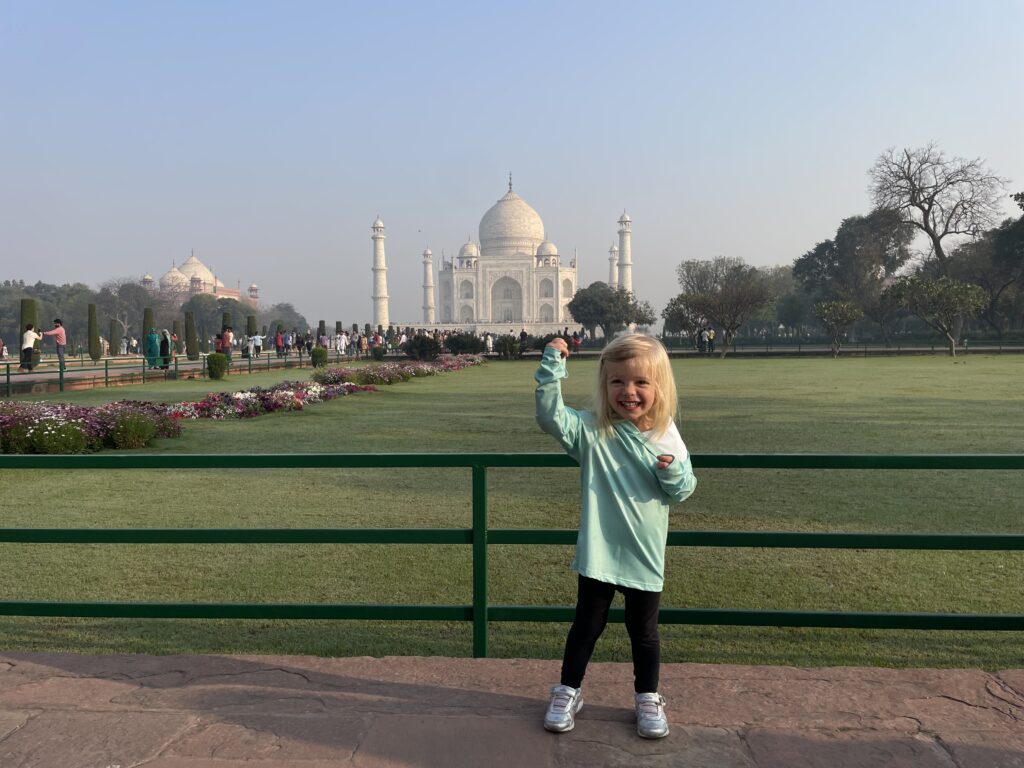
In This Post
We cover a lot in this post, so we broke it up into three main parts. Here’s what you can expect to find.
- Part 1: Why India This section explores why you might choose to go to India, including what it’s like being there with kids .
- Part 2: Plan Your Trip Next, we dive into the nitty gritty details like what vaccines your kids need and how to get around with them safely.
- Part 3: Review & Reflection Finally, we look back on this trip and discuss what we thought, what our kid thought and whether we’re glad we did it.
We have traveled a lot (almost 50 countries), we have lived in major cities most of our life, and our toddler has traveled internationally before. These life experiences are absolutely not required to go to India with kids, but it certainly influenced our experience. This is just something to keep in mind when you consider our reviews, recommendations and feedback.
Part 1: Why India?
If you’re in the dreaming and pre-planning phase, this section is for you. We’ll cover why you might want to bring a kid to India, but also what it’s like to be there.
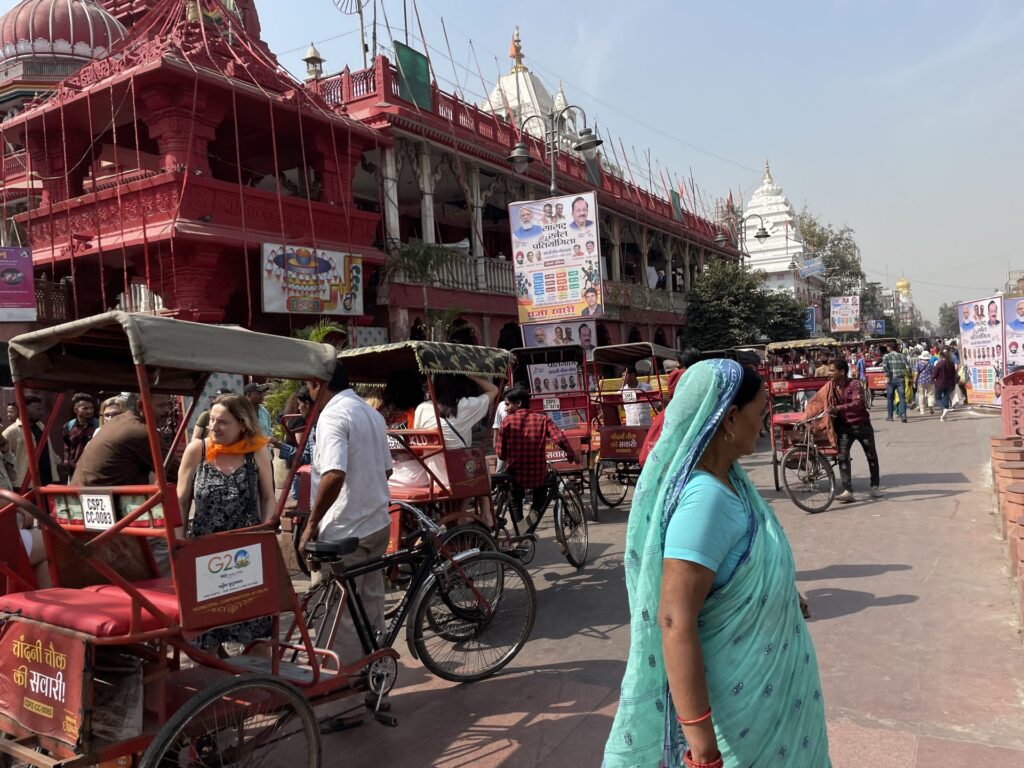
Why We Chose to Go to India With a 2-Year-Old
My husband rightly just corrected this header, because the decision to go to India was almost entirely his.
I was personally never excited about the idea of India. Maybe it was the viral images of the overcrowded trains or my one friend who didn’t love her experience, but India was never high on my list. I think my hesitancy about India was partly why I needed to go. At the heart of it, I think India seemed difficult and I was masking that by convincing myself that I didn’t want or need to go.
Then there’s my husband, who actually convinced us all to book this trip. He is the type of travel planner who needs to be hit with a spark of inspiration. Heck, it only took each of our bosses quitting and a couple beers one night to suggest we take a year off to travel the world, and we all know how that turned out. (Spoiler alert: We did it .)
There were a few sparks that got us to India. One was Holi. This colorful spring festival celebrated around India had found its way onto a forgotten “Bucket List” note on Kenny’s phone. It turned out that Holi actually fell right in the middle of the dates we were looking at for a potential trip.
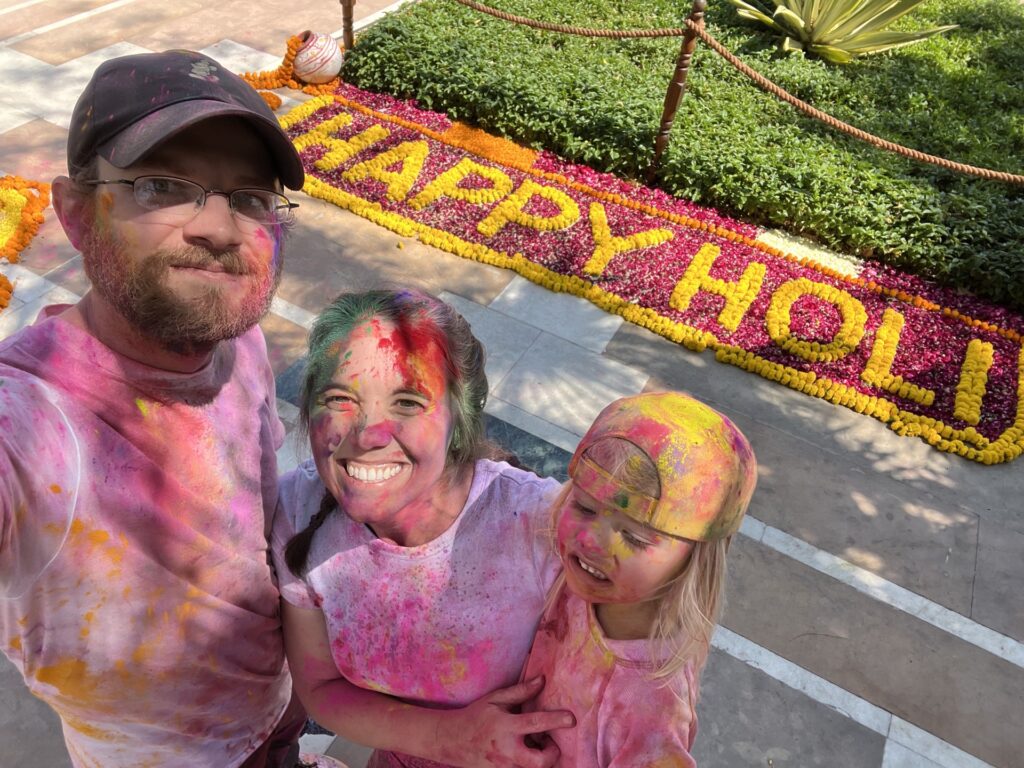
The second thing was Qatar Qsuites , a product we’d dreamed of flying for years. How is that related at all to India? Well, we were never going to spend more than a few days in Doha, so we needed to pair that with a bigger trip in the region. India fit the bill perfectly.
Then there was the obvious appeal to India: the history, the architecture, the culture, the food. India is the second largest country by population and has one of the richest global histories in the world. The Taj Mahal alone is reason enough to go to India.
The last thing was less of a spark and more of our family travel strategy. I know some families feel strongly about saving travel and destinations for when kids are old enough to remember. We believe that there are so many more important reasons to travel than just simply to remember it. Personally, the only destinations we delay or “save” are places that we want to do a specific way at a certain age. (For example, we’re saving Thailand and so we can backpack it together as a family.) India was basically going to be the same trip whether we did it now or in 5 years.
We had a holiday, a fun flight, plenty of things to do, and no real reason to delay India. We had three weeks available to travel and it wasn’t during monsoon season. If not now, when? We booked the flight.
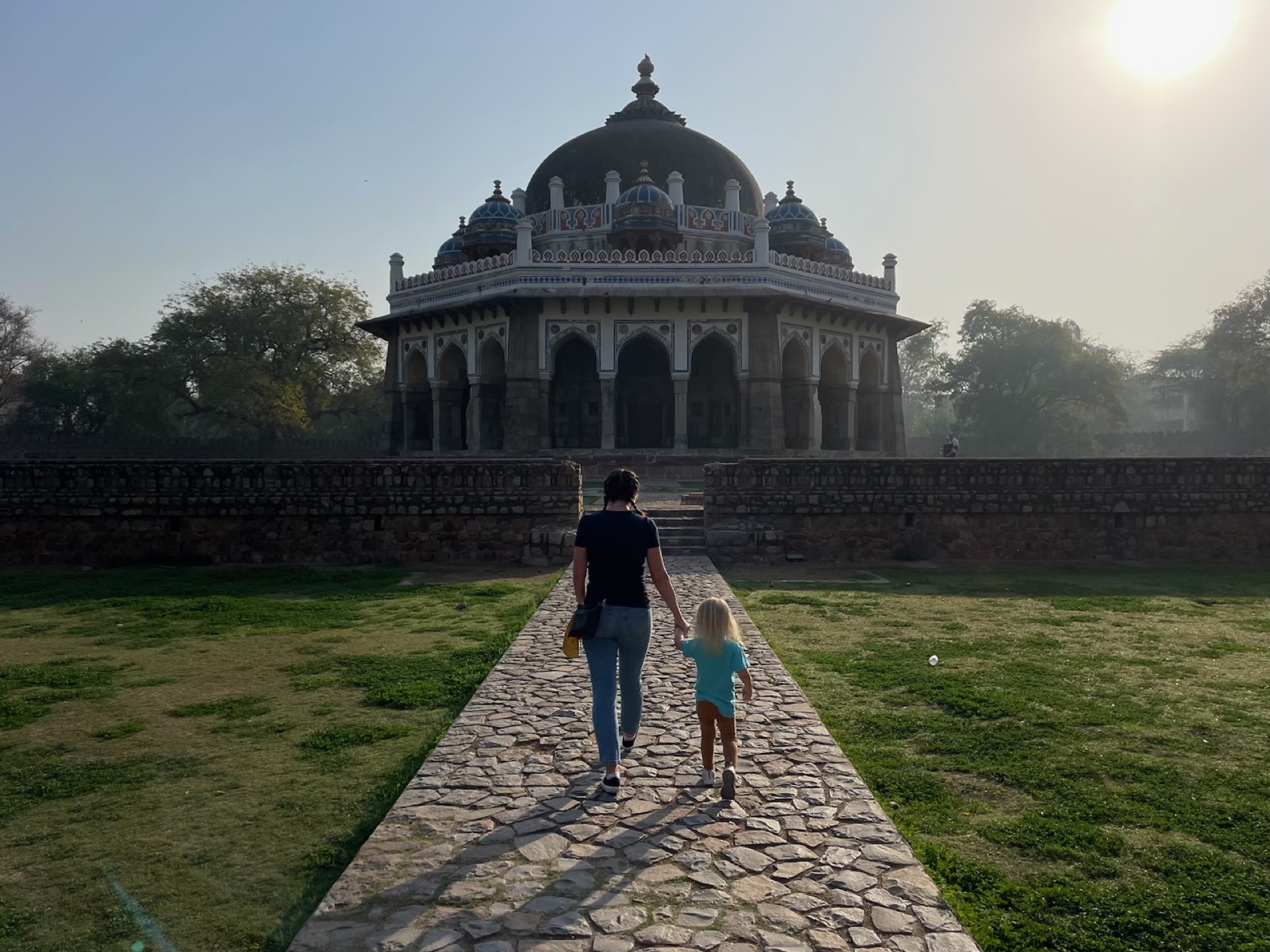
Is India Safe for Kids?
This is my least favorite topic to write about, so I want to get it out of the way right off the bat.
It’s not that safety isn’t important, but it’s highly personal and somewhat subjective. There is perceived safety versus statistical safety, and personal anecdotes only muddy that water. We all have different levels of situational awareness and intuitive safety habits that prepare us better or worse for certain scenarios. Plus, all parents have different thoughts on what is and is not safe for their kid(s).
Let’s get a few things out of the way first. Statistically, India does not fall very high on the safest countries in the world lists . (It’s worth noting that I’m writing from the US which also isn’t showing up on those lists.) The US State Department lists most of India as Level 2: Exercise Increased Caution. A lot of that has to do with civil unrest in specific disputed regions, but also because of violence against women and LGBTQ+ individuals.
That said, when traveling with kids, my best advice is to be prepared for the most common risks. In India, the most immediate and prevalent safety threat is actually traveler’s diarrhea. (The CDC predicts tourists have a +60% chance of getting traveler’s diarrhea compared to the <0.1% of reported crimes against foreigners.) Traveler’s diarrhea is caused by unsafe tap water and is particularly dangerous in kids who can quickly get dehydrated.
Should you or your children get sick, India does have (some) very good hospitals (accredited by the National Accreditation Board for Hospitals & Healthcare Providers). Just be sure to seek out a private hospital for the best care.

The next most common threat that tourists face in India is non-violent crimes like pickpocketing, petty theft, and scams. According to a report on crime in India , there were only 124 reported cases of crime against tourists in 2021 out of 7 million total visitors. (This is the math that drove the above <0.01% stat.)
Now, those numbers are certainly higher as most petty theft goes unreported, but these crimes are generally easy to protect yourself from. Don’t keep your phone in your back pocket. Keep your valuables secured in zipped, cross-body bags. Don’t carry all your cash and cards on you. Etc.
If you’re concerned about safety, I’d highly recommend doing some further reading from respectable sites that breakdown the specific risks for foreign traveler’s specifically. (I really like this article .) I would avoid fear mongering sites that focus on specific, personal stories. This is more likely to scare you than to actually empower you to visit India safely.
As a parent, I am painfully aware that the world is a scary place. There’s a part of me that wants to wrap my baby in bubble wrap so they’ll never even feel the pain of a skinned knee. But a bigger part of wants to show them that most of the world is actually good. I want to teach them how to be responsible and careful, but not to leave in fear.
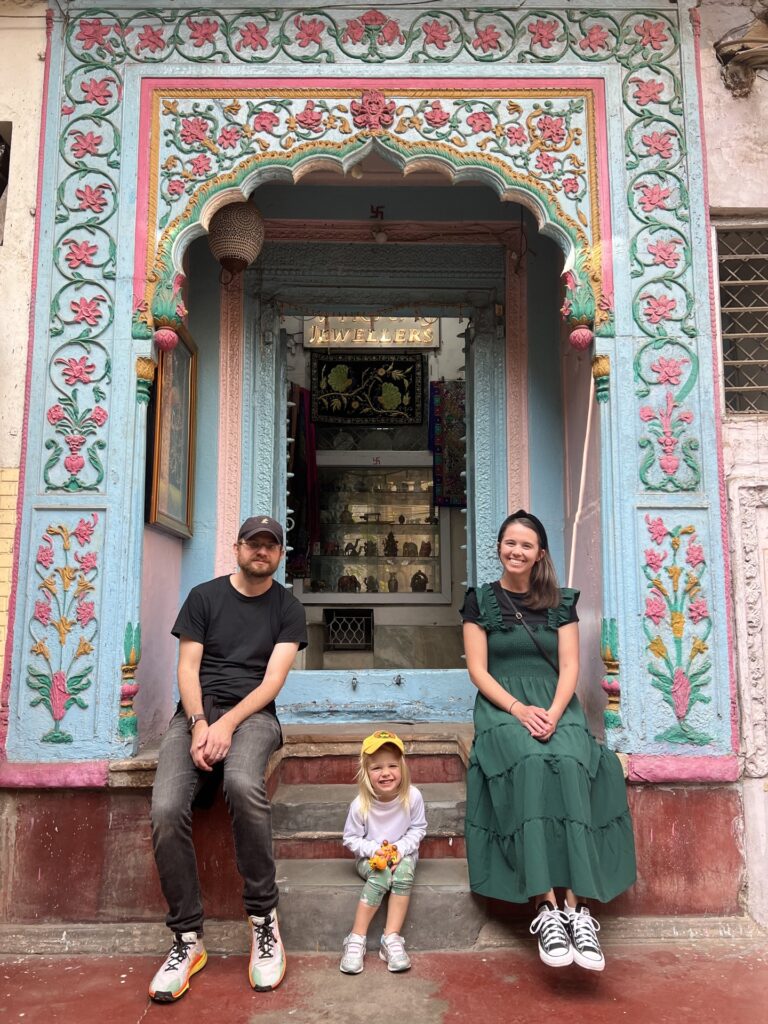
Is India good for kids?
Yes! Now let’s get on to the fun part!
As a general rule, my definition of a destination being “good for kids” is that kids can (and will want to) do all of best things that a place has to offer. Usually that means your itinerary will look roughly the same whether you’re going with kids or without kids.
India absolutely met that standard. We didn’t have to miss out on any experiences just because we were traveling with a kid, and we didn’t have to add “kid friendly attractions” just to ensure our kid had a fun time.
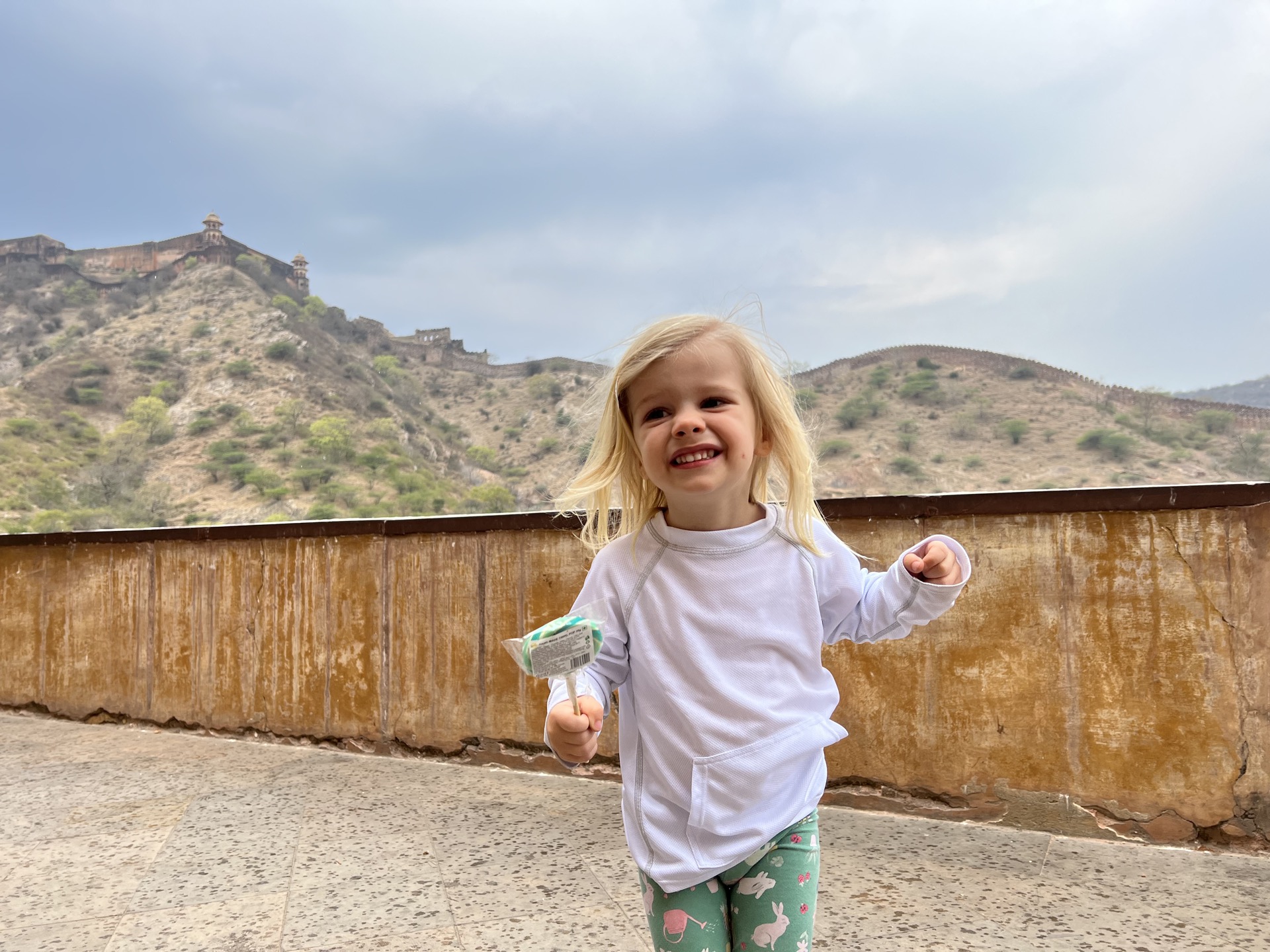
Our toddler loved everything India had to offer. They were thrilled riding in a rickshaw through Chandni Chowk in Delhi and they danced their way through the gardens at the Taj Mahal in Agra. They were thrilled to discover India has lollipops when they earned one at the Amer Fort in Jaipur, and they are still talking about how much fun they had at Holi in Udaipur . And don’t get me started on the hotel pools, which I do know are everywhere but hit different in India.
Then there’s the fact that they love kids in India – like a lot. It is one of the most kid-friendly countries we’ve ever been to, beating out countries in the Middle East that also really love kids (like UAE and Qatar). And kids weren’t just tolerated, they were fully welcomed everywhere we went.
Our child was treated like royalty at every hotel we stayed at, earning toys and desserts at every interaction. The hotels also had kid’s areas, kid’s pools (with floaties!), kid’s menus, cribs and high chairs, which made staying there with a child seamless and easy.
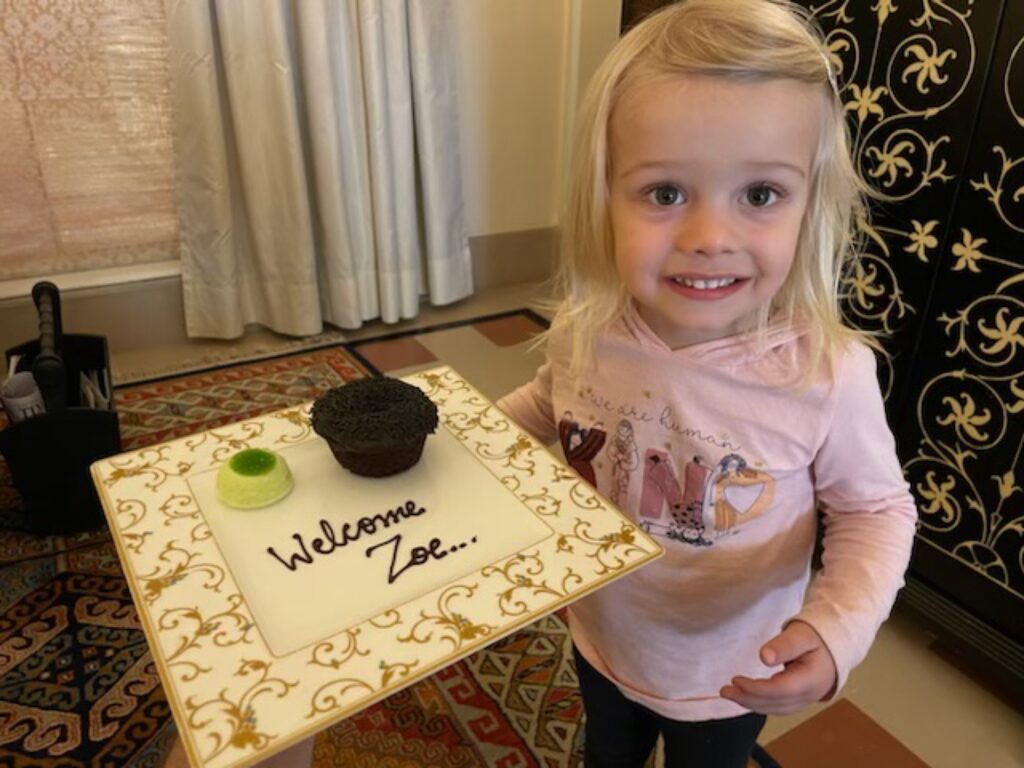
Our toddler also happens to be white and blonde, which drew a lot of attention. We were frequently stopped by strangers who wanted to take photos with us. This is common in India around Asia. For the most part, people were extremely respectful, and always asked for permission first.
However, they did often assume that a “yes” meant they could physically hold our child. Our toddler is pretty nervous around strangers and rarely was up for this. (Except during Holi when they let strangers pass them around for a good 10 minutes and it actually totally saved the day.) They would happily take pictures if I held them and also did pretty well posing and playing with other kids.
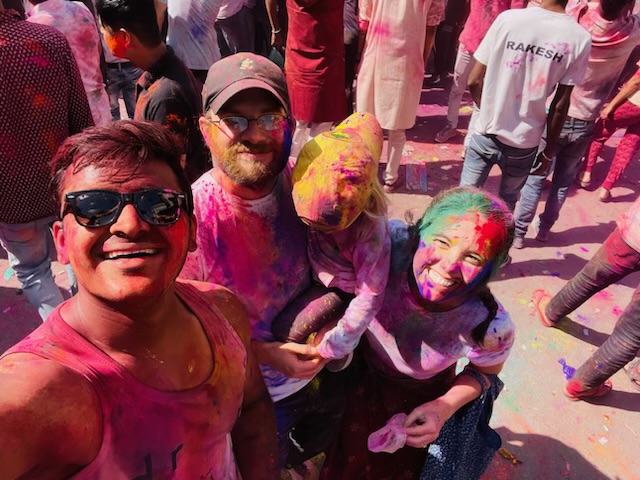
Which cities in India are best for traveling with kids?
India is a huge country and we’ve barely scratched the surface. But if you’re traveling to India with kids and it’s your first time to India, I can 100% say that the Golden Triangle is the way to go.
The Golden Triangle is the most popular tourist route in India and for good reason. It comprises Delhi, Jaipur and Agra. All three of these cities are a little bit different and a whole lot interesting. Delhi is the largest city of the three and has the most to see and do. It will also likely hit you with the most culture shock. Jaipur is quintessential Rajasthani, which is what I always picture when I think of India with the bright colors and tuk tuk traffic. And then there’s Agra, famously home to the Taj Mahal.
This route is really well traveled, which makes it great for families. It’s easy to travel between each city, there’s a good selection of hotels to choose from, and the cities are jam-packed with beautiful and interesting things to do. We personally spent three days in Delhi , two days in Jaipur , three days in Udaipur , and 2 days in Agra.
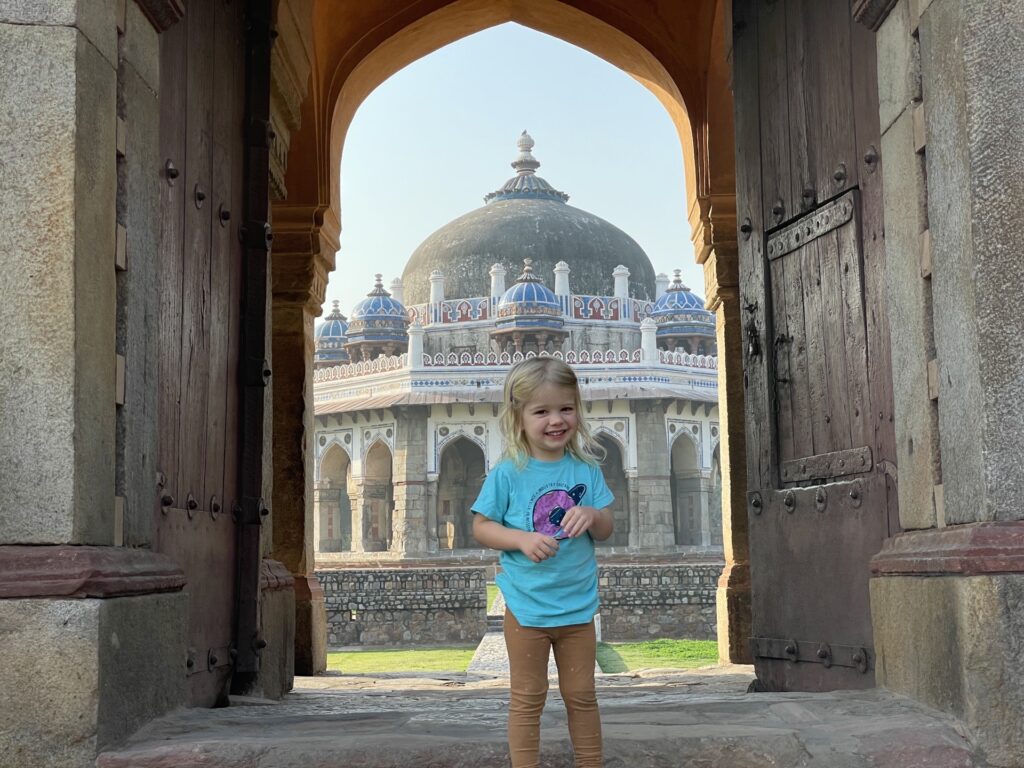
If you have extra time, you might want to tack on an extra city or two. We personally added Udaipur, which is the sweetheart of Indian cities. (I swear, there is not a bad thing written about Udaipur anywhere on the internet.) Udaipur is good for kids because it’s more relaxed and has a lot more nature and outdoor activities.
Another tempting option is Ranthambore National Park. It’s straight south of the Golden Triangle, and you can take a safari adventure for anywhere from 3 hours to two weeks. They technically don’t have age restrictions, so young children are welcome.
Getting Around India with Kids
Getting around India with kids can be tricky, but it is doable with the right planning.
The first thing to consider is getting around within a city. How will you get to your hotel from the train station or airport? How will you get to the different attractions and restaurants from your hotel each day? If you’re traveling with kids, you have two main options: cars and tuk tuks.
Then there’s the challenge of getting from one city to another. You can hire a driver, but India also has a very thorough rail network. Taking the train between cities is a cheap and convenient option, and can add to your adventure. Flying is another option, but don’t let the short flight times fool you.
Let’s look at all of these modes of transportation.
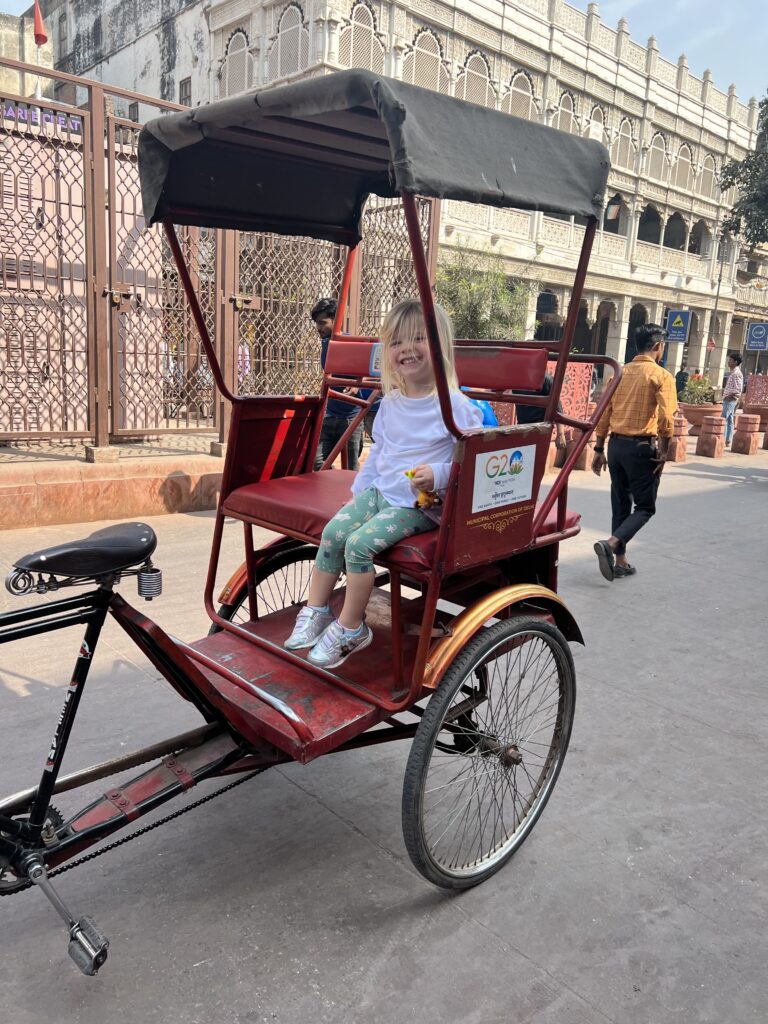
Kids and Car Seats in India
Usually we recommend using public transportation to get around cities with kids. However, that wasn’t ideal in India. Some cities did have Metros, but they were not very thorough. And with the exception of Udaipur, a lot of India wasn’t very pedestrian friendly. That meant that getting around required wheels. And when it comes to kids, wheels usually means a car seat.
Car seats are not legally required in India. Technically, you could just skip the car seat and ride in any taxi or Uber with your child. If you’re like us though, one look at Delhi’s chaotic traffic scene and you might immediately rule out that option.
Our next idea was to reserve a car service that had a car seat provided. (This was our approach for two days in Santo Domingo .) Unfortunately, every car service we reached out to in India didn’t have car seats.
So instead, we brought our own. We invested a hefty amount into a Pico portable car seat , which we thought might save us some money in the long run. The car seat itself was great. We could easily install it into any car whenever we needed to, which meant we could safely get from one place to the next.
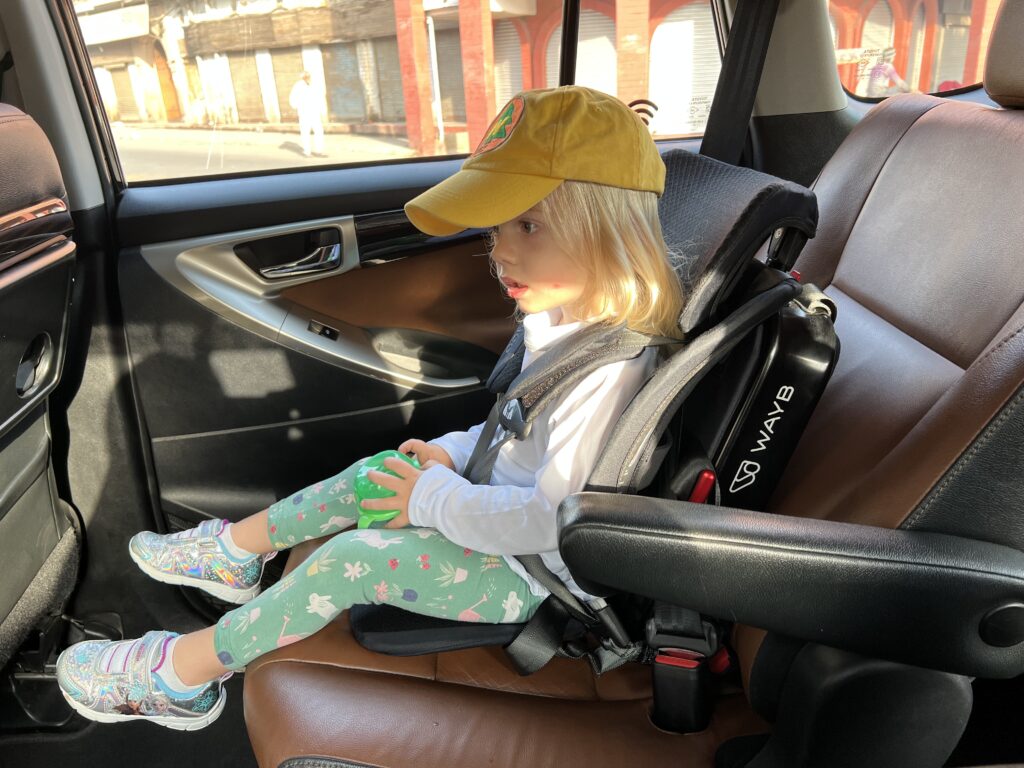
Unfortunately, that still meant that we couldn’t easily rely taxis or Ubers for sightseeing unless we wanted to carry around the car seat all day. At only 8 pounds and foldable into a nice backpack, that actually wasn’t the worst thing. However, many popular attractions in India don’t allow large backpacks, so we couldn’t always bring it anyway.
So what’s the answer to getting around with kids in India? Unfortunately, if you want to use a car seat, the best option is to bring a car seat and use a car service. That way, you can leave your car seat in the same car as you visit different attractions. (So no, the expensive car seat didn’t save us any money this time.)
Many high-end hotels in India can arrange a car service for you. We personally booked cars through The Oberoi (in Delhi , Udaipur and Agra ) and Jai Mahal Palace in Jaipur to take us around to different destinations and pick us up from the rail stations. Alternatively, you can hire a private driver through a third party, which can be cheaper but more complicated.
Tuk Tuks in India
Another unique way to get around India is by tuk tuk. These little auto rickshaws are one of the most popular modes of transportation in India. The prominent style and color varies by region, so you’ll find yellow and green ones all over Delhi and brightly decorated ones in Rajasthan.
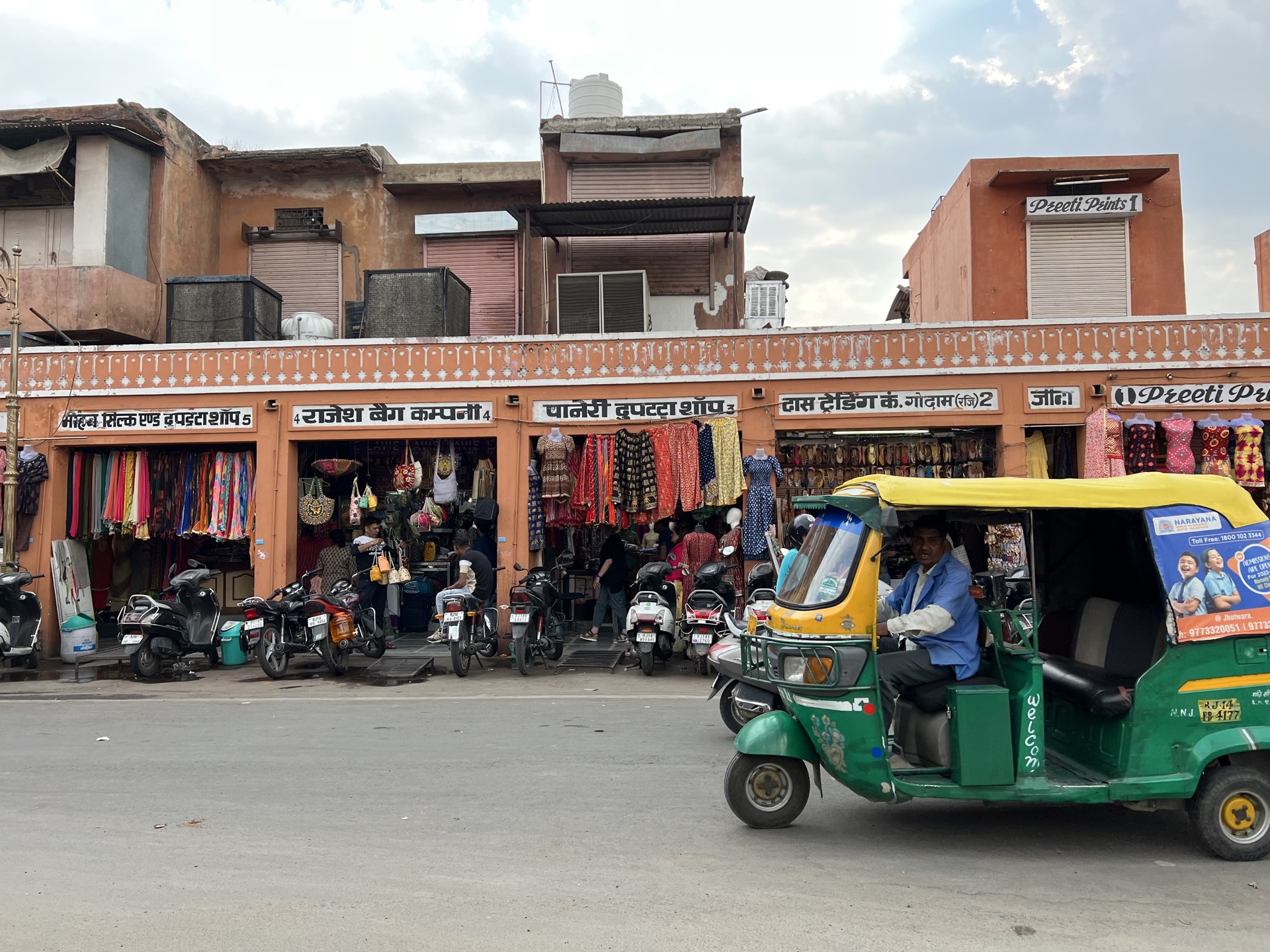
Tuk tuks usually hold 2-4 people, depending on the style, and max out at speeds of about 25 miles per hour. Tuk Tuks are a good, cheap option for covering short distances around a city.
The lack of car seats, seatbelts and doors is enough for some parents to rule out tuk tuks all together. We personally were comfortable riding in tuk tuks with our 2-year-old. It was our main mode of transportation in Udaipur specifically, which usually was less than 0.5 mile at low speeds with little traffic. We probably wouldn’t take a tuk tuk on the highway, but we were okay with it for short trips.
To hail a tuk tuk, flag down a driver and tell them where you want to go. Before you get in, ask how much it will cost and be prepared to pay in cash. Tips are appreciated, but are not required if you agree on a set price for a short trip.
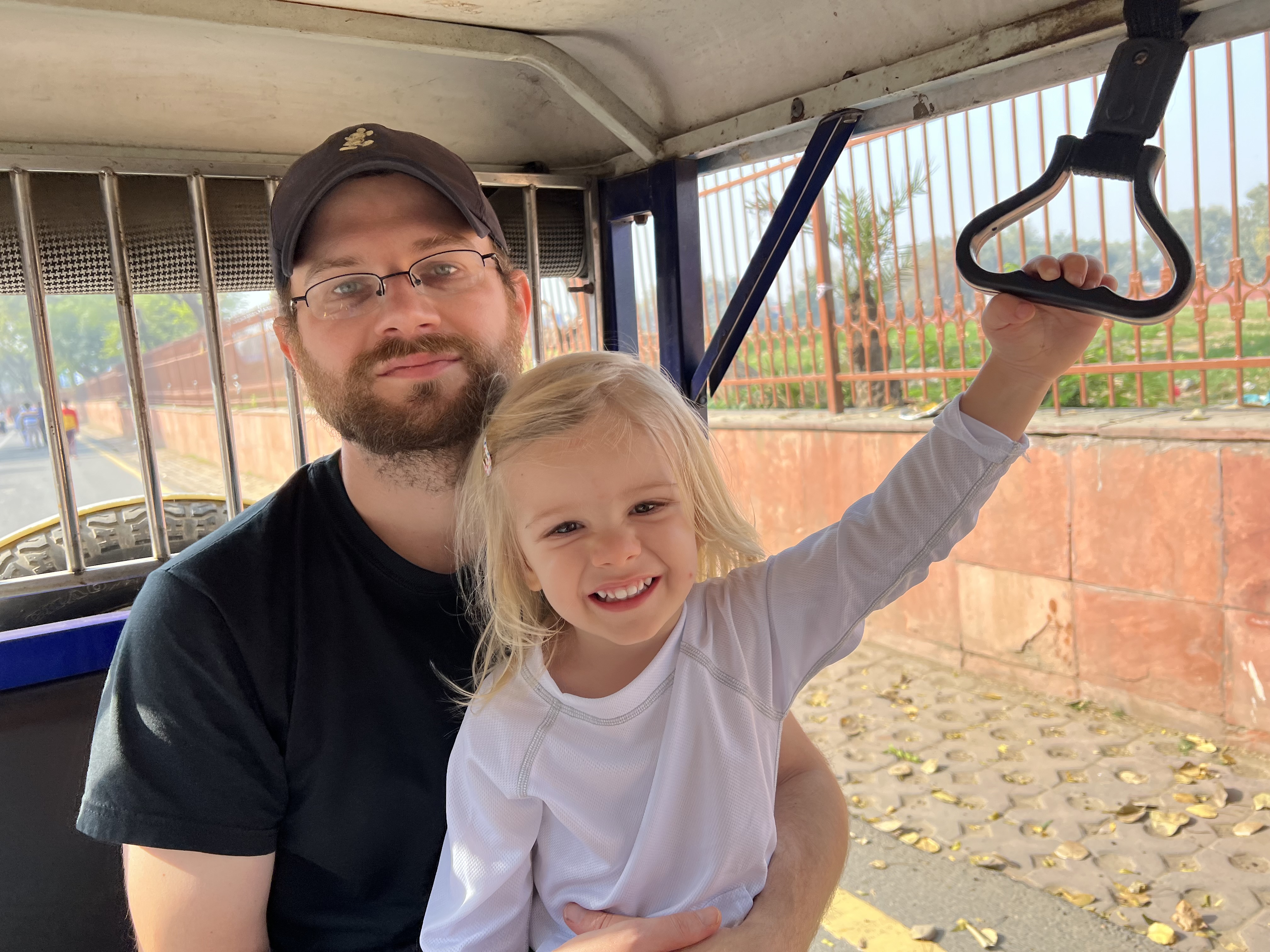
Riding the Train in India with Kids
Indian Railways is an efficient way to get around India, and it can be a good option in your traveling with kids. Here’s a list of the train rides we personally took with our 2-year-old.
- Morning train from Jaipur to Udaipur
- Overnight train from Udaipur to Agra
- Day train from Agra to Delhi
If you’ve seen the viral images of packed Indian trains, don’t panic. This is partly accurate, but it is entirely dependent on your travel class. To avoid any travel chaos, book the highest class available, which is usually still pretty cheap by Western standards. Be sure to book an AC car (regardless of your travel season) with assigned seats. To buy tickets, head to 12GoAsia for the most streamlined experience and great customer service. ( Not sponsored, we’re just big fans. )
In our experience, the trains in India were always on time and very clean. The stations themselves were at times overwhelming (crowds, intense poverty, dirty), but they were easy to navigate and all signs were in both Hindi and English.
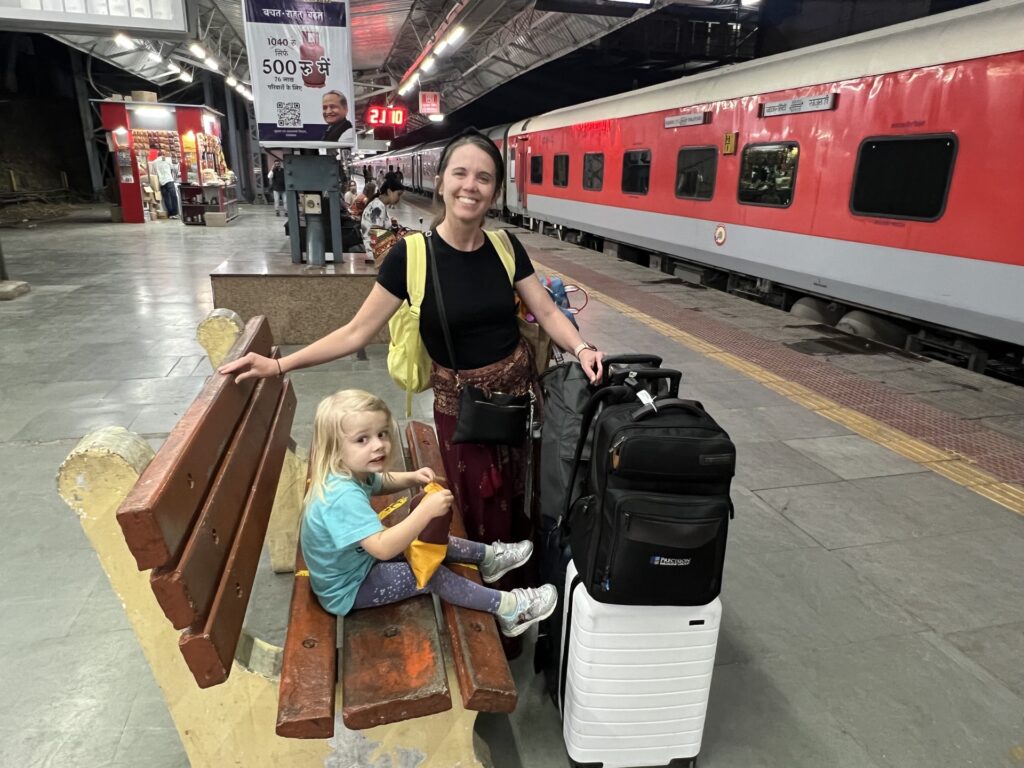
India is a big country, so the journeys can be long, even by train. Personally, we prefer longer trips with a toddler on a train compared to a car. We don’t have a car, and our little one isn’t used to being strapped in a car seat for long periods of time. On the train, they can get up and move around as needed, which is better for all of us.
Another downside to the trains in India is that the times are not always ideal for travel with a toddler. That’s why we ended up on a really early train and an overnight train.
Am I glad we took the overnight train? Yes. Would I recommend it? Maybe not. Our review linked above discusses some of the chaos we encountered on that train. I’ll admit that I don’t think the overnight train is the best option for all families, especially if you have a light sleeper. If you’ve never taken an overnight train before, I wouldn’t start with one in India with a kid.
Daytime trains though, I would absolutely recommend for intercity travel in India with kids.
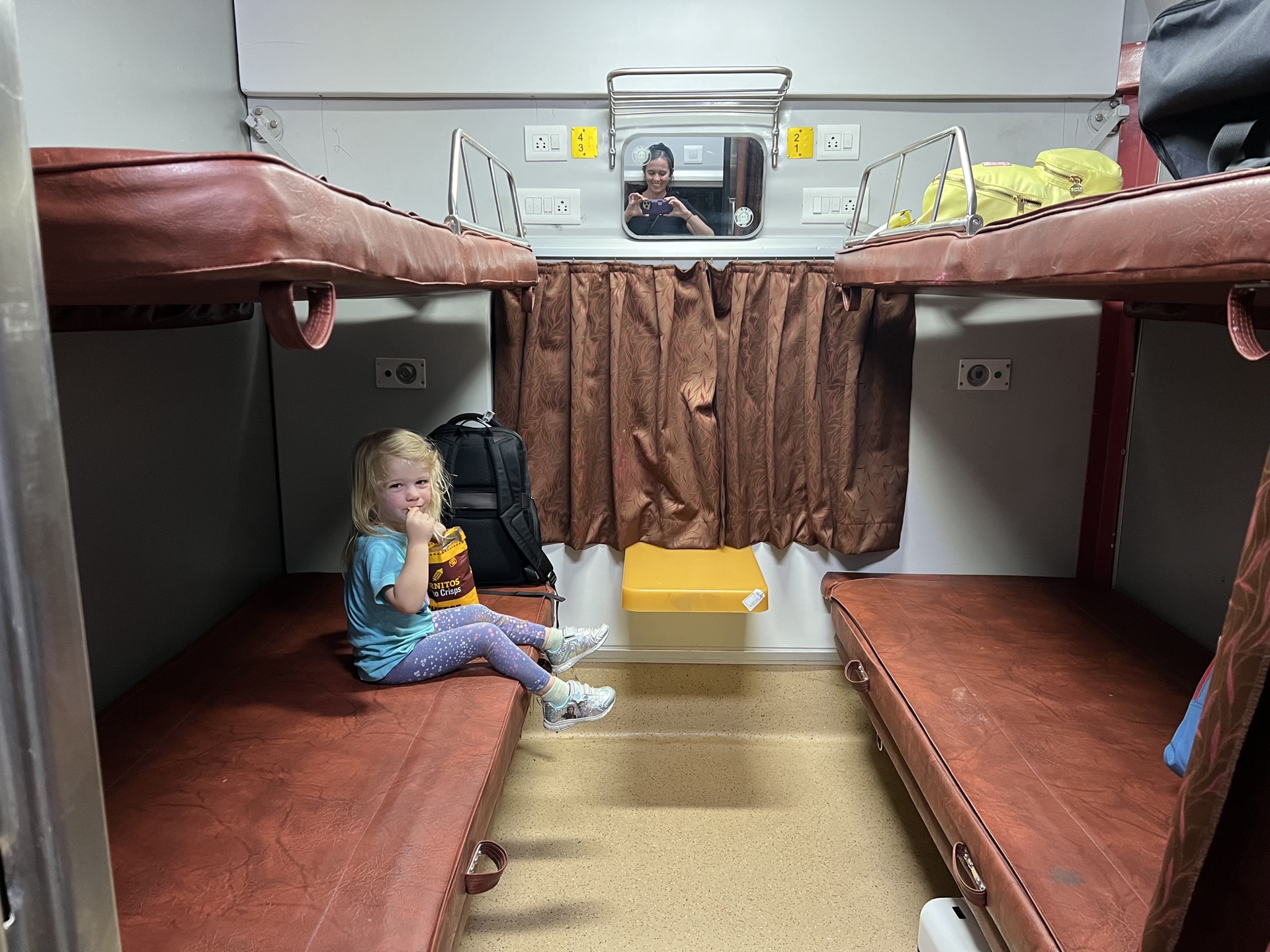
Plane Travel in India
Flying between cities in India is also an option. Domestic flights in India can be really cheap on carriers like IndiGo or SpiceJet. The flight times compared to train times might sound really tempting, too. The flight from Jaipur to Udaipur is only an hour, versus 7 hours by train.
I would still advise you to avoid or limit air travel in India. First, the airports are usually further away and harder to get to than the rail stations. Second, Indian airports are kind of a nightmare in terms of security and lines. When you factor in travel time to and from the airports and the hours early you have to arrive for security, you’ll likely find that it takes just as long and has even more steps than the train.
We had originally planned to fly from Jaipur to Udaipur, but once we did this math, we settled on the 7 hour train instead. When we flew out of Delhi to Doha at the end of our trip, we were immediately grateful that we didn’t have any other India airport experiences.
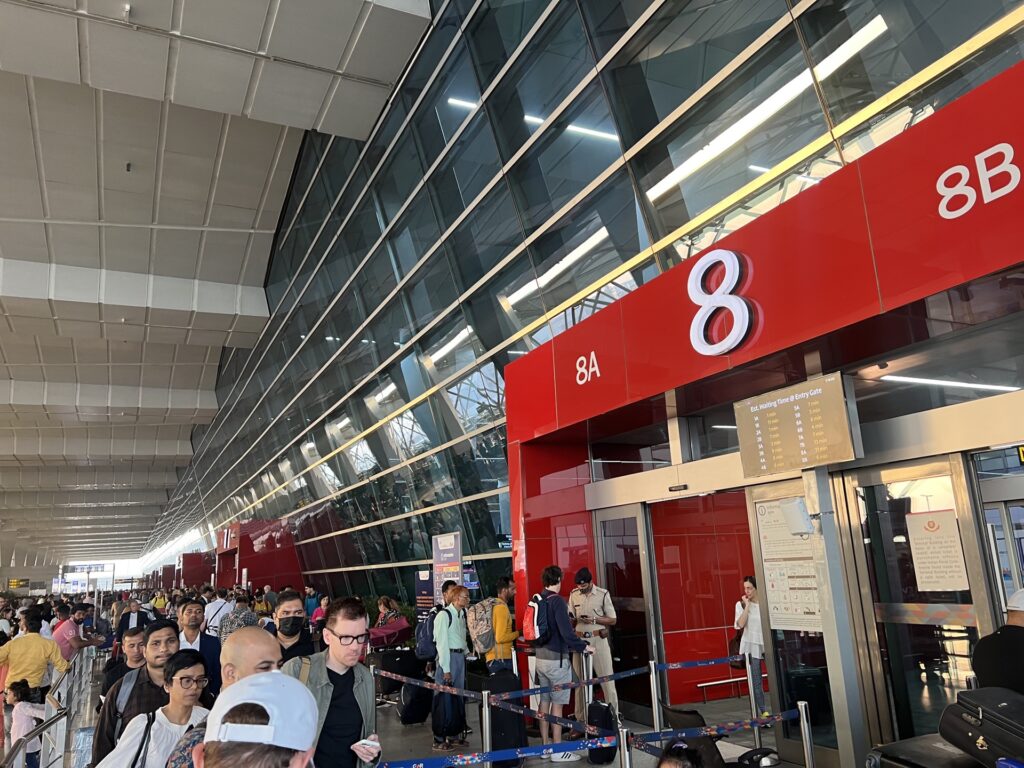
Eating in India With Kids
When it comes to kids, there are two main concerns for food in India: food safety and cuisine.
Food safety is the most important thing. Tap water in India is not safe to drink and can often cause traveler’s diarrhea. This is inconvenient and uncomfortable at best, and dangerous and trip-ending at worst.
Fortunately, there are ways to protect yourself that include more than just not drinking the tap water.
- Only eat fruits and vegetables that have a thick peel that you peel yourself, like bananas or oranges. (Produce might have been washed in contaminated water.)
- Stick to cooked, hot food.
- Use bottled water to brush your teeth, even though you’re not swallowing the water.
- Avoid street food. (I know it’s hard! You might be okay, but you might not be.)
- Stick to restaurants that have a lot of positive reviews, preferably from foreigners.
- Skip ice and fruit wedges in drinks and cocktails.
- Pack stomach meds (Children’s Mylicon, Pepto Bismol and Tums) and Pedialyte packets just in case anyone does get sick.
Some parents also worry about the local cuisine. What will my kid eat? Will it be too spicy? Will they like it? I think people think that kids in India will eat nothing but rice and dal and mango lassi every day. Let me assure you that (if you choose), your child can eat pasta and pizza everyday in India just like they do at home.
Very early in our travels, we learned that you can find western food literally everywhere, and India is no different. There is a McDonalds in Chandni Chowk in Delhi, a Pizza Hut in Jiapur and a Starbucks in Udaipur. I’m not saying you’ll want to or need to resort to American fast food, but think of it as a safety net.
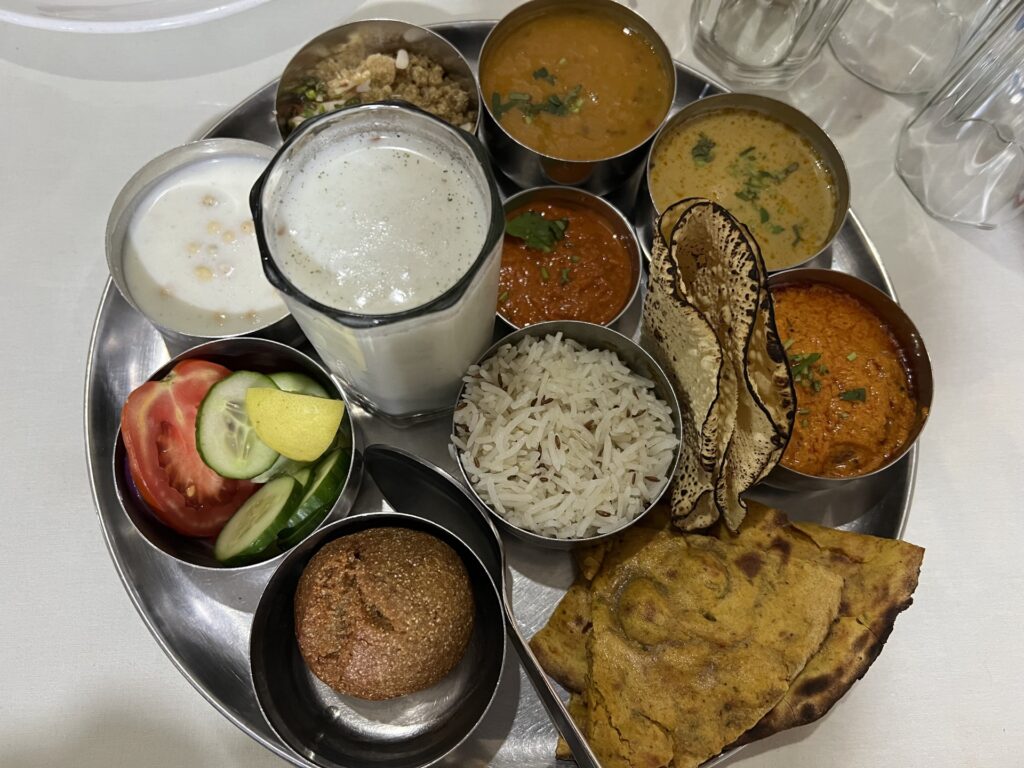
Relevant to both of these food concerns, we ate almost all of our meals in our hotel restaurants. We were confident the food was as safe as possible, but we still stuck to fully cooked foods only. The menus at all of our hotels had Indian food that we could enjoy as much as possible, but also a wide variety of international foods that appealed to our little one. Our 2-year old dined on their finest veggie sliders, pizza, and of course, the occasional dal and palak paneer.
Other than missing fresh fruit (because we chose to avoid it), the only thing we sort of struggled with in India was snacks. Our toddler is a snacker, so we always needed to get something small while we were out and about. We only ate packaged foods, so that meant they at a lot of chips and juice boxes. That obviously isn’t the healthiest option, but it was a 2-week trip and that’s just what we needed to do.
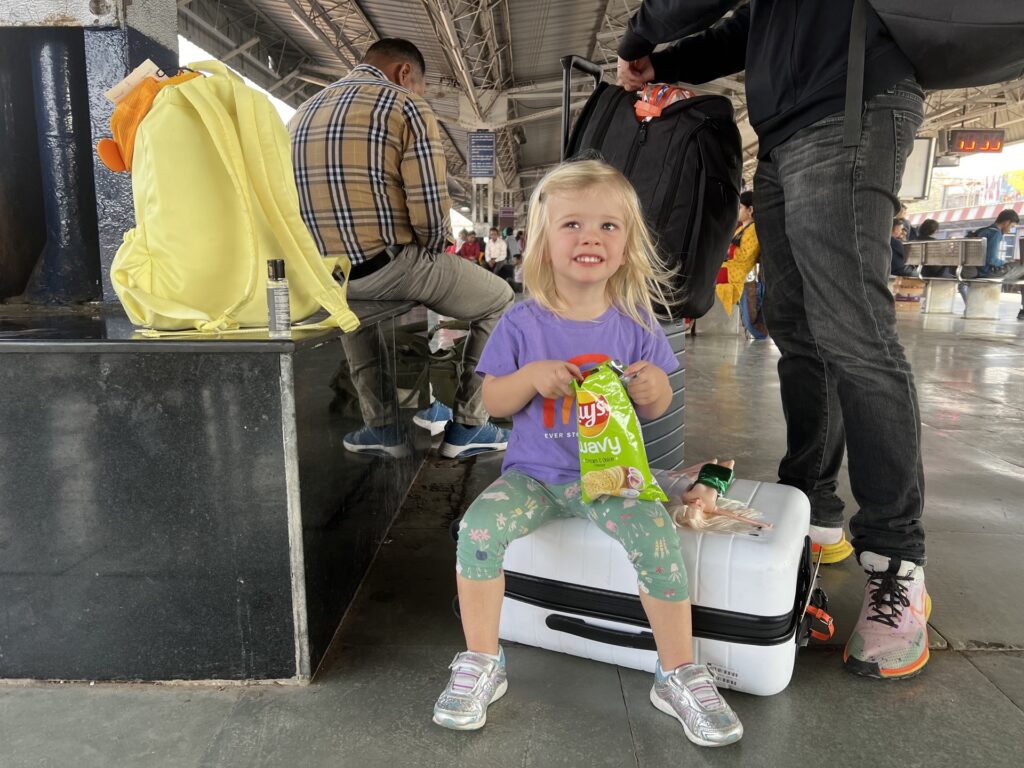
What is the best age to bring a kid to India?
How old are your kids? That age is the best age to bring them. I’m kidding, but also not.
Honestly, I think a trip to India can be great for any kids around 2 and up. I say 2 and up because it’s not the cleanest place. I wouldn’t want to be there with a crawler or wobbly walker spending too much time on the ground in public places.
Many of the tourist sites actually did have changing tables, but I can’t vouch for how clean they were. We personally handled most of our diaper changes on our portable changing mat anywhere we could find space (grass in the park, behind a car in a parking lot, a step of a step well, etc.).
Otherwise, India is great for even the youngest of kids. Even at 2, our toddler had a great time. I think they probably loved Udaipur most because they got to ride tuk tuks, take the “Skyliner” (gondola to a hilltop temple), and play Holi, but they found fun everywhere they went.
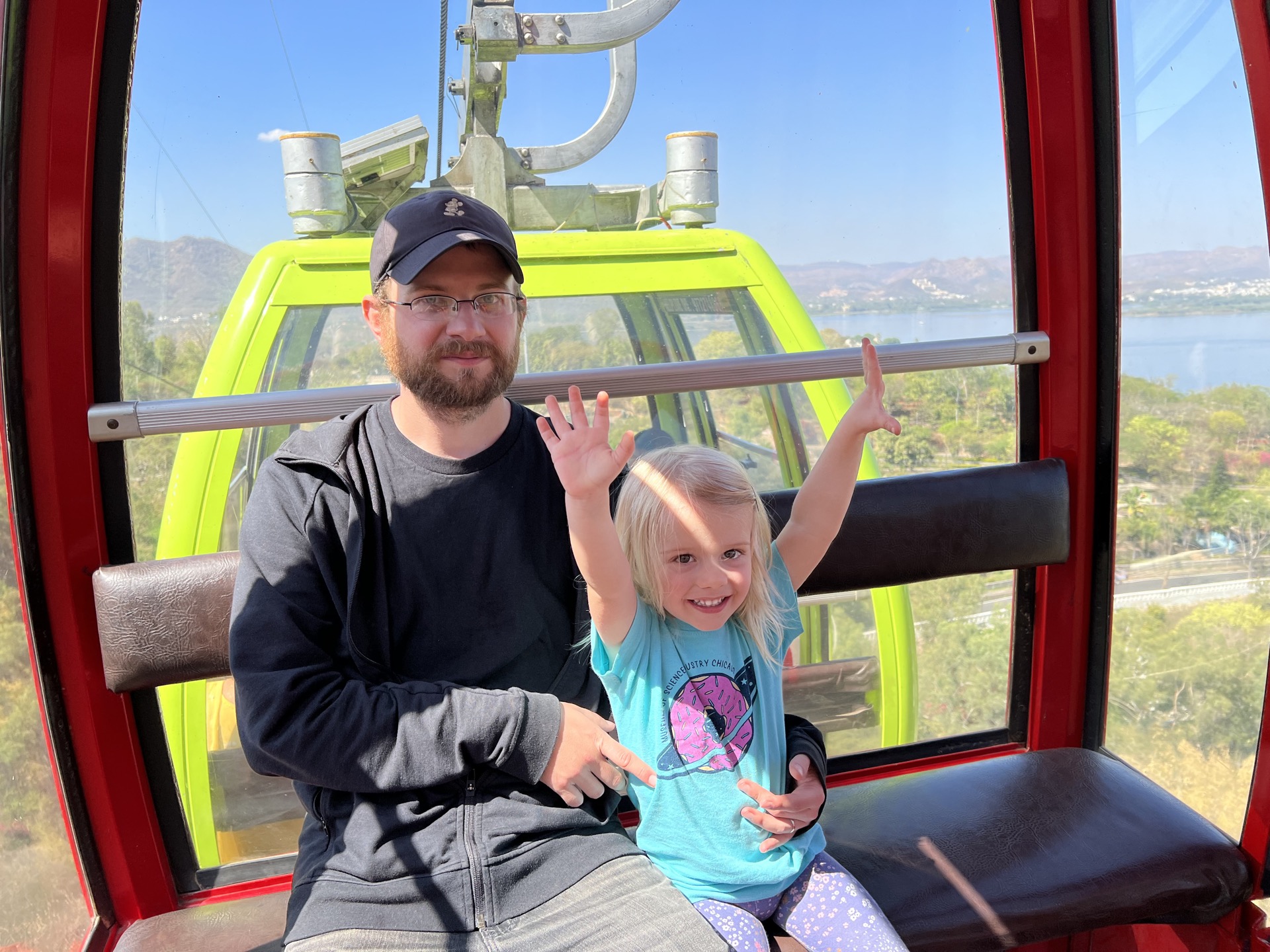
I think it’s less about how old your kids are and more about how comfortable you all are with travel. If you’ve never traveled as a family before, I’d probably start with an easier city (maybe London or Amsterdam ) first.
I would also suggest waiting until you can financially afford to do India as a bougier trip, especially if you’re going with little kids. A nice hotel will make all the difference when it comes to how much you all enjoy an India trip. If you stay at a nice hotel, no matter how old your kids are, you will be fine.

Part 2: Plan Your Trip
In the above section, we covered more broadly what it’s like to travel to India with kids. Now we’re moving onto the more granular details of planning your trip. These next sections go over everything you’ll need to know to finalize, book and prepare for a trip to India with kids.
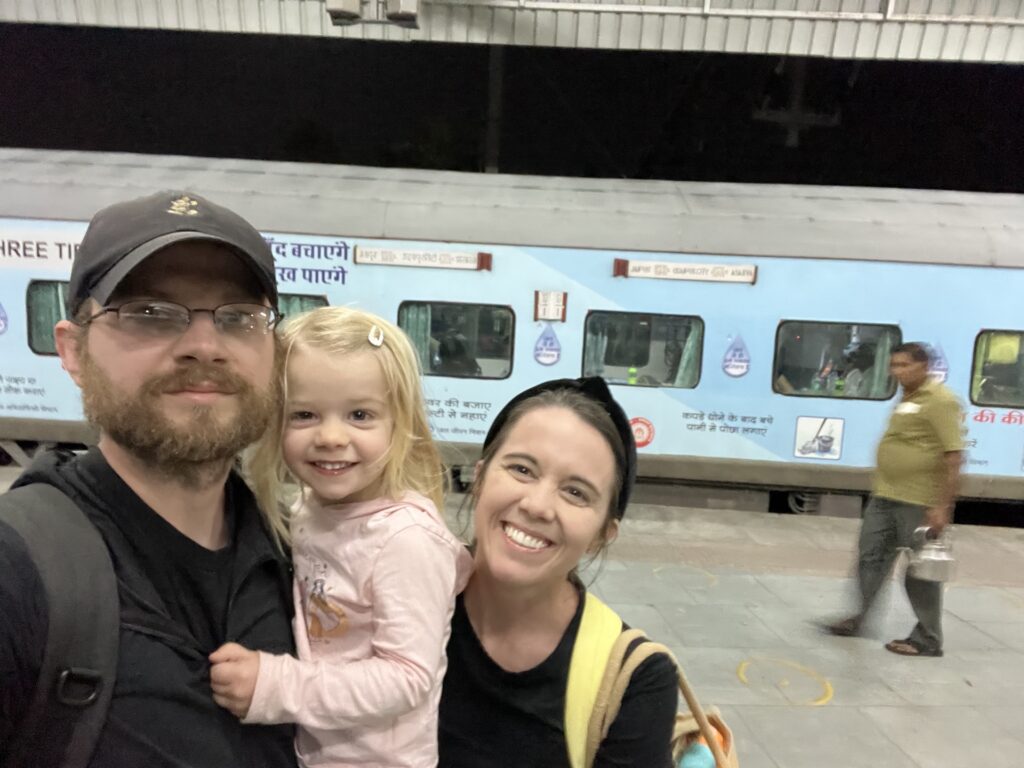
Plan Your Route
Start by choosing your cities. How many cities you can fit in will depend on how long you have and what type of traveler you are. Some people are fine changing hotels every few days, while others prefer to park it at a home base, focus on one place and then take day trips as needed.
When you’re choosing your cities, be sure to plan for how you are going to get between cities. Some cities are easy to get to by train, some require a flight, and sometimes hiring a driver might be the best option. I’d recommend cities that are accessible by train or by car (with a driver).
If it’s your first time to India, we’d suggest sticking to the Golden Triangle, which includes Delhi, Jaipur, and Agra. You can do the Golden Triangle in either direction. Agra is primarily the Taj Mahal, so you could do it as a day trip from Delhi instead as long as you don’t care about sunrise.
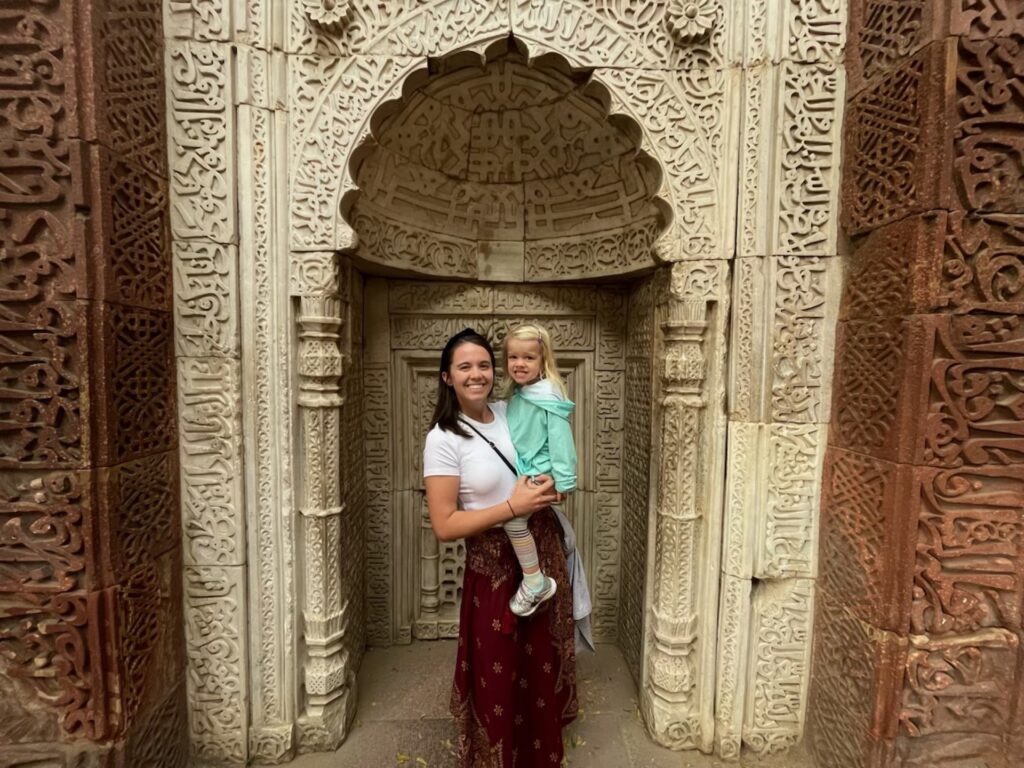
When To Go & How Long to Stay
The best time to visit India is October through March. June through September is monsoon season, which you definitely want to avoid, and April and May start to get really hot.
The other thing to consider when planning your trip is holidays. We celebrated Holi in Udaipur , and it was the highlight of our trip. If we come back to India one day, we’d love to plan it over Diwali. Holidays can offer a special local experience, but they can also have a negative impact on your trip. Be sure to account for travel delays, crowds, and closed attractions that may result from the holiday.
For a family trip to India, I would plan for at least 10 days, but ideally closer to two whole weeks. With two weeks, you can choose to do everything slower or you can add an extra city.

Here’s a look at how many full days I would spend in each of these popular cities in India. This does not account for travel days, which will likely take a full day between each city.
- Delhi: 3 days
- Jaipur: 2 days
- Udaipur: 3 days
- Agra: 2 days or a day trip from Delhi
If you are short on time, I would suggest skipping Jaipur. It was our least favorite city and our toddler loved the other places so much more. If I had 7-10 days, I would probably split my time between Delhi and Udaipur and then take a day trip to Agra for the Taj Mahal.
Choosing a Hotel in India For a Family Trip
At the risk of sounding dramatic, I would argue that your hotel selection can make or break your trip to India with kids. More than anywhere I’ve ever been, I needed a hotel oasis in India. I needed a comfortable, calm and quiet place to recharge after mornings exploring the busy cities. If you’re traveling with a kid, especially a younger one, this is even more important.
India can be intense and a bit of a culture shock, depending where you’re coming from. I wanted to give it my fullest attention so I could fully appreciate it. Because I had the the chance to reset at our nice hotels, I was able to do that. I think the country deserves that. I firmly believe that we loved India so much more because we could approach each day with a fresh set of eyes.
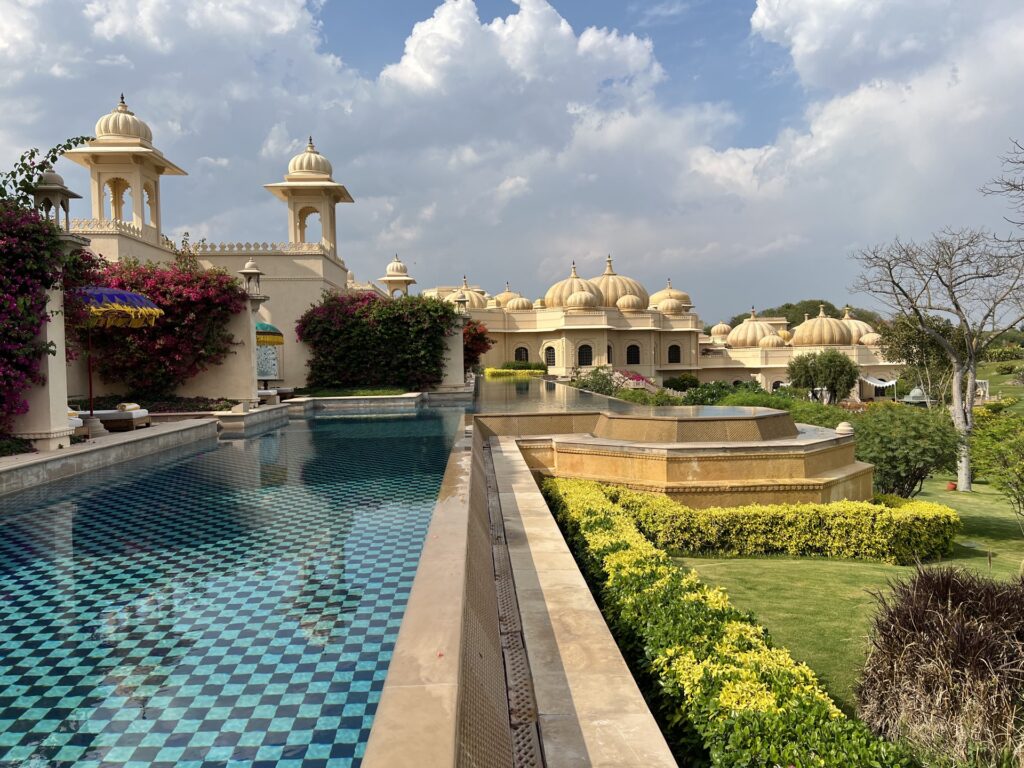
So, what should you look for in a hotel in India? I would prioritize hotels that have all-day dining and a swimming pool. Double check that the hotel has cribs available if you’ll need one. It’s also helpful if you choose a hotel that offers a car service or can help coordinate one for you. That makes getting to the hotel from the train station or airport easy, and it can make your touring days that much smoother.
Here’s a look at the hotels we stayed at in India with our toddler. As you can see, we erred on the side of luxury and it made our trip incredibly pleasant. (If anything, I’d argue that it made our trip too sterile, but I don’t regret it.)
- Delhi: The Oberoi New Delhi and JW Marriott New Delhi
- Jaipur: Jai Mahal Palace (no cribs)
- Udaipur: The Oberoi Udaivilas
- Agra: The Oberoi Amarvilas
I would recommend all of these hotels except the Jai Mahal Palace, which we personally didn’t love.
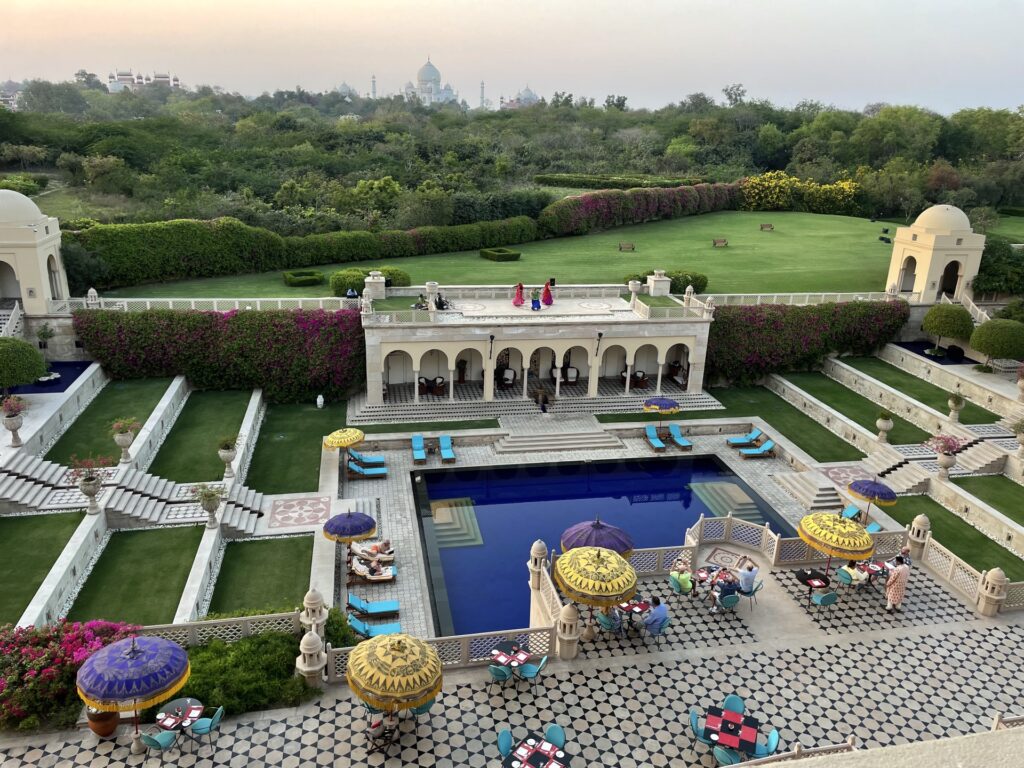
Selecting Flights to India with Kids
India has 34 international airports, but Delhi and Mumbai are by far the busiest in the country. Given how hard we’ve pushed the Golden Triangle route, we’d recommend flying to Delhi.
Many international carriers fly to Delhi, including the country’s flag carrier airline, Air India. Although we had a perfectly fine flight in Air India Business Class from Dubai to Delhi , it’s not necessarily an airline that you need to go out of our your way try on a long haul flight. Instead, I would suggest flying your preferred airline in your home country if they have flights to Delhi.
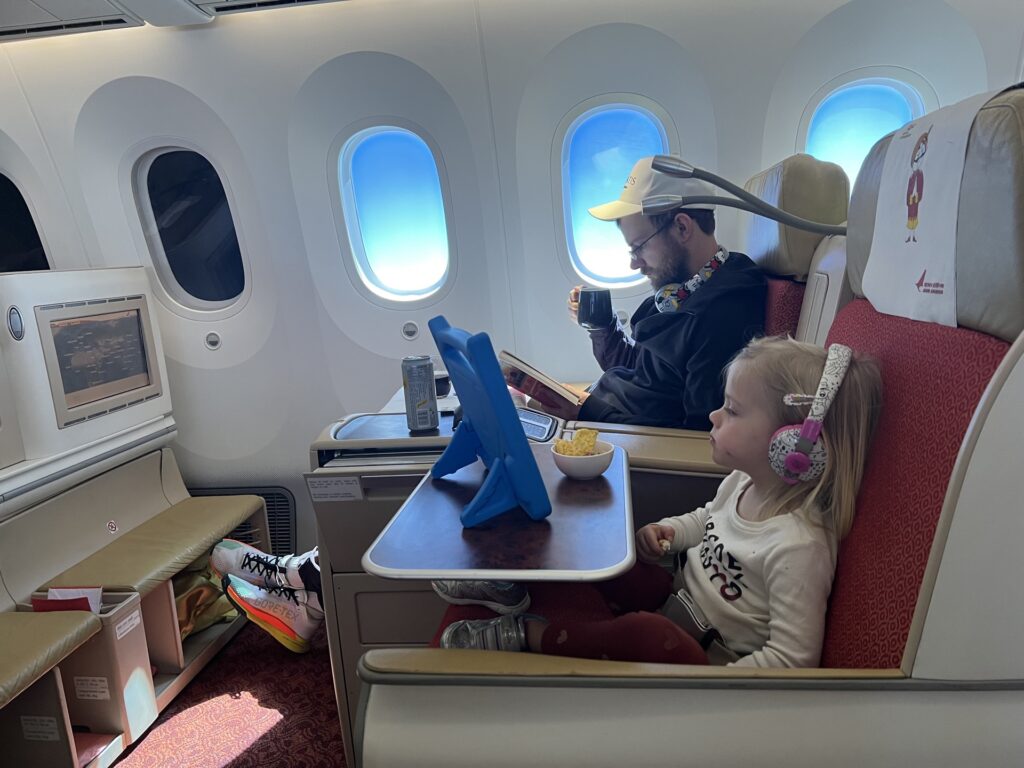
Now, if you’re coming from really far away (like the Americas or even western Europe), we have a hot tip that will be insanely helpful if you’re traveling with kids. Considering adding a buffer city on the front end of your trip to adjust to the time change and relax before diving into India. We flew from New York City to Dubai ( Business Class on Emirates ) and then spent four nights at Atlantis, The Palm , and it worked out perfectly.
It was then just a quick flight from Dubai to Delhi and our child was ready to hit the ground running in India. They were mostly adjusted to the time change, they were no longer groggy from the flight, and they were fully in vacation mode. Highly recommend!
The last thing to consider when booking your flights to India is the times. To help with jet lag, always fly during the day when you travel east to west and through the night when you travel west to east.
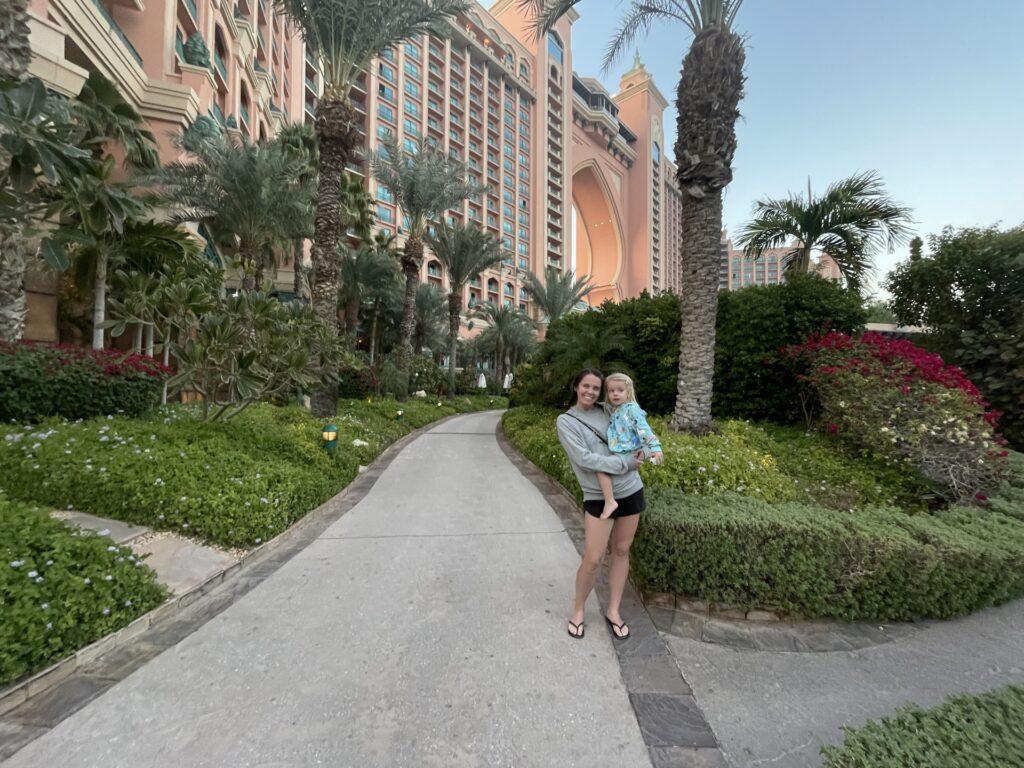
What Vaccines do Kids (And Adults) Need For India
India does not have any vaccine mandates, but you might want to get a few before traveling there. In the United States, the CDC recommends the following vaccines for travelers going to India. Other countries may issue different recommendations.
( Disclaimer : We are not doctors and this is not medical advice. Consult your physician or a travel clinic for professional recommendations.)
- Hepatitis A
- Yellow Fever
- Cholera (regional)
- Malaria (regional)
- Japanese Encephalitis (regional)
We were already up to date with most of these vaccines including: Covid, Hep A, Hep B and measles. We also already received Yellow Fever vaccines before traveling to Colombia a few years ago, but wouldn’t have messed with it just for this trip. Based on our travel plans (Delhi, Jaipur, Udaipur, Agra), we weren’t at high risk for cholera, malaria or Japanese Encephalitis. That left us with Rabies and Typhoid to consider.
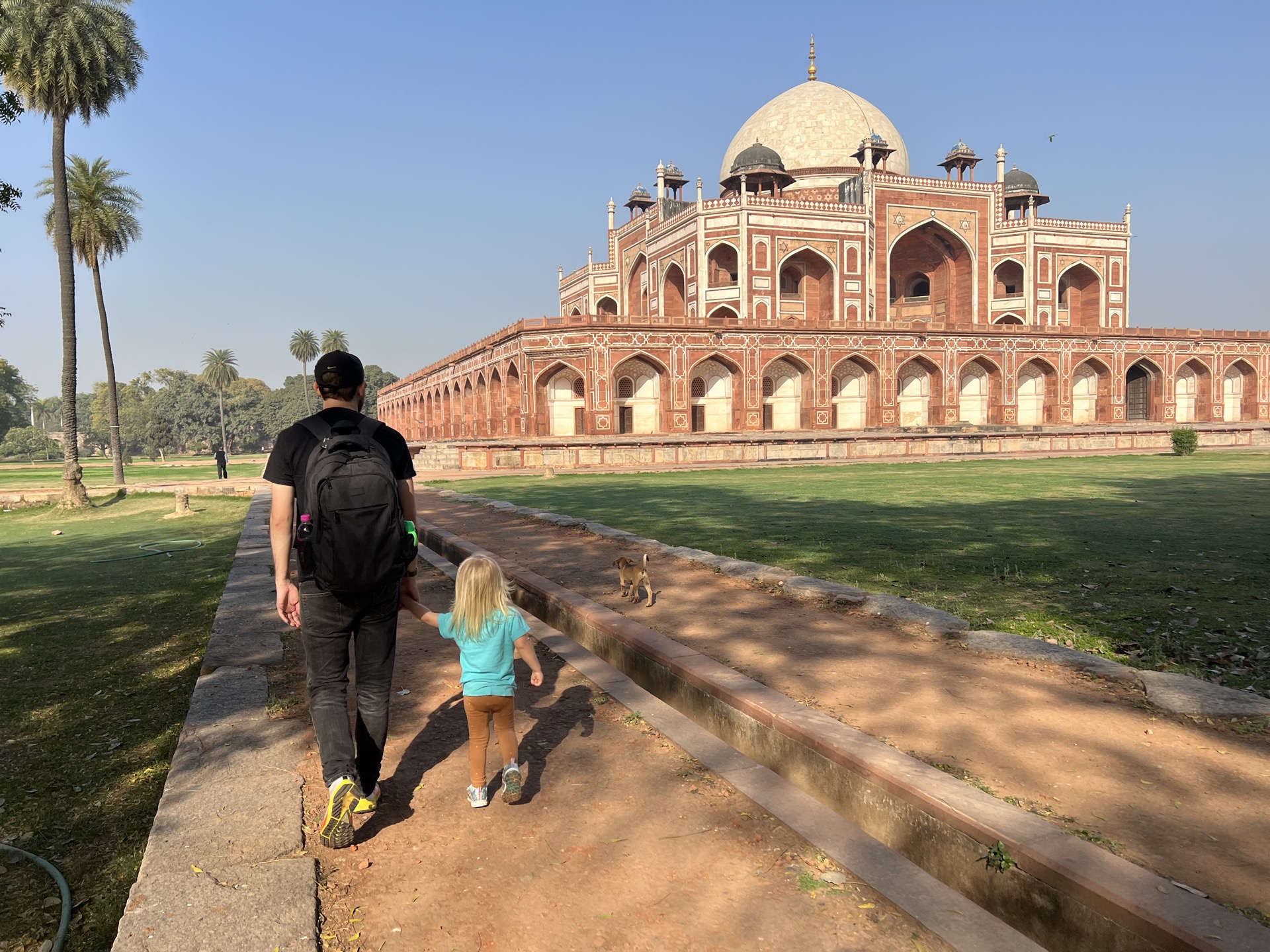
To help guide our decision, we scheduled a travel consultation with our pediatrician. If you want to do this for peace of mind, by all means go for it, but it turned out to be a waste of time for us. Our doctor basically just read the CDC website to us.
She wanted to be sure our toddler got their final Hep A vaccine (which they were already due for), but didn’t strongly recommend either Rabies or Typhoid. In fact, she actually had just traveled with her own infant to a country that also had a Typhoid recommendation and she didn’t have her child vaccinated.
We decided to skip the rabies vaccine. Stray dogs are definitely a thing all over India, but we assumed we would be able to stay pretty clear of them. Typhoid spreads through contaminated water, though, and that seemed like a risk that would be harder to avoid completely. We decided to get the Typhoid vaccine for all of us. Our toddler got it at our pediatrician’s office and we got ours at CVS MinuteClinic.
The Typhoid vaccine is expensive — usually costing $150 out of pocket. Our pediatrician charged us in full, but then we actually realized that our insurance covered it. We disputed the charge and got our $150 back that day. So be sure to check your insurance! Insurance did not cover our adult vaccines.
Getting a Visa for India
First and foremost, every member of your travel party, including children, will need a valid passport from your home country. Then, each traveler will need a tourist eVisa to enter India.
Tourists from most countries can request a Tourist e-Visa in three available durations (30 days, 1 year, 5 years). It’s not hard to get, but it can take time, so be sure to do it ASAP. We’d recommend getting this taken care of before you book you flight, just in case anything goes wrong.
You can apply for an Indian Tourist e-Visa online. You will need to submit one form for each member of your family. To complete the form, you’ll need a valid passport and passport photo. You’ll also need a credit card to pay the application fee, which will be $10 or $25 USD for a 30-day visa.
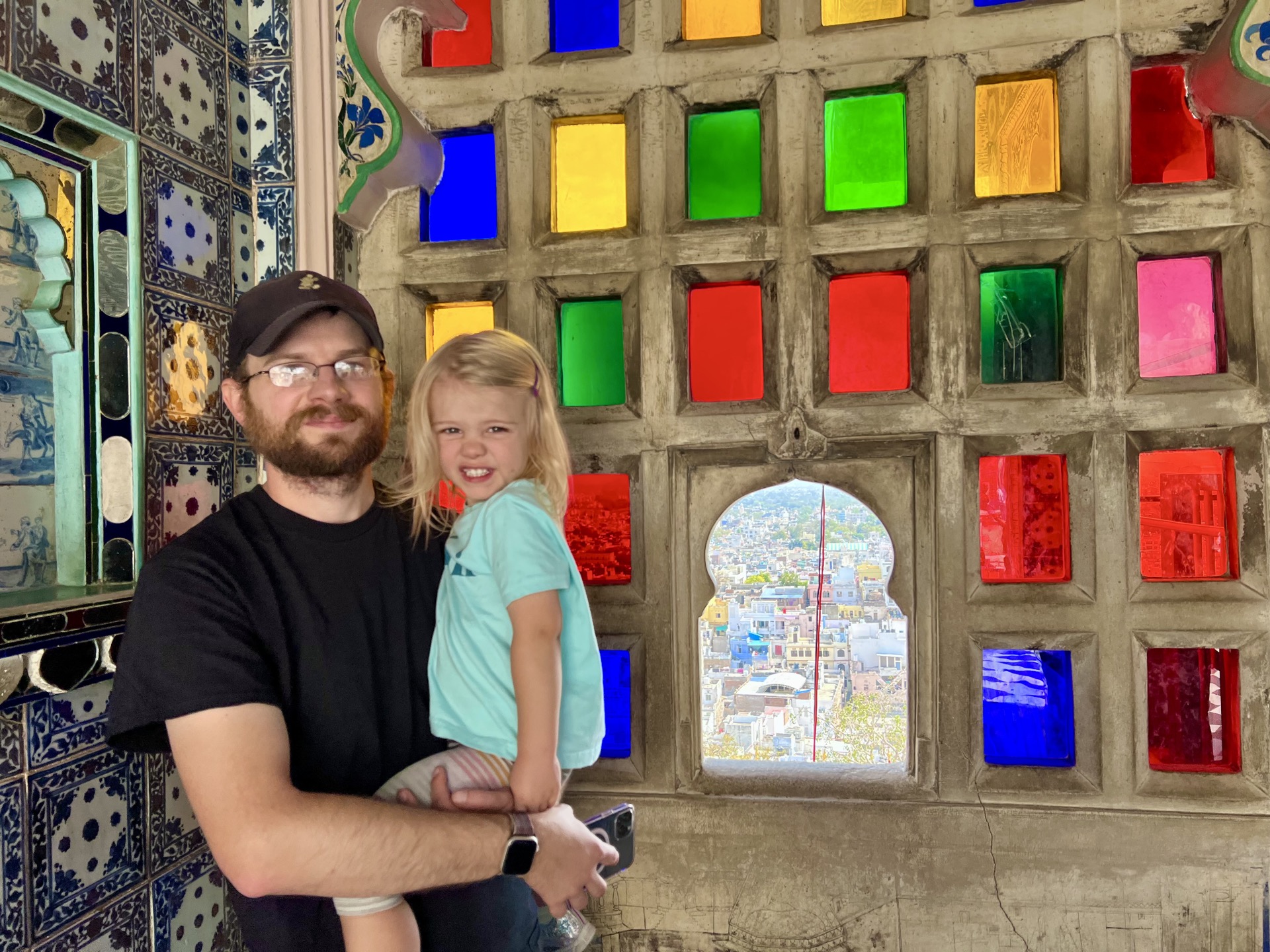
Planning Your Daily Itinerary
As you start piecing together your plans for each day, my best piece of advice is balance.
We have always been busy travelers. We’re not great at relaxing, so we usually try to see and do as much as possible when we travel. Even since we had our kid, we still usually pack our days pretty full, we just added a nap in the middle.
That didn’t work for us in India. We found that we only had enough energy to commit a half day to sightseeing in India and then we all needed a break. We decided we would get up early every day, spend the morning doing all the things, and then make it back to the hotel by 1 PM for lunch and nap.
During nap time, one parent would stay with the baby and the other would run in the gym, explore the hotel, or have a beer at the hotel lounge. Then we’d spend our afternoons swimming in the pool and playing on the playground before enjoying a relaxing dinner at the hotel. Balance.
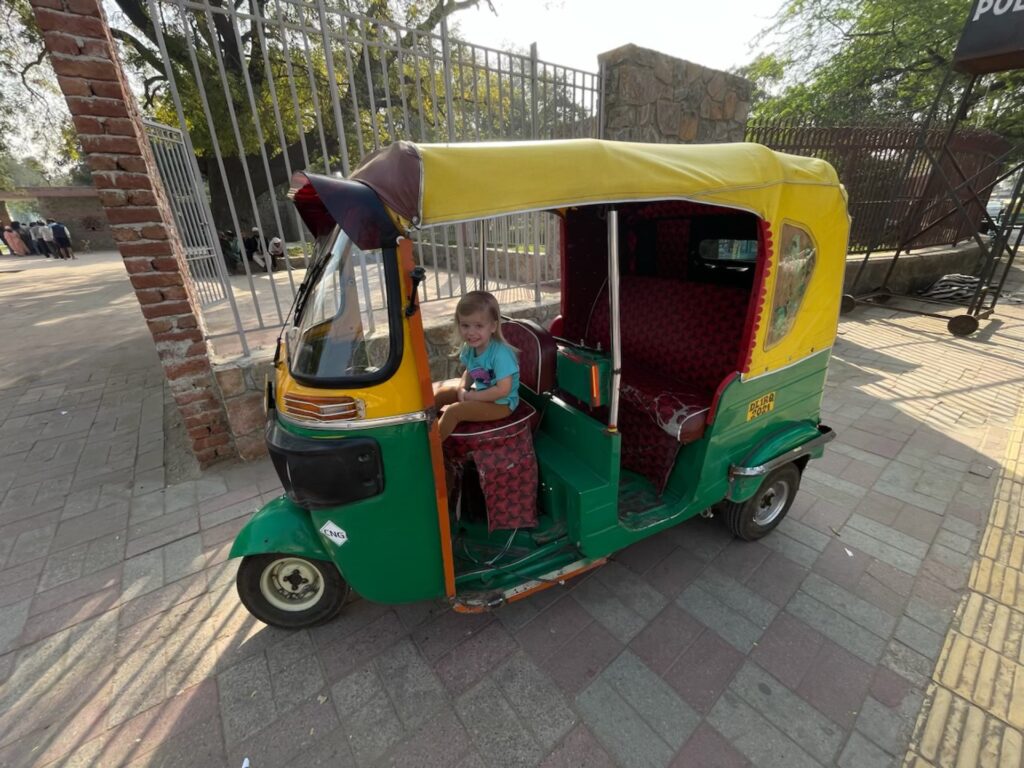
This mornings-on-afternoons-off model worked really well for us. In fact, the only time we didn’t do this was in Jaipur. We tried to cram everything into one long, nap-free day and our toddler ended up passing out in the carrier in the middle of a market until their legs fell asleep.
It’s also important to balance your specific activities, too. If we had a busy market where we’d have to carry our child, we’d follow that up with a garden or tomb where they had space to run around. If we started at a palace that seemed “boring” for them, we’d follow it up with an adventurous activity like riding the gondola.
For a closer look at how we spent our time in India with a 2-year-old, check out these itineraries:
- 3 Days in Delhi
- 2 Days in Jaipur
- 3 Days in Udaipur
What to Pack for a Trip to India with Kids
This is not a detailed packing list. This is a list of the extra things we brought for India specifically that ended up being really helpful.
- UPF Hoodie : We got this UPF hooded onesie for our baby for trips to Disney World, and we loved that it provided sun protection without the hassle of sunscreen (or at least less sunscreen hassle). We wanted something similar for India and got this one with a hood and this lighter weight one without.
- Baby Carrier: India is not great for strollers. If there are sidewalks at all, they are bumpy and there are lots of stairs without ramps. If you’re child is old enough to walk the whole time on their own, pack a baby carrier. Our toddler walked most of the time, but we also brought our favorite low-profile carrier, the Sakura Bloom Onbuhimo carrier. We also have a guide to baby wearing for travel where we review other carriers, too.
- Dish Soap : I recently started bringing a small amount of dish soap in a travel-size bottle and it was a game changer. We give our toddler milk in their cup and we always travel with a bento box that we use to store leftovers for future meals or snacks. The dish soap allows us to do that without anything getting gross.
- Water Purifier Water Bottle : It’s not safe to drink the tap water in India, so we relied on bottled water. I’d love to say that this water bottle eliminated our need for single-use plastics, but it didn’t. It’s just too small and we trusted bottled water more. However, this water bottle allowed us to purify hotel tap water if we were ever in a pinch. We mostly used this for brushing our teeth.
- Baseball Hat: This was partly for sun protection and partly for social protection. Our toddler is blonde and stood out like a sore thumb. The hat covered them up a bit when they didn’t want attention. The brim also helped them block out people when we were in crowded spaces, which helped them feel less overwhelmed.
- Liquid IV or Pedialyte Packets : If anyone in your family gets traveler’s diarrhea, these will help prevent dehydration. It’s also good great to improve everyone’s hydration on travel days.
- Medicine: Again, if anyone in your family gets sick, it’s good to have something handy immediately that you know exactly what it is. We brought Children’s Mylicon, Pepto Bismol and Tums for stomach issues and Tylenol and Children’s Tylenol for everything else.
- Entertainment: Whether that is a tablet and headphones or special activity books, bring stuff to keep kids busy in car rides and train rides. If you go the tablet route, be sure to download shows and movies in advance. The selection is different in India, plus you won’t have wifi or service everywhere.
- Portable Charger : We bring our power bank everywhere, but it’s extra important on travel days. Your battery will die faster taking more photos, looking up directions and downloading online tickets. A bigger one is also good for hotels if there are no outlets by your bed.
- Photos From Home : This isn’t necessary, but it can be really nice on a long trip. We brought photos from some of our favorite places at home, plus photos of places we were going. We could use our phone too, but this way our kid could look at the physical photos on their own whenever they want.
- Ziplocks : This is another thing that I just bring anytime we travel. You will use them for went clothes on travel days, snacks that you accumulate, keeping your phone dry when it rains, and about a million other things.
- Travel Car Seat: If you plan to take any cars in India, you’ll need to bring your own car seat if you want to use one.
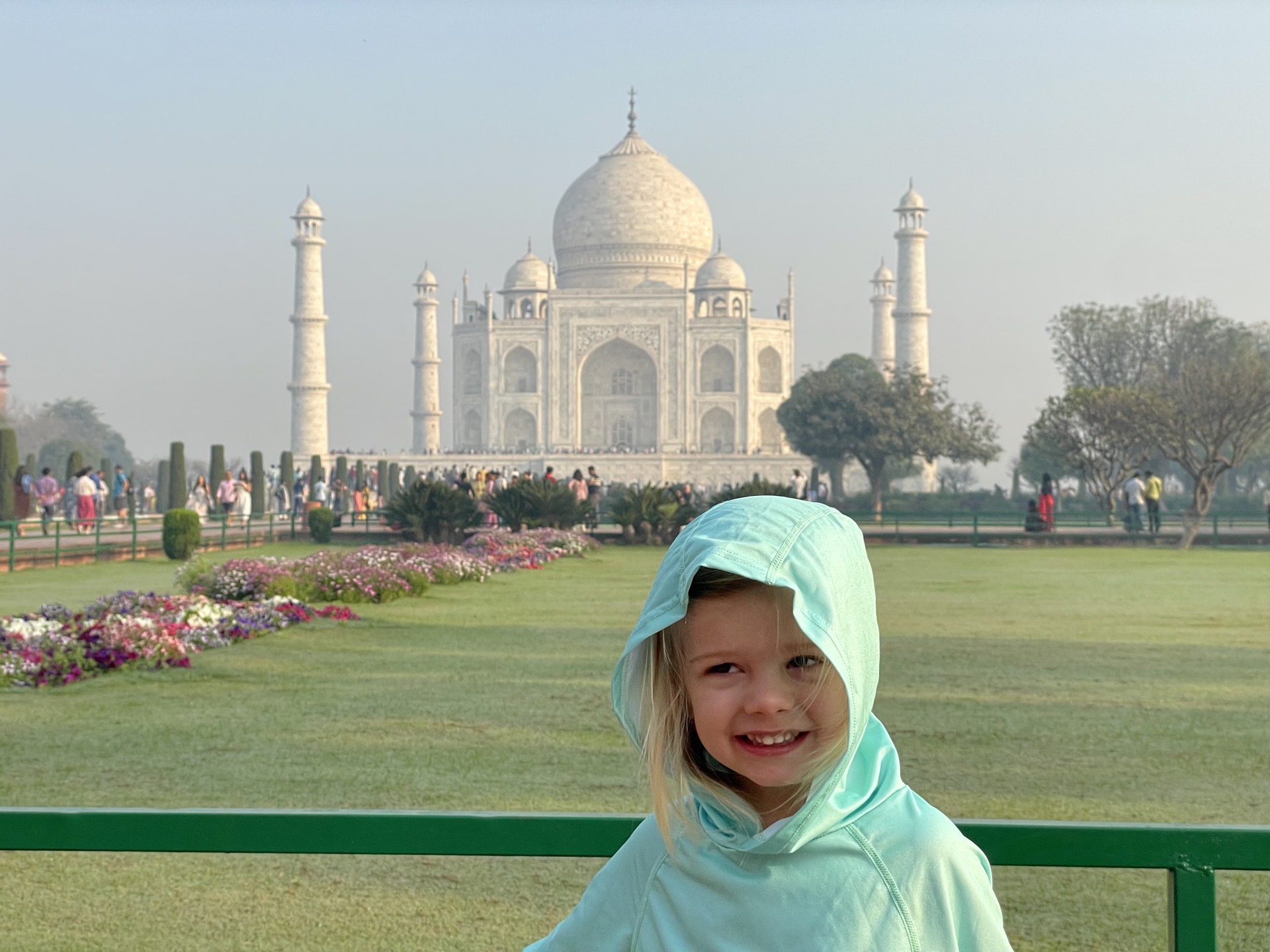
Part 3: Review and Reflection
Well, we did it. We went to India for two weeks with a two year old. I remember boarding our flight out of Delhi and thinking to myself, “Wow. I’m glad we did that, but I’m also kind of really glad it’s over.” I’ve since had a few months to look back on the experience … and to hear my toddler talk about it over and over … and I finally took the time to put some words to our feelings.
If you don’t want to read an extra 1,000 words on the matter, the short version is that it was hard, but I’m glad we did it, and I would definitely go back to India again.
Toddler Review of India
Me: Did you go to India? Zoe: Yeah! Me: What did you do there? Zoe: H
I’ve had similar conversations with Zoe a hundred times before, during and after our trip. They used to always tell me they were excited to see the Taj Mahal, because there’s a photo of it in their favorite book. Now they tell me about playing Holi, riding a tuk tuk, and the giraffe they got at the Red Fort. Sometimes they talk about a specific floatie they used at a hotel pool or the flavor of chips they ate on the steps outside Jagdish Temple.
Whatever their response, it’s always one of many positive experiences they had in India. They never mention waking up early to board the train or that they didn’t eat fresh fruit for two whole weeks (woops!). They’ll never tell you that the pool water was actually freezing or that they were hangry before they got that snack in Udaipur.
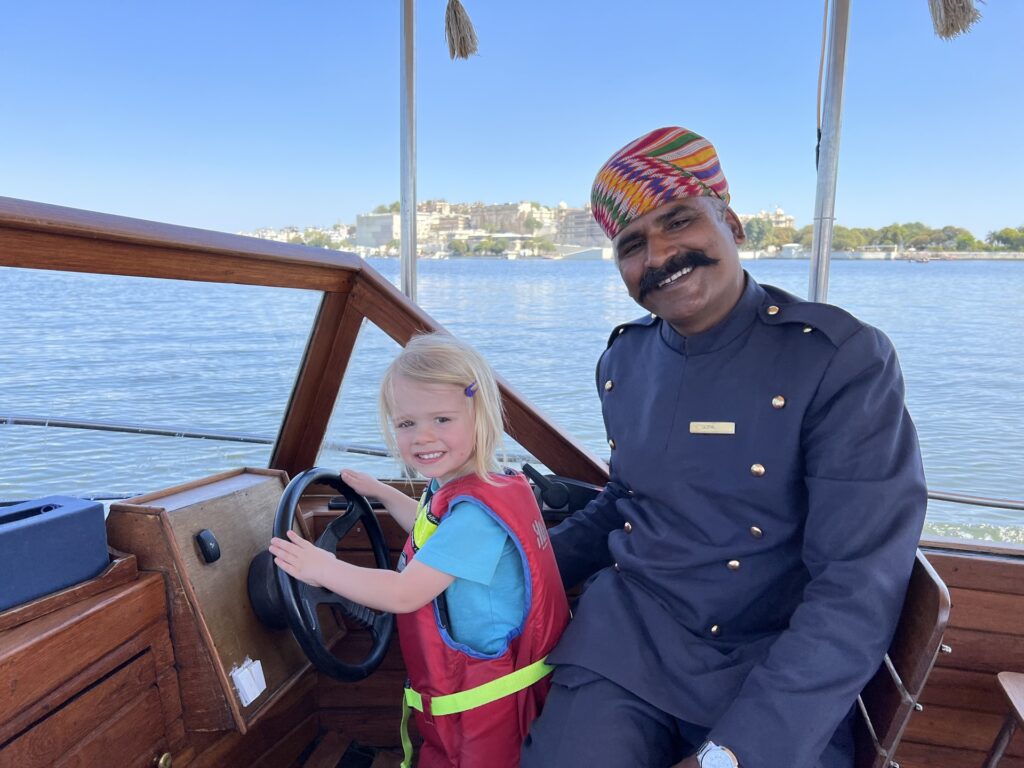
This isn’t unique to bringing a child to India. That’s just how kids are no matter where they are or where they go. Children will find the joy, they will cling to the tiny things that are big things to them, and they will quickly adapt to the world around them.
So much about India was different than home. The way the buildings looked, the type of vehicles on the roads, the clothes people wore and the langue they spoke was all new to them. But going to India wasn’t the first time Zoe walked into a new place.
Where as my travel motto is “Same, same, but different,” Zoe’s entire life motto is “Different, Different, but the same.” Kids are constantly experiencing new things. They just started day care and that was different, but turned out fun. They moved to a new home in a new city and that was different, but turned out fun. So when Zoe arrived in India, they did what they always do. They found the fun.
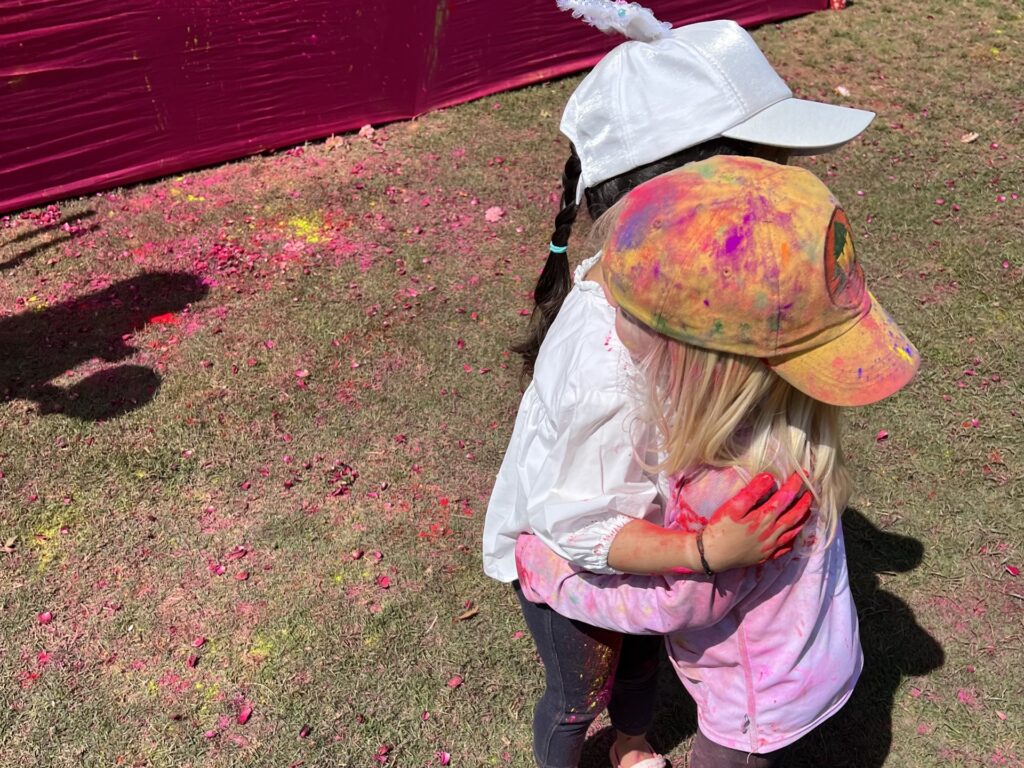
The fun Zoe found was not always the things that were unique to India — they loved the pools and the toys and the playgrounds, which you could find anywhere — but some of it was. They got to play Holi and celebrate an Indian festival with other Indian kids in India! They got to ride in a tuk tuk and a rickshaw and drive a boat, which they would have never been able to do in NYC. To them it was just dancing and running around, but the the backdrop was the Taj Mahal.
Zoe remembers this trip vividly right now, but they might not remember everything forever. And that’s okay! Honestly, my husband won’t either! Lifetimes memories don’t have to be the only reason we travel. India was a unique, joyful, colorful experience. Our toddler had so much fun, found so much joy, and lived those moments to the fullest. That is why we travel, and that is why we went to India.
Parent Review of India
Taking a toddler to India was hard, but that’s because India is hard. It’s a huge country, so planning cities, transportation and activities took time. Food safety was really hard and we had to constantly be cautious about what we ate and drank. Even just getting around cities was hard because we couldn’t walk or take the Metro as much as we’re used to.
That fact that we had a toddler didn’t actually make things much harder. The hard parts about having a 2-year-old — feeding them, entertaining them, putting them to bed — are all the same no matter where we are. The only thing that was different with a toddler was that we had to hire drivers more so they could safely ride in their car seat. If anything, this made the experience easier.
I was also worried about my kid having a good time. They’re pretty shy and don’t like loud noises, so I was concerned they would be completely overwhelmed. It did take them a bit of time to warm up to strangers talking to them and Holi was definitely scary at first, but I was thrilled to see that they actually loved being in India so much more than I expected.
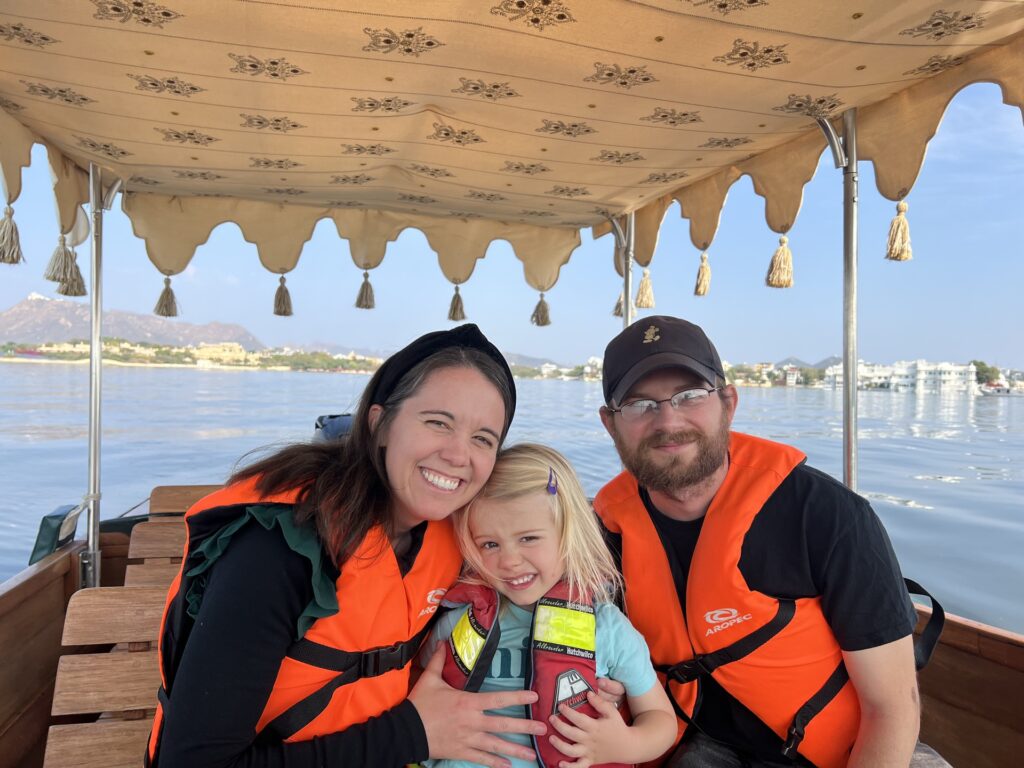
As you surely noticed in reading this post, we took the luxury approach to this trip. As an adult traveler looking back, in may ways this approach made the trip a bit sterile. It was probably less “authentic,” we didn’t have any kooky fun travel stories, and we definitely ate less local cuisine. But as a parent, I stand by the decision.
We learned pretty quick that our child would do just about anything in the morning if they knew they could swim in the pool in the afternoon. That was a trade we were willing to make. It also turns out that we also really needed a break midday, too. Our busy mornings were physically exhausting for our toddler, but they were emotionally exhausting for us.
India will open your eyes and break your heart in many ways, but particularly as a parent. I watched children take baths in the street and sleep outside of train stations, most all of them were barefoot. To see that and then take your child back to The Oberoi where they’ll get a free macaron just for walking in the door is a real reminder of our intense privilege and fortune. That’s a feeling I was never able to come to terms with.
India was hard, but I would absolutely go back. Even as I was actively dreading upcoming parts of our trip (hello, overnight train), I was adding to my list of places I wanted to go next. India has a complexity, vastness and diverseness to it that I was constantly in awe of. I also just loved how strangers treated my child in India. I loved the massive and beautiful tombs as much as the tiny shrines hidden around every corner. Even the traffic and the decorations on the semi trucks made the list of things I loved.
Finding joy in the little things and the unexpected things is definitely something I learned from my toddler. And that’s why trips like this are worth it.
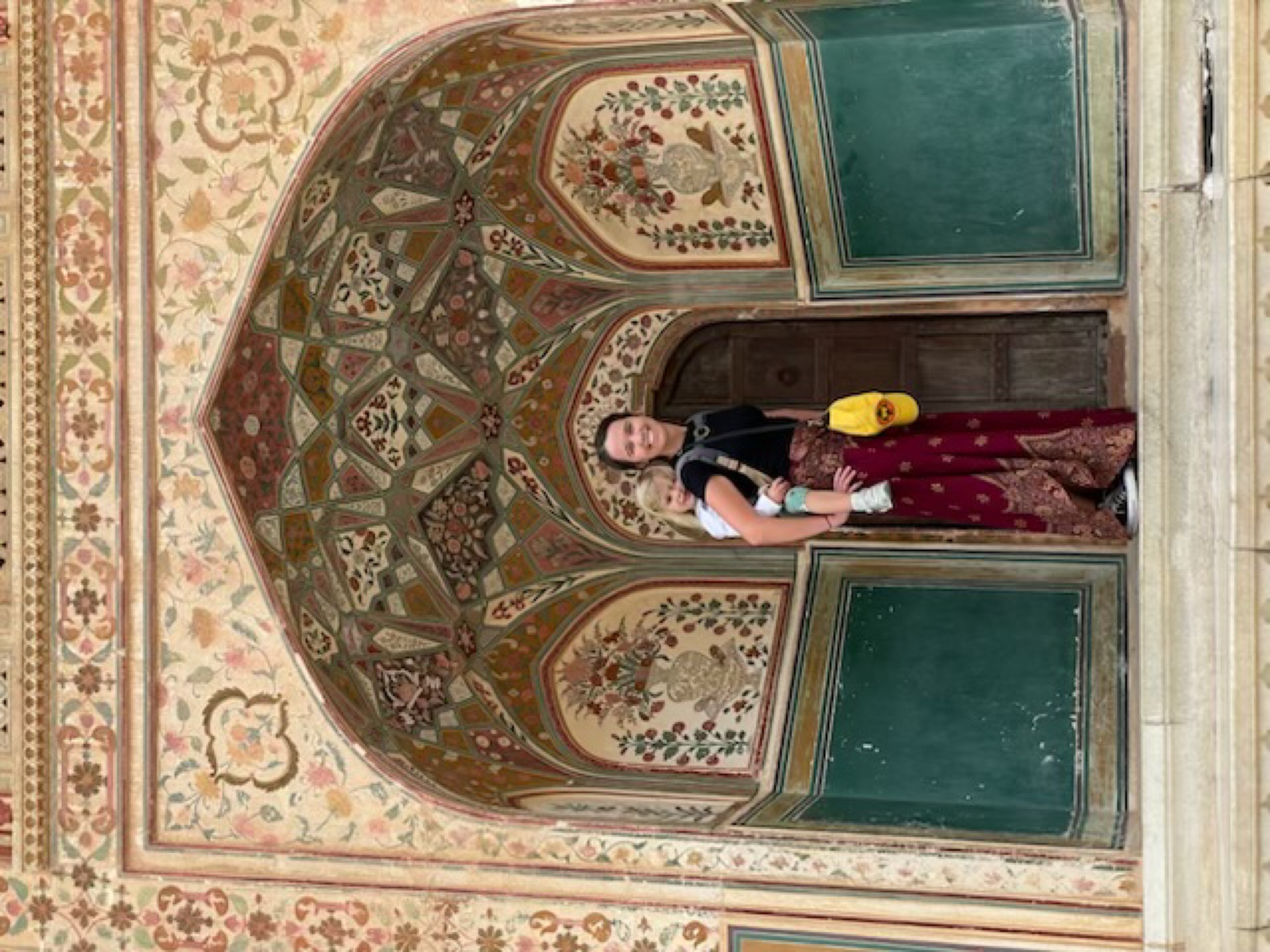
Tips for Going to India with Kids
- Read books about India before you go . I didn’t expect this to work as well as it did, but it really got our kid excited about India. They recognized things from their books and were excited to visit them! And now when we read those books, they’re so excited to tell us “I been there!” (We reccomend Tiny Travelers India Treasure Quest and Good Night India .)
- Watch YouTube videos. Similar to reading books, watching videos about the specific places you’re going and things you are doing will help prepare your child and get them excited.
- Choose your hotel wisely. I’d highly recommend a hotel that has a pool and restaurant(s) on property. If you need a crib, be sure to confirm that they have one before you book.
- Talk to your kids about photo requests. It’s really common in India and Asia for strangers to ask for photos with foreigners, especially white and/or blonde Westerners. Be sure to explain this to your child and decide as a family (or as parents) how you want to handle that. You may choose to say no or you may leave the decision up to your child. Either way, they should be prepared for it.
- Stay away from stray dogs. There are a lot of stray dogs in India. If your kid is anything like ours, they will want to pet all of them. In our experience, these dogs were not at all aggressive and never approached us if we gave them space. Just keep an eye on your child when dogs are around so they don’t try to sneak in a pet. You want to avoid this as rabies is a concern in India.
- Don’t drink the water. It’s easy to remember to not drink water from the faucet, but it’s harder to remember all the sneaky ways you’re exposed to tap water. Avoid ice, produce washed in tap water, and even utensils cleaned with tap water. We’d also recommend brushing your teeth with bottled water, which is surprisingly hard to remember to do.
- Submit your Visa request ASAP . Travelers from most countries will need an eVisa prior to landing in India. It is a relatively easy process, but it can take time. We had some issues with ours and it took a few weeks to come through. Don’t wait till the last minute on this.
- Don’t fill your suitcase with diapers . We almost never pack enough diapers for our entire trip. Babies all over the world wear diapers, so you can you almost always stock up at your destination. We ran out of diapers in Agra so we asked our hotel where to go to buy more. They actually went out, got diapers for us, and delivered them to our room that day! (I’m sure we were overcharged for it, but I gotta say it was worth it.)
- Go to sites early . Try to get to major attractions as soon as they open. Morning times are cooler and much less crowded. This matters at some places more than others, but it’s most important at the City Palace in Jaipur and of course the Taj Mahal.
- Push your child out of their comfort zone. When we first got to Jagdish Temple on Holi, our toddler was terrified. It was loud and crowded and people were getting Mommy dirty. They wanted to go home. It was hard, but we encouraged them to stay. We showed them that the colors were fun and let them play with other kids who were getting dirty, too. Half an hour later, they were having the time of their life and wanted to stay and play Holi forever! It was hard for all of us but so worth it in the end.
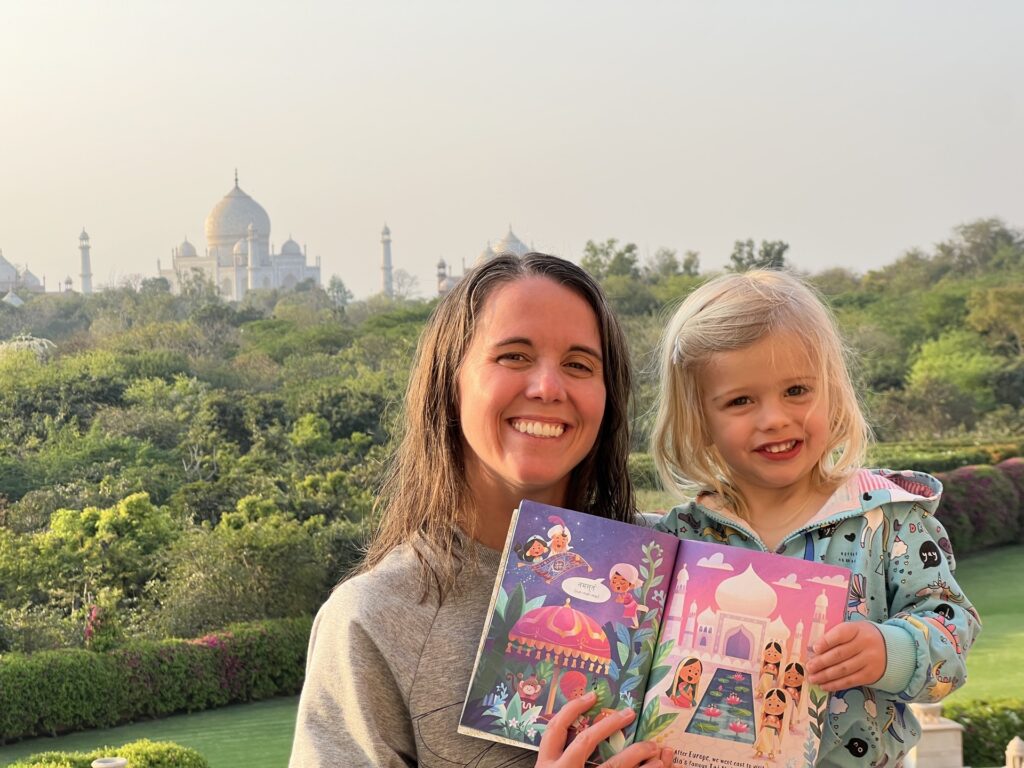
More From This Trip
- Emirates Business Class Review – A380 JFK to DXB
- Our Stay at Atlantis Dubai – A Perfect Place to Recharge
- Detailed 2-Day Dubai Itinerary
- Air India Business Class Review – 787 from DXB to DEL
- A Parent’s Guide to Traveling to India with Kids
- India Golden Triangle in 10 Days [Travel Guide, Itinerary &Tips]
- 3 Days in Delhi – Sample Itinerary + Planning Guide
- The Oberoi New Delhi Hotel Review
- Jaipur Itinerary – 1 or 2 Days in the Pink City
- Review of Jai Mahal Palace (Jaipur)
- Train from Jaipur to Udaipur – AC 3-Tier Sleeper Class
- The Oberoi Udaivilas Hotel Review (Udaipur)
- Udaipur Travel Guide + Things To Do
- Celebrating Holi in Udaipur (With a Kid)
- Overnight Train from Udaipur to Agra – AC First Class Sleeper
- The Oberoi Amarvilas Review: A Luxury Hotel with Taj Mahal Views
- Kerala Express Review – Agra to Delhi in AC 2-Tier Sleeper Class
- Hotel Review: JW Marriott New Delhi Aerocity
- Qatar Airways Economy Review – DEL to DOH
- Doha Things To Do & Travel Guide (Perfect for a Stopover!)
- Qatar Airways Qsuite Review – 777 from DOH to JFK
14 Best Places to Travel with an Infant in India
Written by Kiran Verma
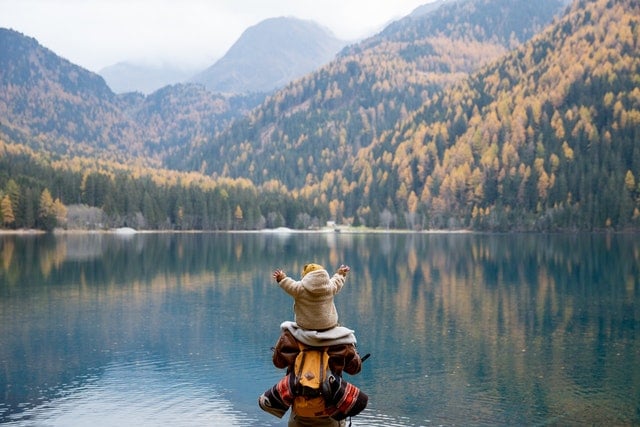
Hey Parents!
Finally, you can go out since your cute little baby is now an infant.
Well, that’s not a hidden fact, that with the birth of the newborn your whole life revolves around him, including canceling all the trips just to ensure the comfort and safety of the baby and mommy.
However, as your infant grows, you can get back on track and start searching for the best places to travel with infants in India.
But do you know what’s more important than – the best places to travel with a 6-month-old baby in India is knowing which place is safe and perfect to spend quality time with your sweet little family.
Moreover, I would like to mention, avoid traveling unless necessary because as estimated the babies or kids would be at high risk in the third phase of the Covid-19. I know, traveling with a baby, too after a very long lockdown seems impossible to resist, especially when things seem to fall back into place.
However, I would say nothing but, precaution is better than cure.
Also, I don’t recommend flying at the newborn age (0-3 months) until it’s a valid reason like a family emergency or something.
Especially after 2020 and 2021, many public places/airplanes/railways are germ factories and infants are highly vulnerable at this young age. And also moms are still recovering from the childbirth phase.
So what is the best age?
3-9 months is the stage where parents can take the maximum benefits from their infants. At this stage, babies sleep a lot. And if it is a flying trip, the ear pressurization issues would also be less.
Keeping the baby’s safety in mind, in this blog, I will be focusing on the best places to travel with infants in India only so that you can even use trains, your own vehicle, and of course Uber intercity.
So, now let’s check out some of the finest places to travel with an infant –
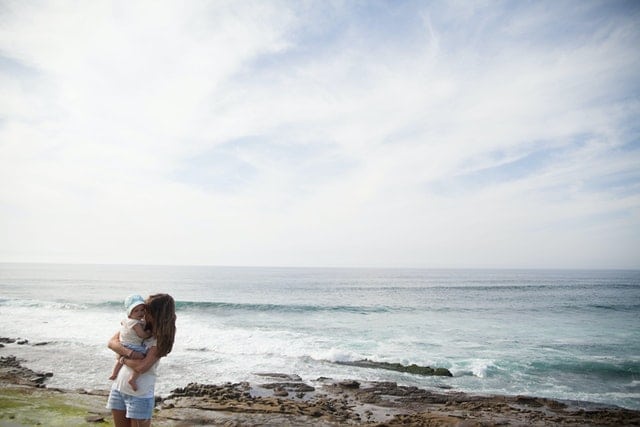
Goa! It’s a dream of many youngsters to at least spend a weekend there. However, your infant could be the one saying, “eh! Goa, I have already had a trip there.”
Well, if I have to mention some of the fun places to with your baby in Goa –
- Splashdown Water Park
- Sahakari Spice Farm
- Fort Aguada
- Butterfly Conservatory of Goa
- Olaulim Backyard, and more
These are some of the finest places where you can go back in time, play with water, watch the wildlife, and more with your infant. Moreover, if you are looking for a place to have cute pictures with your baby, well, these are the right places.
Also check: 30 Things to Carry While Travelling with Baby on Flight/Train!
2. Jaisalmer
Ah! “The Golden City!”
Want to live like a Maharaja? Where your infant could be a little prince?
Well, nothing can beat Jaisalmer of Rajasthan. Moreover, along a lot of perfectly architectured Haveli’s you can also visit tons of temples, which probably is the finest place if you are a theist.
That’s why I think a place with a combination of traditional attire and temples would end your search for the best places to travel with infants in India.
Here are some of the places you can visit in Jaisalmer –
- Jaisalmer War Museum
- Jaisalmer Fort
- Shri Tanot Mata Temple
- Amar Singh Jain Temple
- Badal Mahal
- Gadisar Lake
- Desert National Park
3. Munnar
Looking for the best places to travel with infants in India?
Well, how about exploring the State with #1 literacy rate?
You got me! I’m talking about Kerala.
Munnar is a beautiful hill station and a former resort for the British Raj elite which is surrounded by rolling hills that are dotted with tea plantations. That’s not all, you can also watch mountain goats, Nilgiri tahr, and many more.
And of course, a perfect place to get your perfect pictures.
But the question, where you can go with your baby –
- Kolukkumalai Tea Estates in Munnar
- Echo Point in Munnar
- Chinnar Wildlife Sanctuary in Munnar
- Rajamalai National Park in Munnar
- Blossom Hydel Park in Munnar
4. Kasauli
Would you like to catch a train to Himachal Pradesh and live a happy holiday?
Well, who could resist such a beautiful cantonment and town of Himachal, right?
So, along with other best places to travel with infant in India, why leave Himachal behind. I don’t know about other things, but this could be a perfect place to go out with your infant –
- Monkey Point
- Central Research Institute
- The Mall Road
- Shirdi Sai Baba Mandir
- Gurkha Fort
- Shri Baba Balak Nath Temple
5. Udaipur
Udaipur – “City of lakes,” certainly should be on your list if you like lakes, monuments, outyards, gardens, and definitely peacocks.
Are you ready to watch your infant when he sees the peacocks?
Of course, who won’t want their infant to learn about new creatures, and what could be better than a beautiful peacock?
And if you want your little infant to know more about culture, heritage, and architect, here are some of the best places to travel with infant in India, Udaipur –
- Pichola lake
- Lake palace
- Doodh talai
- Haldighati
- Horseback riding
- Kumbhalgarh Wildlife Sanctuary
- Jagdish temple
6. Darjeeling
Visit the foothills of Himalaya and let your infant enjoy the most famous “Toy Train.”
Without wasting your time, I would just mention some of the finest places to visit in Darjeeling –
- Batasia Loop
- Ghoom Monastery
- Rangit Valley Rope
- Peace Pagoda
- Padmaja Naidu Himalayan Zoological Park
- Observatory Hill
7. Mahabaleshwar
One more hill station at the forested Western Ghats range, well, one of the major attractive features is that it has many elevated viewing points, one such famous point is Arthur’s Seat.
Here, check out this amazing list of places you can visit in Mahabaleshwar –
- Mahabaleshwar hill station
- Mahabaleshwar temple
- Arthur’s seat
- Elephants head point
- Pratapgarh fort
- Lazmi strawberry farm
- Krishnabai temple
8. GIR national park
Let’s have a tour of India’s famous National park and let your infant see the scary Asiatic lions, Indian leopard, golden jackal, blackbucks, mugger crocodile, nilgai, and many more animals which will certainly increase the excitement level of your infant.
9. Andaman and Nicobar Islands
Explore the union territory of India possessing 572 islands – a splendid island in Bay of Bengal.
And you know, your infant can make beautiful castles on the beaches and of course, you can live a happy weekend on cruise.
Let’s see, places to visit with a 6-month-old baby in India’s Andaman and Nicobar islands –
- Radhanagar beach
- Ross islands
- Jolly buoy island
- Chidiya tapu
- Laxmanpur beach
- Cellular jail
- Elephant beach
Oootyyyy!!!
The beautiful Nilgiri hills means “blue mountains.”
Indeed, it is a small resort town in the Western Ghats mountains, in the south of Tamil Nadu. After doing appropriate research, trust me, I found some of the finest places to visit and I can bet you and your baby would never get bored there.
Here, let’s see, what I have got for you –
- Nilgiri mountain railway
- Pykara lake
- Government botanical garden
- Upper Bhavani lake point
- Government rose garden
- Emerald lake
- Thunder world
- Sanctuary Avalanche
- Thread garden
- Wax world museum
11. Gulmarg
Beautiful pashmina shawls and blankets are the identities of Kashmir, well, so is Gulmarg. Probably, that’s why it is known as “Meadow of flowers.”
For you, I have literally come up with the best place to travel with infant in India, which does seem like heaven –
- Gulmarg gondola
- Apharwat peak
- Outer circle water
- Rani temple
- Children’s park
- Go Gulmarg adventures
- Iceland tours Kashmir
- Glimpse of Kashmir
A river island in the Brahmaputra and of course, the first island to be made a district in India. And if you are a thiets, it is a perfect choice, including the fact that you can also visit an ancient educational center.
Let’s what this place has got for you –
- Kamalabari satra
- Dakhinpat satra
- Garmur
- Auniatia satra
13. Amritsar
Want your infant to have a pilgrim bathe?
Amritsar is the right place for you. Because it is like finding heaven as it has gorgeous and attractive places where you and your infant can enjoy –
- The Golden temple
- Jallianwala bagh
- Durgian temple
- Lal Mata temple
- Pul kanjari
- Maharaja ranjit singh museum
- Gobingarh fort
14. Hampi
An ancient village situated in Karnataka, South India. I would just say a few words to describe it, “perfect architecture.” Well, I’m myself a big fan of crafty and skilled things, especially when it is done by architecture.
So, get ready to explore some of the best places to travel with infants in India –
- Vithala temple complex
- Vijayanagar
- Elephant stables
- Monkey temple
- Matunga temple
- Statue of Ugra Narasimha
- Queen’s bath
- Lotus palace
- Hazara Rama temple
- Stepped tank
15 Tips to Take Care While Travelling with Your Infant
- Consider whether traveling is safe for both mother and baby.
- Follow all the precautions which have been implemented to prevent COVID-19, such as wearing masks, and carrying hand sanitizer for you and for your baby .
- Try to prefer relaxing places only while traveling with a baby.
- Always check the weather forecast of the destination place.
- Keep the formula milk , baby wipes, other baby food in stock
- Check the travel advisory whether any specific guidelines are given for the baby or not. Moreover, contact your doctor regarding the same for safe and sound traveling.
- Carry the baby carrier especially in places like the beach. Avoid carrying a stroller while traveling.
- Try to travel in groups, so you can take turns carrying the baby while the other can enjoy the water ride, etc.
- Do not forget to carry medicines, baby sunscreen, a blanket, etc
- Try to wear breastfeeding dresses so that you can easily feed the baby anywhere.
- Keep the places clean and hygienic – for that, you can carry disposable trash bags to trash diapers and other stuff.
- Also, remember – different airlines have different policies for babies to travel or things to carry like formula milk is allowed in check-in bags or not, X-ray screening is good for milk or liquid that you are carrying. Please confirm the same with your airline first before traveling.
- Plan your journey in advance so you don’t miss any events, places made especially for babies.
- Arrive on time at the station or airport, do not rush at the last moment as you are carrying your infant.
- You can also request the seats which have maximum legroom or confirm the Child Restraint System (CRS) seats , designed specifically for infants/kids.
My personal advice: If you are traveling in flight, instead of carrying your baby in your arms, ask them if there are any empty seats on the flight, you can request the one then sit next to your baby. I personally did this thing with a lady. I asked the flight attendant to allot my seat to her so both can sit together.
Well, hopefully, my list of the best places to travel with infant in India relieved your stress, if not completely then a little bit. I’m glad I could help. However, I would like you to mainly emphasize one thing – before traveling consult your medical conditions, including the baby’s medical condition with the doctor to be on the safer side.
Trust me, I know you don’t want to take any caution with your baby, because being a parent, your first instinct is their safety, right?
And I know, you would be great parents.
Moreover, if you need any suggestions in regard to finding the place or if you think we have not mentioned any place here, hey! I’m open to suggestions – just hit me up!!
Related Posts

5 Best Baby Memory Books/Record in India Reviews

5 Best Unique Baby Shower Gift Ideas for Mom & Dad to be in India

5 Best Breast Pads/Nursing Pads in India
Leave a Comment Cancel reply

Essential tips for travelling to India with kids
Posted on Last updated: 31 January 2024

Many people may have raised an eyebrow, but you did it. You’ve decided to go travelling to India with kids! Perhaps memories of your India travels pre-kids have lured you back. Or maybe you’ve travelled much of Southeast Asia as a family and you’re now looking for a new challenge. Or perhaps it’s just a place you’ve always wanted to explore, seen other families doing it, and you’re willing to take the plunge.
READ: Top things to do in India with kids
For any first-timer to India, the culture shock smacks you in the face and awakens the senses; the colours, the chaos, the noise, the smells. India is not for the faint-hearted and kids can drive parents insane on a daily basis. So how do you not lose your sh!t travelling India with children? In fact many parents wonder – is it worth travelling India with kids?
Due to an opportunity through Jay’s work, we spent a year living in Bangalore and took every available opportunity to travel and explore India. There were times when the bureaucracy, noise and congestion would be too much, but my over-riding feeling was that of wonderment. This is a place where everyday life spills out on to the pavement and it’s simply fascinating.
Many people believe that India is not a place for family travel. However, if you are thinking about it, I hope these top tips for travelling to India with kids will help you decide.
1. Where to go
India is a vast, contrasting country. Don’t try and cram too much in to your precious time. India can be a sensory overload for little minds and all family members need time process everything. Allow a couple of hours every day for some down time. Check out our 10 day Northern India itinerary and then perhaps head to the beaches of Goa ( Agonda is our favourite for little ones). If you have more time, a trip to Kerala’s backwaters or Hampi will not disappoint.

2. Allow for delays
Especially in the big cities, traffic has to be seen to be believed. Getting from A to B always takes longer and the worst thing to do is try to hurry your kids along, as they rarely comply. Google Maps tends to be fairly reliable with its journey time estimates, so you can use that to get some idea of how long the journey will take.
Do try to avoid rush hour(s), although in the major cities, traffic is horrendous most of the time.
3. Go up a notch with your accommodation choice
India is chaotic. To balance this, you need to ensure the place you stay is an oasis away from the chaos. This will give you all a breather and much needed time out. Look for somewhere that includes air conditioning if you’re travelling in the hotter months, and breakfast, so you haven’t got to head out early with hungry kids. A swimming pool is always a winner too!
4. Consider all the family sleeping in the one bed
This may sound like the worst idea for many parents. However, many hotels in India are happy for young kids to share a bed with parents and there isn’t an extra charge.
This often means that you can get a better hotel for your budget. When our boys were very tiny we would always prefer to stay in a nicer hotel with a pool and balcony if it meant sharing a large double-bed, rather than a finding somewhere with a standard family room and no frills.
5. Hand sanitiser and washing feet
It’s easy to get hung up on the dirt in India. It’s everywhere and unless you only go to high-class hotels and shopping malls, there’s no escaping it. Kids love touching everything; the walls, their feet, high-fiving strangers – there’s no stopping them unless you turn into a neurotic parent, which is no fun for anyone.
Kids will be kids. Just have the sanitiser handy before meals and get into the routine of washing feet whenever you get home. Thankfully, my boys didn’t get ill once during our time in India!
6. Omelettes, rice and naan bread
Our kids didn’t like the spicy food (although they do now they’re a little older). Whilst living in India, we tried to give them a little now and again, but we didn’t want to force it on them. However, as parents, we LOVE our spicy food and we didn’t want to go without.
At most Indian restaurants, the chef can make a plain omelette or plain rice, although make it clear that ‘plain’ means no spice, no salt; this can be quite an alien concept to an Indian chef. As a backup, the kids always devoured naan bread. In most touristy places, you can get pizzas and chips, sometimes pasta, and there’s always a fruit stall nearby (stick to fruits you can peel) And here’s a little travelling parent secret… McDonalds is okay sometimes.

7. Eat where the food is moving
When eating out with kids, it can be tempting to go to a quiet restaurant where your little darlings won’t bother anyone. This can be a mistake as the food is unlikely to be fresh and they’ll probably take longer to prepare your food – which means more time keeping the kids happy whilst sat at a table. Eat at restaurants that are busy with locals. It’s a good indication that the food is fresh and moving and one of the best ways to avoid getting sick in India .
8. Drink only purified water
Water sanitation is a big problem in India. Even if you get water from a nice restaurant, ask for bottled water. You just can’t trust what comes out of the tap, especially for little tummies.
Double check the seal on your bottled water and ideally make sure you actually witness the seal being broken on your bottle. You’ll see some locals crushing the bottle cap and dropping it into an empty bottle after use, to thwart any future attempt at reusing the bottle with unclean water.
9. Book train travel as early as humanely possible
Trains get booked up almost as soon as tickets become available (120 days before departure), partly because the cancellation costs are relatively low and people tend to book several trains and only commit to a certain journey closer to the travel date.
If you were travelling without kids, you might be fine bunking down in Sleeper class on an overnight train. Or you’d be happy leaving your plans to the last minute and hope you’ll get bumped up from the waiting list. However, this isn’t really advisable with young kids. We always tend to travel 2AC which is the class of travel favoured by middle-class Indian families and it always felt very safe.

10. Keep your cool
India can be frustrating to the outsider. There are onerous processes in place when checking into hotels, visa checks, booking tickets, and however nonsensical they may seem, the rules are there to be followed, and it’s expected that people will tow the line (unless it involves driving on roads, no one follows any rules there!).
Add to this that seemingly everyone wants your tourist dollar, it’s easy to lose one’s cool. It’s easier said than done, but at the end of the day, it may just be easier to pay that bit more, go with the flow, or just walk away. Do you really want your kids to see you lose your temper with someone?
11. Learn to say no to photos
Within days of living in India, our boys had tired of the selfie requests. They had had enough. That doesn’t stop people coming up to them, grabbing them, picking them up and posing. Be firm, polite and just say ‘No’. They may object, but as soon as you explain that it’s your child saying no, they more often than not leave you alone. Be warned though, they’ll still be snapping away at you and your family as you walk away.

12. Respect the seasons
India is a country of extremes and the weather is no exception. In summer months, temperatures can soar to mid-40s and the monsoon season makes some destinations almost impossible. Plan your travel for the milder months and your family travelling life will be much more comfortable.
The time to visit most of the country is November through to March. Escape the summer heat and retreat to the mountains between July and September.
13. Pack a thermos flask
Getting hold of boiling water to heat milk can be a challenge. It’s nearly impossible to get hold of on the trains and many hotels don’t provide a kettle. However, you can always find someone (either at your hotel or a restaurant) willing to prepare you some boiling water. If you have a good thermos flask, it will keep your water hot for a good 15 hours or more.

- Bindloss, Joe (Author)
- English (Publication Language)
- 1256 Pages – 04/15/2022 (Publication Date) – Lonely Planet (Publisher)
You may also like to read: India with kids: top 10 things to do Happy in Hampi with kids Bangalore with kids
- Flavors of India: Exploring India’s Thali Culture
- Explore India Through the Lens: 7 Travel YouTubers You Need to Follow
- Flavor Expeditions: Embarking on Memorable Food Adventures in India
- Discover the Ultimate Navratri Shopping Destinations in Mumbai
- Exploring the Depths of Sikkim Caves

Traveling with Infants: 15 Tips to Follow on Flights to India
Are you planning on traveling with your little one? You should be careful will the stuff that you carry along when traveling with your baby.
However, you cannot be sure about what happens during the flight, but planning ahead can help in avoiding hassle during your flights to India.
Before you book flights, you should know the exact age permitted for your baby. Check this:
What is the best age to travel with an infant?
However, there is no official recommendation regarding the infant’s age, but you should know that there is a huge difference between the immune system of you and your baby.
When you travel with kids for an international flight, know that the air in the flight is recirculated one.
This might even contain germs, bacteria, and viruses, so maintaining the safety of your baby can become on your round trip flights to India .
Also, airlines like United Airlines have fixed an age limit that is seven weeks before the baby can travel in the flight.
Moreover, Delta Air Lines and American Airlines will not permit infants less than seven weeks without a written recommendation from the doctor.
So, it is advised to ask for assistance from the pediatrician and know about the infant policies of various Airlines before booking flights to Mumbai .
After you know a safe age of traveling with your baby, check the following tips that might help:
1. Make a Checklist
Creating a list of items that you should carry along is a must. This will prevent you from forgetting essential items during your flights.
Also, make sure that you start packing in advance so that you have plenty of time to pack your baby stuff.
Here is a general list of items that you cannot miss on your flights:
- Wipes and diapers
- Receiving blankets
- Extra pair of clothes
- Feeding Bottles
- Toys and rattles
- Baby-Friendly Snacks
- Ziploc bags
2. Book Direct Flights or Long Layovers
When you are traveling with a kid, try and make the number of connecting flights to the minimum. Changing seats and adjusting to a newer one can be quite a task for your infant.
And not only this, but landing and taking off each time also comes with some extra pressure on your baby’s ears, so it will be better if you choose direct flights to India rather than multiple connecting flights .
Also, you will not like to run around the airports with diaper bags and car seats.
Board a flight, adjust the baby stuff carefully, and land at your desired destination in one go. It is that simple.
3. Carefully decide your Check-ins and Carry-on
Before you board your flights to Mumbai , you should know what items you could carry in your check-in baggage and the carry-on.
For this, you can contact your airlines and know the list of permitted items.
Any last-minute change in the baggage at the security check can lead to a mess, especially when you are traveling with a baby.
Also, keep the stuff handy that your baby might require during the course of your journey.
4. Visit Restrooms Before the Flight
It is advised that you board the airplane with a dried diaper. So, one must hit the restrooms one last time before the final boarding.
As your journey on flights from the USA to India is going to be a long one, you should make sure that your baby does not feel irritated.
When you freshen up your baby in the restrooms, you surely avoid one less trip to the airplane lavatory.
5. Take Pre-Boardings
Some people intentionally avoid getting into the airplane before the flight-scheduled departure timings.
This is because they think, in this way, they will have to spend less time with their toddler on the flights.
But, it is always advisable to settle down before anyone else when you are traveling with a toddler.
Already, traveling with a child is no less struggle, so try not to increase it by buckling up your kids before anyone else is on board.
6. Preferable Buy a Separate Seat for your Child
You might be aware that when you book international flights to India from the USA with a toddler who is less than two, your child can travel on your lap for free.
However, it would be better if you get a separate seat reserved for them to avoid unnecessary trouble.
This is safe as well as allows the adult to relax during a no-haul international flight .
7. Keep the Baby Buckled
You will be pleased to know that when you travel with your baby buckled in the car seat on the airplane; you can be sure that he is safe and comfortable.
Also, in case of unexpected turbulence, you need not worry about your baby feeling uncomfortable or falling from your lap.
As you cannot restrict the movement of your baby otherwise, keeping them buckled is the best way to keep them as safe as possible.
8. Carry Extra Pair of Clothes for you as well as your Baby
You will surely not miss packing an extra pair of clothes for your baby on their flights.
It is because you already know that your baby can blow-out anytime in the middle of the flight. But what about yourself?
When you are traveling with your baby , there are equal chances that your clothes also get spoilt. So, to avoid any inconvenience in the mid-flight, it would be better if you have your pair of clothing handy.
It would be better if you add a compact pair of the outfit in the carry-on for convenience.
9. Pack a Lot of Snacks and Milk
Your baby will feel irritated in the middle of the flight for nothing. And, this is the time when packing a lot of snacks will help. These will keep your baby engaged, and with his tummy full, you can avoid less mess on your flights to India.
Also, it is advised to feed your baby one last time before the takeoff.
Moreover, you can even plan to make your baby fall asleep. This will help them adjust better, and you can also settle down things in a better way.
10. Keep Your Baby Engaged
You might have experienced this once in your flight, that the baby on the seat by your side is trying to climb the seat ahead.
You definitely do not want your baby to follow the same. So, when you are packing the stuff for your baby, try and pack their soft toys along.
These will not only keep them engaged, but will also reduce your stress from preventing them from falling.
11. Deal with Strangers
Although you have been trying hard to ease your baby in the plane, you cannot entirely avoid and stop him from crying.
And you will surely come across people who feel irritated with your baby’s loud cry.
The best you can do in such instances is to avoid the haters and strangers.
Try dealing with the baby in every possible way and make them feel comfortable without worrying about strangers.
12. Baby Medications
Your baby might start to feel sick during the journey. Carryover the counter medications along with prescriptions to avoid your baby from falling seriously ill during the journey.
Also, you should know the TSA liquid limits before packing such medicines.
Also, when you carry these medicines on flights from the USA to India , you should keep them in their original packing so that they can be identified easily.
13. Prepare Baby for Take-Offs and Landings
You already know that there is a sudden change in the pressure of the cabins during taking off and landing of the flights.
This change in the pressure can lead to paining ears, and your baby will feel disturbed. You should ask your baby to chew chewing gum during such instances.
Also, if your baby is too young to chew, handing him a bottle of pumped breast milk can help.
Moreover, you should be aware that carrying breast milk after booking your airline flight tickets is exempted from the 3.4-ounce liquid rule.
Moreover, if your baby is not interested in taking bottles, pacifiers, and sippy cups can also serve the same purpose.
14. Dress them Comfortable
This is yet another way to ensure a safe and comfortable flight journey for your baby. When you dress them comfortably, they feel less irritated automatically.
Also, as your flights to India is going to be a long one, sitting in the same positions with irritating clothes can be a trouble for your baby’s soft skin. It is better to choose soft fabric for a happy baby.
15. Plan Ahead and Relax
When you are traveling with your baby, you can forget what to carry and what to avoid when it is a last-minute packing. And when you plan ahead, you have enough time to assemble all the necessary items well before time.
You can never be sure of smooth travel experience when traveling with an infant. However, being prepared can be very useful to avoid any mess.
This will not only give you a feeling of relaxation for your journey, but you will also feel confident to handle any circumstances. Follow the tips mentioned above and reach your destination fresh and energetic.
- How to Nail the Cheapest Flight to your Destination!
- American Airlines Baggage Policy
You May Also Like
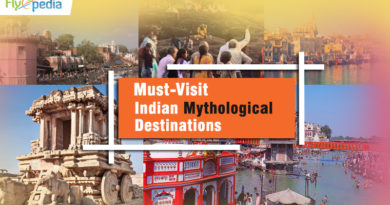
7 Incredible Indian Destinations to Discover Hindu Mythology

Top 6 Differences Between Economy, Business, and First Class Flights
Pre travel tips for staying energized on your trip.
Ask Shelly: Advice for flying to India with a 2-year-old
I received this note from a reader and thought my response might be helpful to a number of you.
I am traveling to India with my 2 year old for a couple of weeks. The flight is crazy long—it adds up to almost 30 hours of travel time. Any recommendations? We plan to bring his car seat but it is really big—do you have any thoughts on travel seats that can be used in a car once we get to our destination?
Thank you – Jennifer
Dear Jennifer and other travelers,
India! With a 2-year-old! What a great adventure you’ll have. It isn’t cheap, but from what you describe, you’d be a really great candidate for the Sit N Stroll car seat that can convert to a stroller—definitely for this trip, and possibly others you have lined up. I got mine for travel, but I’ve found it very helpful with wily toddlers for running around town, too, just doing errands and quick outings to the post office or bank. More on that below.
When you have crazy-long travel times like that with a toddler, with very long flights, airplane changes, and layovers, there are two pieces of gear that can really be helpful to have with you—though you might normally assume the lighter you can travel with kids the better. For this kind of seriously long travel by plane with a 2-year-old, I suspect you will be glad to have:
1) The car seat, which will make your 2-year-old much more comfortable for long periods of sitting than the adult-size airplane seat (which, let’s face it, is not built for comfort!), and the 5-point harness with buckles will also help keep him contained, unlike the airplane easy-lift seat belt which he’ll be out of in a blink if he decides to bolt. Not fun on a long flight! Plus, if he’s used to riding in a car seat already and understands that it means staying put in the car, the consistency may be helpful for the long-haul. Since it fits him better and hopefully has some side wings, it will also make sleeping during flights much easier for him—extremely important for any child during 30 hours of travel!
2) The stroller, which may be essential to getting between gates in time at large airports, and/or helping your child nap during lengthy layovers. A reclining travel stroller can be really helpful for this. Especially at age 2, the airports will be so exciting, and where you’re headed strangers will likely be so friendly that it may be hard for him to disengage and get the rest he needs. A stroller can help provide a buffer while you stretch your legs and get some activity pushing him around the terminal. Once he’s asleep, you can clip a blanket to the front of the stroller’s canopy (with your trusty binder clips, as recommended in Travels with Baby !) to keep bright lights off of his face and strangers at a respectful distance. Also, being able to keep your son safely strapped in to a stroller until you’ve managed to get all your items and shoes onto the X-ray at security, then collected again on the other side, or until you’ve finished using the restroom (!) can be very helpful with a 2-year-old!
Suggestions for gear:
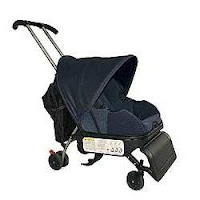
Other concerns and considerations:
Size – Since you mention your car seat is “huge,” you may also opt to go with the Sit N Stroll over other options that will work with the car seat you have. It will be much easier to fit in the smaller cars and taxis you’re likely to find along the way, and a huge car seat is never much fun to lug around and is seldom practical in the small cars abroad! 😉 I have a recommendations for other easy-traveling car seats on my site at https://travelswithbaby.com/gear/car_seats_et_al.htm .
Seatbelts – Even with a car seat in your hands, don’t expect to find a seat belt in the back seat of every taxi you hail in India. Many older cars and smaller vehicles simply do not have seatbelts in the back seats. To get around this, aim for the newest looking and largest taxis you can find, and always point out your car seat quickly to the driver who will likely know you’re looking for seatbelts. If it’s in the budget, you might prefer to arrange a car and driver to meet you after your extended hours of travel who knows in advance you’ll need to install a car seat and will have an appropriate seat belt or even LATCH. Safety – While there is no car seat law in India, and car seats are still fairly uncommon (and financially out of reach for countless families), I think you will be very glad to have your toddler safely in her seat as you navigate through the traffic, so it’s worth the effort to bring a car seat and use cars where it can be safely installed. Hope this helps!
Safe journey,
Shelly Rivoli, author of the award-winning guide Travels with Baby The Ultimate Guide for Planning Trips with Babies, Toddlers, and Preschool-Age Children
Shelly Rivoli
Award-winning travel writer and photographer, mom of 3, and great admirer of anyone willing to cook her dinner.
How a horse helped me be a better parent… and traveler
Rivoli roundup: finding great places to vacation with kids, you may also like..., need to know: flying american airlines with a..., need to know: flying southwest airlines with a..., tips for packing excess liquids for flights with..., seven easy ways to get your car seat..., fifteen tips for flying alone with a baby..., five things you should know before flying with..., what to pack in your baby travel kit..., need to know: flying alaska airlines with a....

Traveling with a Baby on a Train in India
Traveling with a baby is an adventure in itself, and when you add the enchanting landscapes of India and the rhythmic clatter of its iconic trains, you’re in for a truly memorable experience.
The Indian railway network is vast, connecting every corner of this diverse and captivating country. However, embarking on a train journey with a baby in tow can be a rewarding yet challenging endeavor, requiring careful planning and preparation.
In this blog, I’ll guide you to ensure a seamless and enjoyable train journey with your little one in India. From booking your tickets to packing essentials , dealing with delays to maintaining hygiene, and making the most of your adventure, we’ve got you covered.
So, fasten your seatbelts, or rather, your baby carriers , as we take you through a comprehensive list of tips to make your Indian rail journey with a baby an experience to remember for all the right reasons.
Choose the Right Train
Selecting the right train is the first and perhaps most crucial step in ensuring a comfortable journey with your baby in India.
Consider the Duration: Long-distance journeys are often more comfortable on premium trains like the Rajdhani or Shatabdi Express, which offer better amenities. These trains also have dedicated child-care compartments with diaper-changing facilities.
Check the Schedule: Study the train’s schedule. If your baby has a routine, choose a train that aligns with their nap times or feeding schedule to minimize disruptions.
Book Tickets in Advance
Indian trains can fill up quickly, so booking tickets well in advance is essential. If you’re traveling with a baby, consider booking tickets as soon as the booking window opens (usually 120 days in advance) to secure the best berths or seats for your family.
Seat Selection : Choosing the right seat or berth can significantly impact your comfort during the journey, especially when you have a baby.
Opt for Lower Berths: Request a lower berth for easy accessibility and more space. It’s much more convenient when you need to tend to your baby frequently.
Side Berths: Side berths can also be a good choice as they offer a bit more space for your baby and a bit more privacy for you.
Pack Essentials
Packing smart is the key to a successful train journey with a baby. Here are some essential items to consider:
Diapers and Baby Wipes: Stock up on these as you might not find them readily available on the train.
Baby Food and Formula: Carry an adequate supply to last the entire journey.
Bottles and Pacifiers: Ensure you have enough clean bottles and pacifiers to keep your baby content.
Extra Clothing: Pack more clothing than you think you’ll need, considering that babies can be messy travelers.
Blankets: Bring a couple of blankets to keep your baby warm during the journey, as train temperatures can fluctuate.

Medications and First-Aid
Consult with your pediatrician before the trip to ensure you have any necessary medications and a basic first-aid kit suitable for your baby’s age. It’s always better to be prepared for any unforeseen health concerns during the journey.
Baby Comfort
A comfortable baby is a happy baby. Here’s how to ensure your baby’s comfort during the train journey:
Dress for Comfort: India’s climate can vary greatly, so dress your baby in comfortable, weather-appropriate clothing. Layering is ideal to accommodate temperature fluctuations.
Baby Carrier or Sling: Carrying your baby in a carrier or sling is not only convenient but can also provide your baby with a sense of security and closeness.

Baby Bedding
Your baby’s sleep is important, so consider these tips for ensuring a good night’s rest:
Travel Crib or Bedding: If space allows, bring a small travel crib or baby bedding for your baby to sleep on. This not only keeps them comfortable but also provides a hygienic sleeping environment.
Sterilization
Ensuring cleanliness during the journey is crucial, especially when it comes to baby items. Consider these tips:
Sterilize Everything: If your baby uses bottles, pacifiers, or other feeding items, sterilize them before your journey. Sterilization facilities on trains are scarce, so it’s best to be prepared.
Breastfeeding
If you’re breastfeeding, here are some tips to ensure a smooth journey:
Privacy: Find a quiet corner in your train compartment for discreet breastfeeding . You can also use a nursing cover for added privacy.
Stay Hydrated: Remember to stay hydrated as well, as breastfeeding can be thirsty work.

Entertainment
Keeping your baby entertained on a train journey can make a significant difference in your experience. Here are some ideas:
Favorite Toys: Bring along a few of your baby’s favorite toys to keep them engaged .
Books: A small selection of baby-friendly books can be a source of entertainment and learning.
Electronic Devices: If your baby is old enough, consider bringing a tablet with age-appropriate games or shows.
Hygiene Supplies
Maintaining hygiene during a train journey, especially with a baby, is crucial. Here’s what you need:
Hand Sanitizer: Carry a good supply of hand sanitizer to keep your hands clean when you can’t access water and soap.
Disinfectant Wipes: These can be invaluable for wiping down surfaces and ensuring cleanliness during the journey.
Changing Mat: A portable changing mat or pad is a handy tool for diaper changes and provides a clean surface for your baby.
Plan for Stops
Indian trains make frequent stops, and these opportunities can be a lifesaver:
Stretch Your Legs: Use the stops to get some fresh air, walk around, and stretch your legs. It’s a great time for your baby to explore their surroundings briefly.
Diaper Changes: Take advantage of the stops to change your baby’s diaper in a clean environment.
Night Travel
If your baby sleeps well at night, consider booking an overnight train. This can help your baby stick to their routine and minimize disruptions. Ensure you have their favorite blanket or comfort item to help them sleep soundly.
Courtesy to Others
Being courteous to your fellow passengers can go a long way in creating a harmonious journey for everyone:
Apologize for Disruptions: If your baby does cause disturbances, apologize to your co-passengers. Most people are understanding, but a polite gesture goes a long way.
Quiet Activities: Encourage your baby to engage in quiet activities, such as reading or playing with toys, to minimize noise.
Prepare for Delays
Trains in India are known for sometimes running late. Be prepared for potential delays:
Extra Supplies: Ensure you have enough baby supplies (diapers, food, formula) to last longer than expected.
Entertainment: Pack extra entertainment for your baby in case the journey stretches beyond the scheduled time.
Emergency Information
Having essential emergency information on hand is vital:
Contact Numbers: Keep a list of essential contact numbers, including your pediatrician, local hospitals, and emergency services.
Medical Information: Have your baby’s medical information readily available in case of any health emergencies.
Maintain Flexibility
Understand that traveling with a baby can be unpredictable. Be patient and flexible, and be prepared to adapt your plans as needed to keep your baby comfortable.
Traveling with a baby on a train in India is an adventure like no other. It’s not just about reaching your destination; it’s about the remarkable journey along the way. As we conclude our guide to making this experience as smooth and enjoyable as possible, remember that careful planning and preparation are your best companions on this journey.
From choosing the right train and booking your tickets in advance to ensuring your baby’s comfort, maintaining hygiene, and being courteous to fellow passengers, you now have a comprehensive toolkit to navigate the rails of India with ease.
Train journeys in India offer a unique blend of culture, landscapes, and human connections. They provide you and your baby with a front-row seat to the diversity and beauty of this incredible country. So, embrace the adventure, soak in the sights and sounds, and create cherished memories that you’ll look back on with a smile.
Traveling With a Baby Essentials

Share this:

Related Posts
Leave a reply cancel reply.
This site uses Akismet to reduce spam. Learn how your comment data is processed .
Discover more from Plan Ashley Go
Subscribe now to keep reading and get access to the full archive.
Type your email…
Continue reading

Heading to India with kids? You must read this first!
Travelling to India with kids might seem like a crazy idea; the country’s size, geography and the sheer number of people can test even the most experienced of travellers.
But even if India might not be the most obvious family holiday choice, it’s a magical, eye-opening destination for kids. Filled with incredible sights, beautiful landscapes, fun activities, fantastic food and much more, there is a lot to see and do in India for children.
I lived in New Delhi for three years with two young children (my daughter was born there). So, I know that not only can you take a family trip to India but you can enjoy it!
If you’re considering a family holiday to India then this guide is for you.
Last Updated 2021. Disclosure: This post may contain affiliate links. I have been or could be if you click on a link in this post compensated via a cash payment, gift or something else of value for writing this post. See our full disclosure policy for more details.
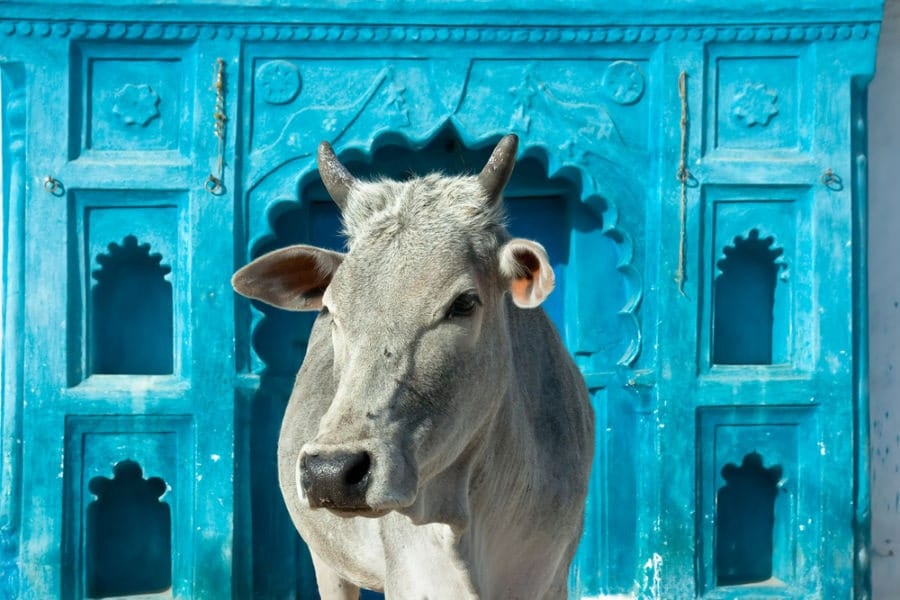
Should you visit India with kids?
Table of Contents
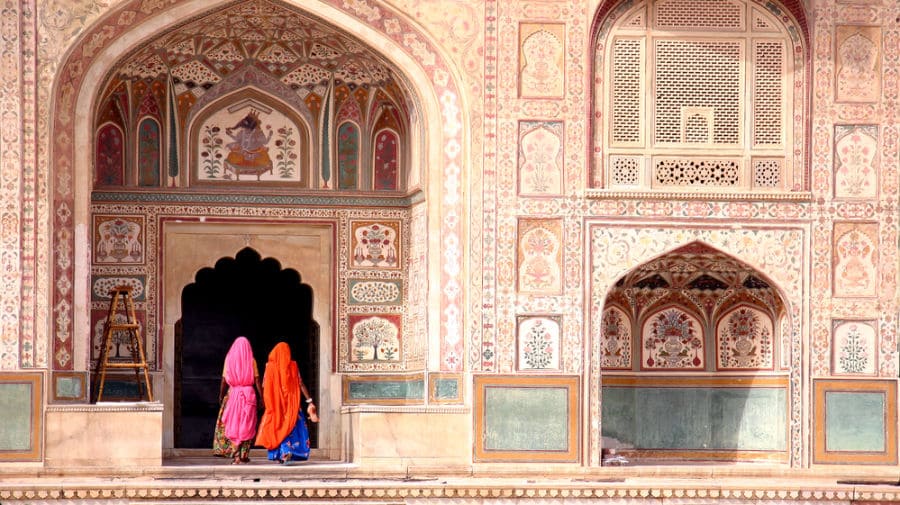
Deciding whether or not a trip to India with kids is worth it really depends on you and your family. How do you think your kids will react to travel in a developing country? India is magical but it is also big, noisy, crowded and, at times, overwhelming.
If you have travelled in other developing countries such as Cambodia or Nepal , then India will feel more familiar. If, however, you have only travelled in Western countries then India might not be the best option for your first ‘off the beaten path’ experience.
That said, another question to consider is your budget. India does luxury travel very well so if you are prepared to splurge then you can have a very comfortable time travelling around India.
One other factor to consider is how old your children are. Travelling to India with a baby is easy whereas travelling to India with a 1-year-old or a toddler is more challenging because they are active but perhaps not steady on their feet. There’s also that wonderful toddler tendency of putting everything in their mouths!
Older children might find the obvious poverty challenging and teenagers, girls in particular, will probably feel more comfortable adopting a versions of the local dress and dressing more conservatively than they do at home.
Be aware that children, particularly Western children, get a lot of attention in India. The enthusiastic cheek-squeezing and pleas to smile for the camera is done with the best of intentions, however it can be very overwhelming. Don’t hesitate to ask well-meaning locals to stop taking photos or squeezing cheeks.
However, I do believe that as long as you are prepared then you will have a great time. This guide to India with kids shares my top tips for travelling around the country as well as where to travel in India, the best time to travel in India and more.
The best places to visit in India

You could spend a lifetime exploring India and still not see all that there is to see. If you’re wondering where to travel with kids in India then the following cities and states are some of the places that we enjoyed best during our time in India. This post also lists some of our favourite places to visit in India .
Rajasthan for kids
Home to pink palaces and blue cities the state of Rajasthan is a great place to start your Indian adventure. It’s also India’s most popular destination with a well-functioning tourist infrastructure.
You can ride a camel in the Thar Desert, paint an elephant’s trunk, go on a tiger safari in Ranthambhore National Park and more.
Rajasthan is also home to some of India’s most family-friendly festivals including Holi , the Pushkar Camel Fair and the Jodhpur RIFF .
For a more detailed guide to visiting Jaipur with children, take a look at this post .

Delhi for kids
The chaotic capital of New Delhi is a fascinating place to explore filled with ancient monuments and sights steeped in history. It’s also a great place for food and a fun place to go shopping.
New Delhi also has some great family-friendly tours including a cycle ride through the ancient streets of Old Delhi. For New Delhi travel tips and ideas on things to do for children, take a look at this post .
Agra for kids
You can’t visit India and not see the Taj Mahal! India’s most famous monument is truly impressive and you should visit Agra Fort while you’re there as well. If you can, make sure you book a room at the incredible The Oberoi Amarvilas .
Kerala for kids
Mellow Kerala in southern India is a fantastic family holiday destination and an easy place to travel with kids. One of the highlights is floating along the region’s backwaters is on a traditional Keralan houseboat. This post shares one family’s adventure along Kerala’s backwaters .
Goa with kids
Like Kerala, Goa is an easy place to travel with kids, home to palm-fringed beaches and a range of accommodation options; these are some of our favourite family-friendly hotels in Goa. Goa is a really good places to visit with toddlers in India.
Assam for kids
Searching for rhinos in the Kaziranga National Park is an amazing experience for the whole family. Base yourself at Diphlu River Lodge .
Jammu & Kashmir for kids
The hill station of Gulmarg, in the state of Jammu & Kashmir, isone of Asia’s top ski resorts. It’s home to waist-deep powder snow, near-empty ski runs that go for miles and miles and some of the most affordable skiing in the world.
Gulmarg often suffers from political unrest, make sure to check the security situation before travelling. Click here to read about a family skiing holiday in Gulmarg .
The Himalayas for kids
Once you’ve found your feet, consider a jeep adventure from Srinagar in Jammu & Kashmir to Leh in Ladakh, like this one .
The best time to travel in India
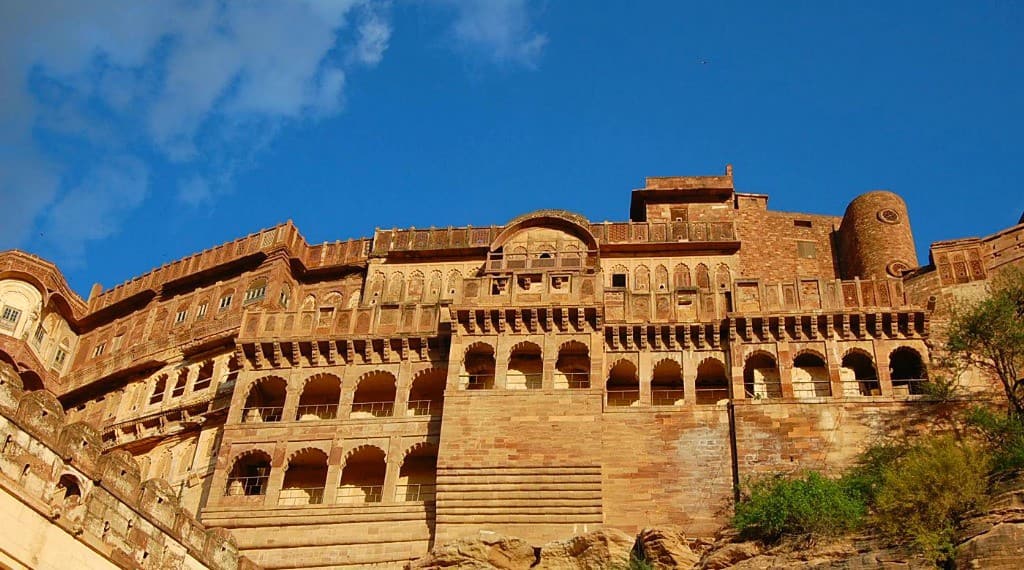
The size and geography of India means that there’s always somewhere to go at any time of the year. Generally speaking there are three main seasons: summer, winter and monsoon.
Make sure to check a climate chart before booking your trip and choose your dates and destination wisely; exploring Rajasthan in 45C heat or navigating Kerala in the monsoon rains is not a good idea!
Peak season in India
October to March: Cooler climes make these months ideal for visiting India’s star attractions such as Rajasthan.
April to May/June: Temperatures in the north can exceed 40 degrees Celsius. The south remains a little cooler but with a lot more humidity. Humidity levels rise as the monsoon season approaches.
This is the best time to visit the hill stations in the north which offer respite from the heat. Avoid the cities.
Monsoon season
June/July to September: This season is often very muggy and hot. Thunderstorms and heavy rain showers are intermittent and dramatic. The rain can bring much disruption to the infrastructure, with flooded roads and frequent power cuts.
It is difficult to escape the rains, with the one exception of Ladakh. However parents should be aware of the high altitudes in this region.
Family hotels in India
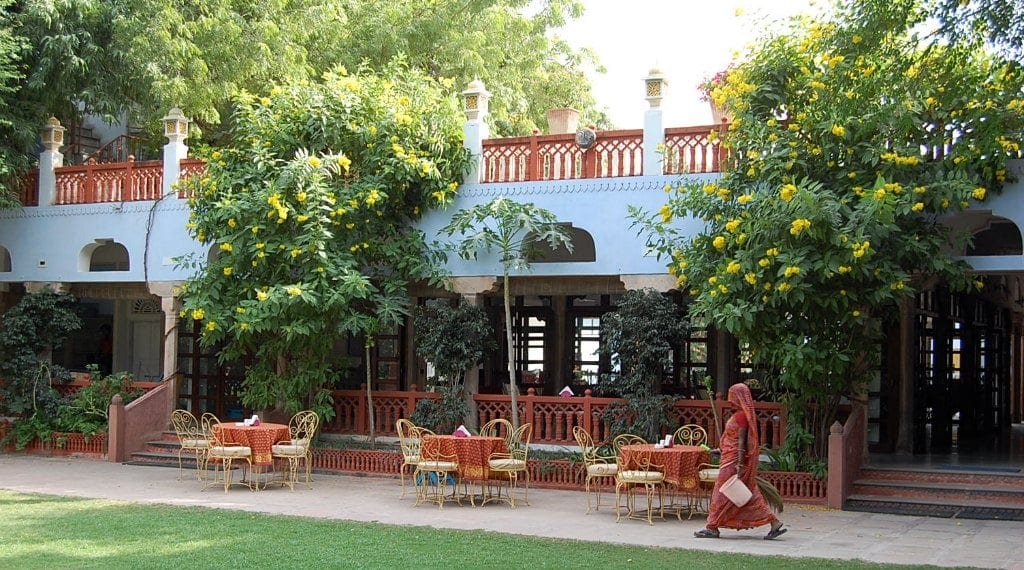
India does budget accommodation very well and it does luxury hotels extremely well. What it doesn’t have a lot of is good, value-for-money mid-range accommodation. You will find a lot of “heritage hotels” across India. Often these are dusty, tired, former “palaces” that have been given a lick of paint and called a hotel.
At the budget end of things, guidebooks like Lonely Planet India do a great job of listing cheap hostels. If you’re prepared to pay big bucks then there a lot of really beautiful hotels. Some of the more top-end hotels, such as those owned by the Oberoi group , have started cater for children but there are few that offer the kind of kid-friendly touches that you might be used to.
For inspiration, take a look at this post where I share seven of the best hotels in India .
Hotel room options for families
Hotels in India very rarely feature the range of family accommodation options found in hotels in the U.S. for example.
It’s unusual to find hotels with rooms housing two double beds. More likely you will find rooms with one double bed and a maximum of one extra bed allowed per room. Families with more than one child will usually have to book two hotel rooms. Some hotels are happy for a child to share a bed with their parents.
Budget hotels tend to be more flexible when it comes to the number of people per room but be prepared to splash out on two rooms in higher-end hotels. Inter-connecting rooms are not common either. Most mid-range and all high-end hotels will have air conditioning.
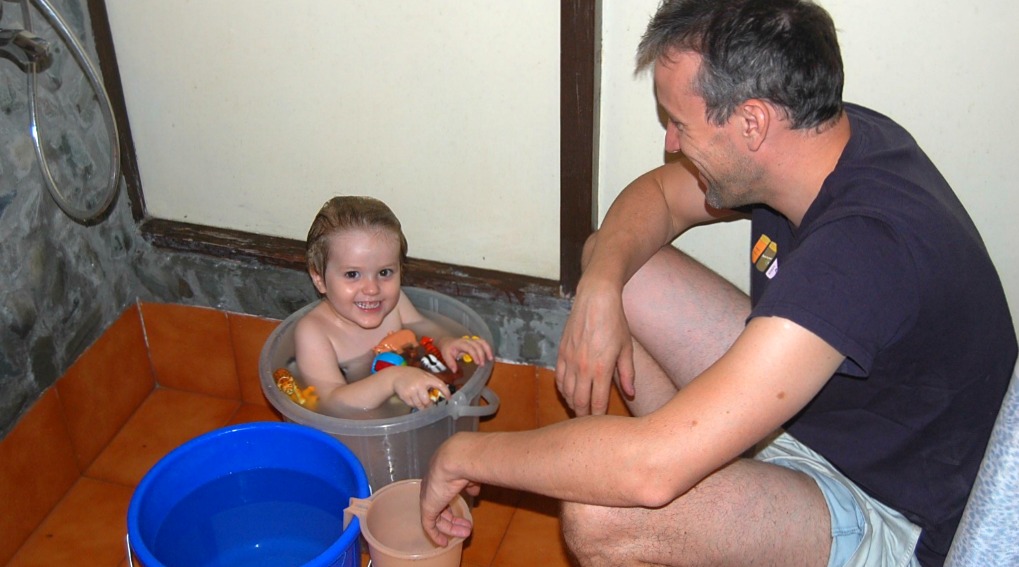
Hotels in India for babies
If travelling to India with a baby , you’ll find that staff will often try to help you out. Babysitting is generally available at most top-end hotels but not common in mid-range or lower-end hotels. Make sure you have a good travel cot with you (baby beds are generally only available at high-end hotels) and a travel high chair is also a good idea.
Hotels in India often have rigid meal times so be prepared to either wait for your kids’ food or bring lots (and lots!) of snacks with you.
How to avoid getting sick in India

Understandably, health comes at the top of the list of concerns for families travelling in India. Before leaving home, it’s worth making an appointment with your doctor to ensure that everyone’s vaccinations are up-to-date.
Make sure you bring a basic medical kit with you that includes the following:
- rehydration preparation
- medicine for fevers
- treatment for diarrhoea and upset stomachs
- antiseptic cream
- a thermometer
- any other medicine that you might require
- mosquito and insect repellent. This post lists the best mosquito repellent for India ).
You should also travel with insurance that covers medical assistance.
Medical care in India
Many embassies list hospitals in clinics in major cities, such as this one from the US Embassy . Most mid-range and top-end hotels have a doctor-on-call and 24-hour pharmacies are also available. Over-the-counter medicine is cheap but it’s worth buying whatever you need from a good pharmacy to avoid purchasing any out-of-date drugs.
Delhi Belly
The most common problem when travelling in India are stomach upsets. You can try avoiding the infamous Delhi belly by following these suggestions:
- Eat food that is freshly cooked and served hot . Depending on where we were travelling, we would sometimes just stick to the vegetarian dishes. It’s best to avoid salads unless you can be sure the lettuce (and other veggies) have been properly cleaned and disinfected.
- Avoid food from street vendors . I ended up in the hospital for two days with a severe case of food poisoning after eating from a roadside stall. That said, we had a lot of friends in India who would eat street food believing the food was freshly cooked and hot (and therefore safe).
- Drink only bottled water (and other beverages) and avoid ice , which is made with tap water.
- With fruit , we would choose those that needed peeling (oranges, bananas) over those that needed disinfecting (apples etc..)
Dengue Fever
Dengue Fever is another concern when travelling in parts of India. It is an infectious tropical disease also known as ‘break bone fever’ owing to the severe joint and muscle pain victims experience. This post has more information on how to avoid dengue fever . Dengue is most common in India during the few months after the monsoon but also occurs during the monsoon season.
Transport in India
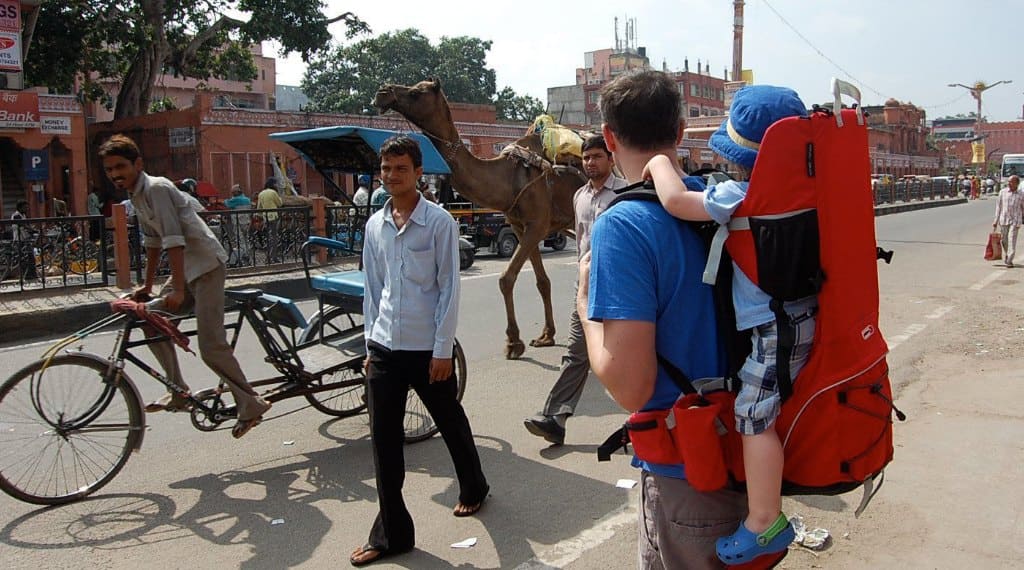
Planes, trains or automobiles are your options for travelling around India. There’s also the bus but I’d only recommend this if you were seriously trying to save rupees. Even the “deluxe” Indian buses can be challenging with young children; long journeys with infrequent stops for food and toilet breaks, and often manned by kamikaze drivers.
One site that is very useful for booking tickets for air, as well as rail, is www.makemytrip.com . This post shares some more transport in India tips .
Plane travel in India
Air travel is undoubtedly the fastest way to get around. There are a number of popular low-cost domestic airlines including:
- Air India Express
- AirAsia India
Infants under two pay taxes only.
Train travel in India
Travelling by train is a quintessential Indian experience . Indian Railways is one of the largest rail networks in the world and carries nearly 20 million people every day .
There are seven different classes of train travel , although not all classes are available on every train. They range from 1AC (1st class air-conditioned) to an unreserved seat in 2nd class. Children up to the age of 4 travel free, children aged 5 to 11 pay half fare and children aged 12 and over pay full fare.
It’s worth noting that if you are booking an overnight sleeper train, you are not guaranteed to have the compartment to yourself unless you buy all the berths in that carriage.
The excellent website Seat 61 is a great place to go for more information on train travel in India.
Hiring cars and drivers in India
If you want to drive in India you must either be a legal resident with an Indian driver’s licence or have an International Driving Permit. However, in all honesty, India can be an intimidating place to drive.
More common for travellers visiting India (especially if travelling with kids) is to hire a car and driver. Your hotel can usually arrange this for local sightseeing. If you would like to hire a car and driver for a longer journey then please get in touch with Stubborn Mule , who can help you plan a fantastic family trip to India.
Taking an autorickshaw in India
In cities and towns, autorickshaws are a cheap, fast and fun way to get around. Don’t expect car seats! Or seat belts for that matter…
Travelling to India checklist
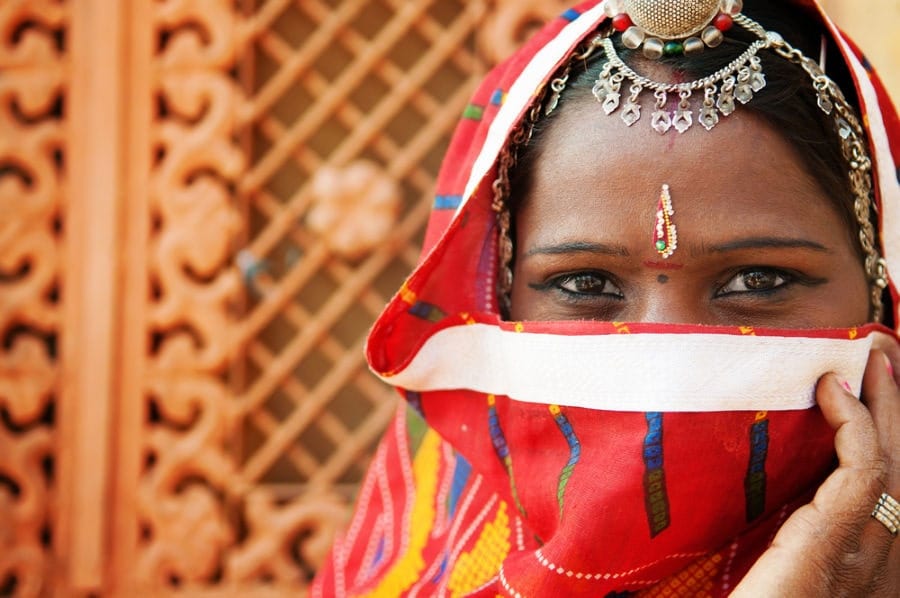
Depending on where you are in India, you can buy a lot of the things you might need but prices may be higher than at home and your favourite brand might not be available. The following items may be useful to pack:
- Diapers / nappies are available but quality can be variable
- Good, sturdy shoes .
- Suncream and child-friendly insect repellent .
- Books, games and electronics
Share this post:
About the author.
Katja Gaskell
43 thoughts on “heading to india with kids you must read this first”.
There are so many places to visit in India. Thanks for putting this places together. You’re kids are gorgeous.
Thank you so much!!
Wow! What a very comprehensive guide! Kudos to you guys for all the effort in putting this together. Families will surely benefit from this especially with the practical info like medical care.
Thanks Darlene!
Very interesting tips about traveling in India with kids. Somehow I had in mind that India is one of the lesser kid friendly countries.
It’s definitely not the easiest (or the most obvious) but it is entirely possible.
Perfect timing! I have a close friend contemplating India with kids and I will send her your informative post. I have heard excellent things about Goa and I’m happy to learn it is an easy place to travel with kids.
Oh that is good timing! I hope they find it useful.
Great tip about the fruit! I love traveling with my family. This is such a wonderful comprehensive guide, thanks for sharing!
Thank you so much for your comments!
This seems like such a dream trip! I would love to take my kids!
Hats off to you guys for taking your kids to India! I haven’t been myself, but have heard many times that nothing quite prepares one for travel in India. This is a very comprehensive guide covering many of the places I’d like to visit in India. I especially would love to visit some of the colorful cities of Rajastan!
Rajasthan is the India of movies full of colour and palaces – a great place to start your Indian adventure!
Don’t have kids myself but really enjoyed this read! Great article for including some practical precautions to take while having a good time.
What cute “models” you have in your post! This is so amazingly comprehensive and is so encouraging for anyone planning a trip to India. If these little ones can handle the heat and new environment, anyone can!
Thank you so much! And yes, if kids can travel India then anyone can!
Lucky kids! My parents just took me to Dollywood!
Haha! I’d LOVE to go to Dollywood!
What a wonderful itinerary you’ve put together! Can’t wait to visit India one day. I’ll be sure to use your guides for trip planning.
Thank you!!
Great post, I know a friend of mine is looking to travel to India with her kids sometime so I’ll pass this link onto her!
Thanks so much, and thanks for sharing!
Wow, what an amazing experience for your kids…and you! Beautiful photos and great post, thanks for sharing 🙂
Thanks for your kind comment, I’m pleased you enjoyed it! Katja
We just found out that my husband may have to travel to India for work. It’s only for a week, so the kids wouldn’t tag along. But if the opportunity arises for a longer stay these tips will be super handy!
Where will your husband be going for work? And will you get to go too?? I hope you get to take the kids one day
What a fabulous guide–wow! You’ve answered so many questions and I love seeing both of your photos from along the way. Good work! 😉
Thank you so much!
What an incredible resource!! This guide is incredible! Great job!
Yes, there IS a lot to love in India for kids! Had such a great time last year. Great post! Oh, this photo of your toddler in a bucket.. we have 2 of these photos as well.
Haha!! Where did you go in India and what were your highlights? Thanks for commenting!
We have two boys, ages 5 and 2, and thinking about going to India in March 2018. We essentially would like to see the Taj Mahal, as this is the only World Wonder we have yet to see. With kids spring break, we only have 7-10 days, and that includes travel from the States. What itinerary would you recommend? Any insight you can provide will greatly be appreciated. We followed your Peru itinerary exactly how you depicted it and it was extremely helpful. Hoping you offer something similar for India.
Many thanks for getting in touch. Given how much time you have, I would recommend doing a Delhi – Agra – Ranthambore trip. Ranthambore is where you can go and (hopefully!) see tigers. Khem Villas is a wonderful place to stay there, great for kids with a strong emphasis on conservation. If you have a couple of days longer, you could spend some time in Jaipur.
So, as a rough itinerary, I would recommend:
Arrive Delhi, 1-2 nights in Delhi Train to Agra, 1 night in Agra Travel to Ranthambore 3 nights in Ranthambore Travel to Jaipur, 2 nights in Jaipur Return to Delhi
Hope that helps! Please do let me know if you have any further questions.
This is very helpful, thank you! What about getting around? should I book in advance in the US before I leave, or will it be cheaper if I book excursions from the hotel once I get there? I’ve been getting quotes from travel agents in the States and I’m surprised how much they are charging. The cost is around $5,000 USD for only 6 nights which includes hotel and tours with a private driver. Let me know what you think.
This is a very informative and interesting article. Thanks for sharing keep share more!
OK, that cow photo is a money shot! I took a group of 20 college kids to India a few years back, but can’t imagine doing it with kids. The college “kids” were hard enough to keep track of! =)
Ha, too funny! Where did you go in India?
India is a fantastic place to travel. As an adult I found it magical. I imagine that visiting can profoundly influence youngsters as well as adults.
Absolutely, it is such an incredible country and there is so much to absorb. Where did you go in India?
Comments are closed.
Travel Stories: India With Kids
Number of times of India being life-changing for celebrities? Lots. Well, there’s The Beatles, and Alanis Morissette, but I’m sure there’s more. India is one of those places that I’m both fascinated and intimidated by. And while I’ve heard time and again how incredible India is to visit, I find just thinking about it kind of exhausting. That’s why I’m so pleased that Kaamna Bhojwani-Dhawan is sharing this enlightening piece with Have Baby Will Travel on India with kids…
India with kids…
Baby Gear In India…
India with kids? Your first response would likely be: why would I do that? For most people in the developing world, India is a maze of pollution, crime and chaos, as portrayed in Hollywood blockbuster Slumdog Millionnaire. And it is. But it is also a country that is rich in culture, history and one of the most dynamic places in the world today. Only in India will you find 1000 year old temples on the same block as avant-garde nightclubs, and it is polarities such as these that make India one of the most intriguing places on Earth to visit.
I am certainly biased – I was born and raised in India and visit now at least once a year. But I am a mother and practical enough to admit that it is not the easiest place to navigate with a child . Still, it has and can be done, and as mentioned above, the rewards are plentiful.
The first thing to know about India is that it is in the middle of an economic explosion. Most international brands have raced to establish their Indian presences as a result of which, if you are in the major cities, you will have easy access to malls and familiar, or at least comparable baby supplies. Everything from diaper brands such as Huggies and Pampers, to Avent bottles and Neutrogena sunscreen are easily available. If you are able to locate a Mothercare, you will be treated to a one-stop baby shopping experience but for your everyday needs, the local convenience stores will do as well.
When you are seeking accommodation, I would recommend staying in no less than a three star hotel with your family. You want to make sure you are in a densely populated, ideally centrally located area, with basic amenities like running water. A concierge service would be great too, to guide you and translate into the local language as needed. You will find that most people in the urban parts of India speak some amount of English, especially when it comes to commercial transactions.
*Actual* Indian Food (yum)
If you are a thrill-seeker, you will enjoy driving in India. For the rest of us, it’s the closest you come to to experiencing a heart attack. Know first off that car seats are not mandatory and are actually rarely used. It is only now that in higher socio-economic circles that car seats are gaining popularity and watching a family of five roll by on a scooter will certainly give you some perspective. You won’t find car seats in taxis either, so if you are bent on having one, bring your own and hire a car with a driver. You can get one for the day for between USD 20 and 40. Completely worth the expense so you don’t have to battle the traffic or risk losing your way.
Food for kids in India is actually easier than you would imagine. Rice is a staple in most parts of the country and combined with yogurt is a safe meal for everyone, particularly for sensitive or unsettled stomachs. Kids also love naans and plain dosas (a crepe-like South Indian breakfast food) and of course, all manner of sweets available at every corner store. For the more adventurous kids, the curries and tandoori delicacies are a must-try, just make sure you tell them to tone down the spices (“mir-chee kum”). And if you just want a taste of home, McDonalds, Domino’s and other well-known fast food chains are always an option.
If you are visiting India with your children, there are a few health precautions you can take to ease your mind and prevent illnesses:
- Have your children vaccinated. The Center for Disease Control recommends up-to-date routine shots such as MMR (measles/mumps/rubella), DPT (diptheria/pertussis/tetanus) as well as malaria prevention.
- Always drink bottled water, and it’s even better if it is boiled. Make sure the seal on your bottle is untouched before you drink.
- Try to avoid street foods but opt for more established, local eateries with reasonable hygiene standards to sample local fare. If you do decide to eat at a local hawker, avoid uncooked or cold foods like raw vegetables and chutneys – stick to the cooked stuff.
Welcome To Delhi…
It’s important to remember when visiting a place like India that your attitude as a parent will severely impact your children’s view of the country. If you are open to the differences in the culture and lifestyle and not fixated on diseases and other things that can go wrong, your children will enjoy an unbiased view, free of fear and disdain of a fascinating country and you will not regret taking them there. I guarantee it.
Kaamna Bhojwani-Dhawan is the founder of Momaboard.com an online community dedicated to parents traveling with young children. Like us at facebook.com/momaboard and follow us on Twitter @momaboard for everything you need to know about international family vacations.
12 Responses to Travel Stories: India With Kids
Great article! We moved to India when our baby was three months old. She is a thriving thirteen-month-old now. Masala dosa was one of her first finger foods! She’s been loving the rice and yogurt, bananas and mango, and her spicy tolerance is higher than mine now. The ease of finding Western products, American and European brands, while pricey sometimes, definitely gives me peace of mind that she’s staying happy and healthy.
Fantastic, Stephanie!! Sounds like a great adventure with your little one.
India is definitely doable with kids 🙂 We moved there with our four children (to Tamil Nadu) and lived in a very remote village. It was a great experience!
We left to have baby number 5, (which we had in Alaska). I would love to go back some day (but it would have to be after we finish our Alaska to Argentina road trip!)
Thanks for the article.
Do not forget about travel safety issues when you plan your travel to India with kids. Take into consideration possible travel dangers and prepare for travel according to list of these travel dangers. Be prepared and enjoy your travel!
We did India with our then 15-month old baby. We had a crazy 5-day trip to Delhi, Agra and Jaipur and we loved every minute of it. Everyone told us not to go, but it’s one of the best trips we’ve had ever!
Would love to know your tips, on short trips. Previously i have used buses, trains, rickshaws, bikes now i have a 19 month old.
Good Article! Intersecting story, Really India is interesting place with lots of fun for kids.
Im planning on traveling to india with my four kids.the youngest of which is almost 2years. Im a bit uncertain with regard to hygiene and malaria risk. Should this be a major concern.
Malaria risk depends on the region, you would be wise to check out the CDC site to see if where you’re going requires precautions. My advice is that you would be wise to avoid bug bites whether there’s a risk or not. With reard to hygiene, best practices are always key no matter which country you’re visiting. Have a wonderful trip!
Great post and information you have provided and thanks for providing this information to us and India is also a great place for you if you are traveling with baby india is a country of diversity there are different language , culture, weather , religion with same time you can enjoy there but if you are traveling india then you must read about india and places weather conditions and foods and also you should follow the safety precautions and street foods and More.
Very comprehensive and informative! I think these tips and advice are much helpful. Thank you for such detailed description of the destination.
This is great; thank you so much! We are heading to India next year with our children, and after a very nad experience in Egypt, I am a little worried about how they will cope with the heat and food. This has helped me get a little perspective!
Thanks so much for sharing your experience.
Leave a Reply Click here to cancel reply.
Name (required)
Email (will not be published) (required)
This site uses Akismet to reduce spam. Learn how your comment data is processed .
Travel Partners
Additional Sponsors
Site Map • Privacy Policy • About • Consulting
Have Baby Will Travel® is a registered Trade Mark ©2007-2024 All Rights Reserved

Travel to India With Kids: Our Tips After Living There For One Year
When my oldest children were 3 and 1, our family spent a year living in India. Traveling to India from the US with kids was a big feat.
We discovered many cultural differences from the US. Some were expected, and others caught me by surprise.
Sharing the beauty and culture of India with our kids is something we don’t regret.
Some of the links on this site are affiliate links, meaning if you book or buy something through one of these links, we may earn a small commission – at no extra cost to you! Read the full Disclosure Policy.
Travel to india with kids – things to know, indians love children.
Luckily, I was warned about one specific cultural difference that I found very surprising: young Indian men love babies.
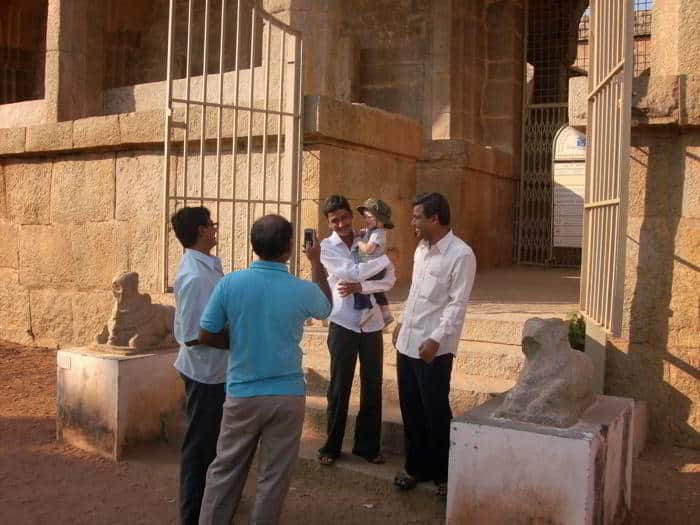
In the US, the stereotypical baby lovers are old ladies and pre-teen girls. I had plenty of grandmas cooing over my young children in Southern California grocery stores.
But in India, for some reason, it’s the young adult men adoring babies and young children.
My son, Dalton, turned one just before we moved to India, and spent his toddler year there. He is very fair, quite blond, and extremely friendly, especially with adults. All of these attributes made him an instant favorite in any public place.
In contrast, my daughter Maggie, who was three at the time, was much less friendly. Soon after arriving in India, she began to scream anytime someone approached her. Too many ladies peppering her with well-meaning but painful “you’re-so-cute” pinches made her very un-friendly. But Dalton loved the attention and easily made new friends.
Everywhere we went, crowds would form around the kids. Dalton would happily let anyone hold him and pose for photos. Most of these people were either groups of school kids, or young men.
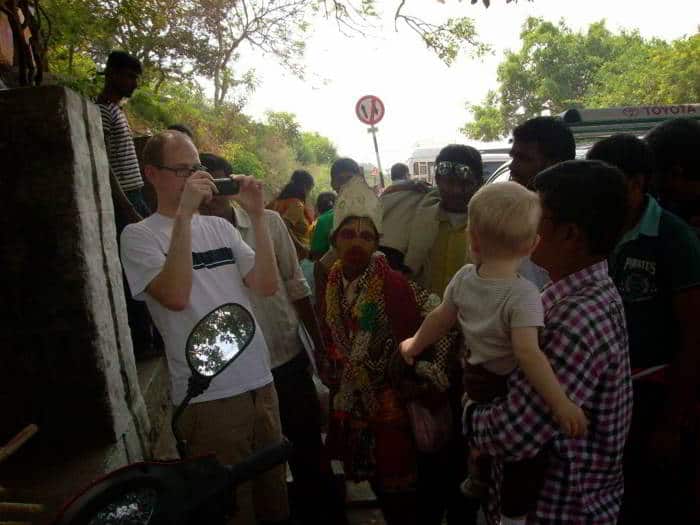
I wore him in a pouch sling most of the time, to keep people from trying to grab him out of my arms (this happened frequently), but generally he was happy to make friends.
A lot of Americans would consider this kind of attention from a young man creepy behavior, which is why I’m glad I was warned about it.
It’s just a cultural difference.
Photos With Kids
Besides wanting to hold and touch our little blond baby, everyone wanted to take pictures with him. He started asking to look at people’s cameras or cell phones to see his picture with them afterward.
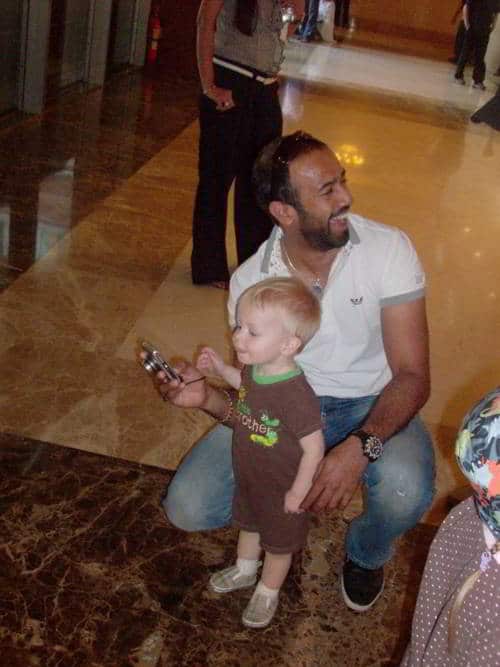
Sometimes it wasn’t just the baby. I went to visit some cultural sites with my sister-in-law when she visited, without the kids, and we were surprised by how often young men asked to take photos with us.
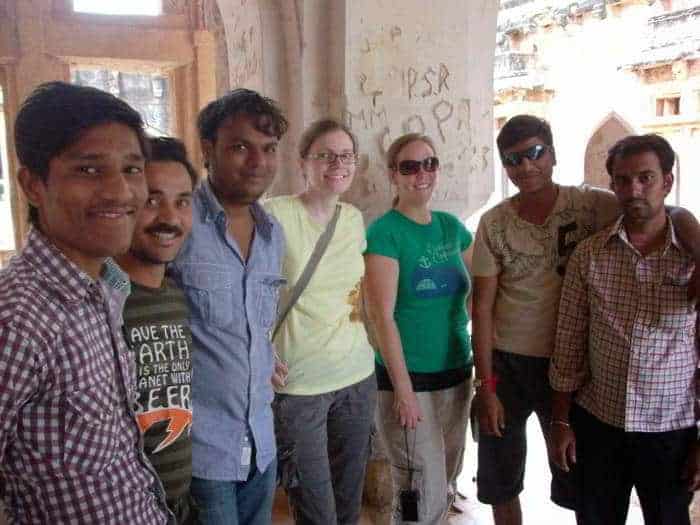
Dalton had a consistent fan club at church, a group of young adult men who entertained and played with him during meetings.
He was also such good friends at our regular McDonald’s that the manager took him behind the counter to show him around.

We went to many other Asian countries and found they were all more conservative in their baby adoration. No one tried to take my baby from my arms, and sometimes we were even asked permission before photos were taken.
Nowhere else did we experience the enthusiasm for blond babies as we did from young men in India.
Our year in India exposed the kids to different cultures at a young age. I hope it fosters in them appreciation of the world’s diversity.
One thing that makes India special is their LOVE for children. Children are welcome everywhere.
It’s understanding and navigating everything else in the country that makes visiting the country difficult!
PLAN A TRIP TO INDIA WITH KIDS
Take your time – India moves at a different pace and you cannot do as much in a day as you can in your home country.
Keep bugs away – Focus on keeping covered with mosquito repellent to avoid bites.
Eat what you can – Indians are so open to children and almost every restaurant will make you something to order for your child.
Prepare for poverty – The sight of children weaving between traffic begging, skinny stray animals and the multitude of people sleeping on the streets is common throughout India.
Embrace the differences – The rules are different in India – embrace this. Yes it is not that safe to let your 4 yr old drive an auto rickshaw, but it is allowed and accepted and your kids will LOVE it and remember it forever.
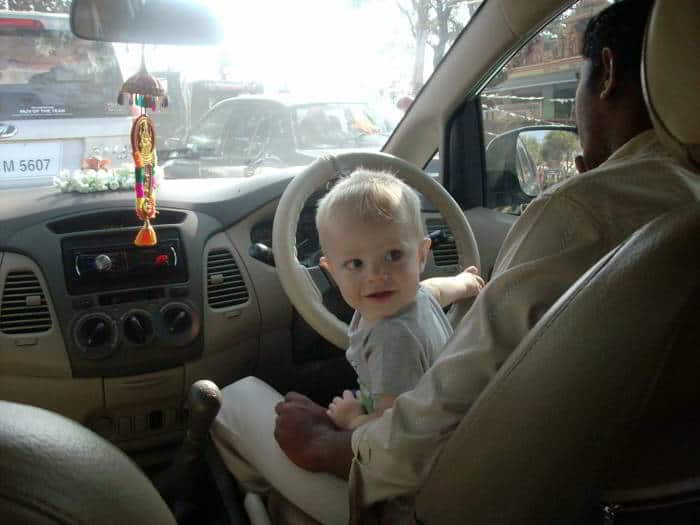
INDIA CITY GUIDES WITH KIDS
Best Places to Visit in Jaipur – “At first glance, it doesn’t seem like a city made for families, but surprisingly, there’s a lot of things to do in Jaipur with kids. Beyond the busyness, the city itself is an ideal starting point for any family adventure in India and the best places to visit in Jaipur won’t disappoint at any age.” – whereistheworld.ca
Top Places to Visit in Jaipur – “We loved Jaipur and I think because we had no expectations we were pleasantly surprised. There are so many beautiful places to visit in Jaipur, I think it was the perfect place to be introduced to India.” – our3kidsvtheworld.com
Bangalore: 5 Fun Family Activities – “This “Garden City of India” is a great place to experience India. With a population of 8.4 million, it is the country’s third largest city and the capital of Karnataka. Its official name was changed to Bengaluru in 2006, but its new name is not commonly used.” – wegowithkids.com
Kerala Highlights – “Houseboat tours through the backwaters are the most popular tourist attraction of the area and one of the main reasons we chose to travel to Kerala.” – wegowithkids.com
Things to Do in Fort Kochi – “Fort Kochi (or often called Cochin) is often visitor’s first stop when visiting the southern Indian state of Kerala. While the Taj Mahal beckons in northern India, Kerala offers travelers a slower pace of life in the lush waterways, tea fields and beautiful beaches.” – 5losttogether.com
Northern India Itinerary – “Think of Northern India, and the grand palaces of Rajasthan and the iconic Taj Mahal probably come to mind. However, travelling with our 2 and 3 year old boys, we were conscious that a full week of touring palaces and forts may be a bit much.” – travlynnfamily.com
Pondicherry: Top 5 Things to Do – “What a lovely surprise this little coastal town was. Whilst there is no mistaking you’re still in India, every now and then a little bit of the past will appear from around a corner, transporting you to a quaint French village, complete with patisseries, colourful colonial architecture and beautiful churches.” – travlynnfamily.com
Explore Adventure, Yoga & Wellness in India – “India is a land of Yoga where travelers enjoy rejuvenation of body, mind, and soul.” – travelwithme247blog.com
WHERE TO STAY IN INDIA
While travelling with children, do not compromise with the accommodation.
Book a hotel in advance and choose a one that is kids friendly.
It’s nice if the hotel has a kids playing area and a 24 hours doctor’s facility. You never know when your child will fall sick; a doctor in the vicinity can help you get the medical attention at earliest.
PIN THIS FOR LATER
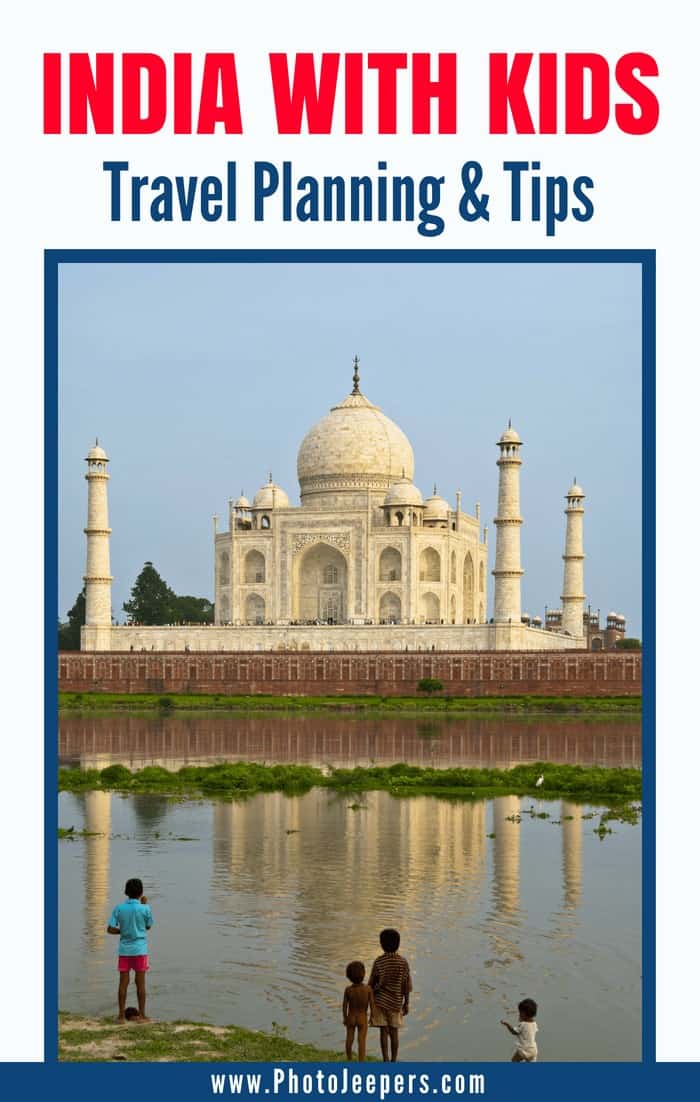
If you enjoyed this, please share and let us know your thoughts below.

As an Amazon Associate we earn from qualifying purchases.
Similar posts.
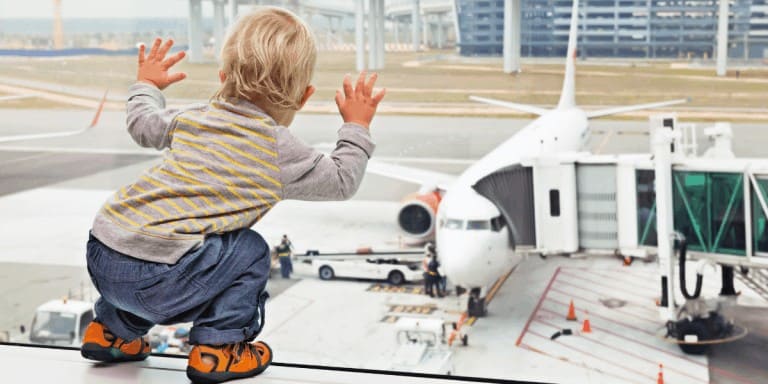
Flying with a Baby and Toddlers: Tips for Carryon and Activities
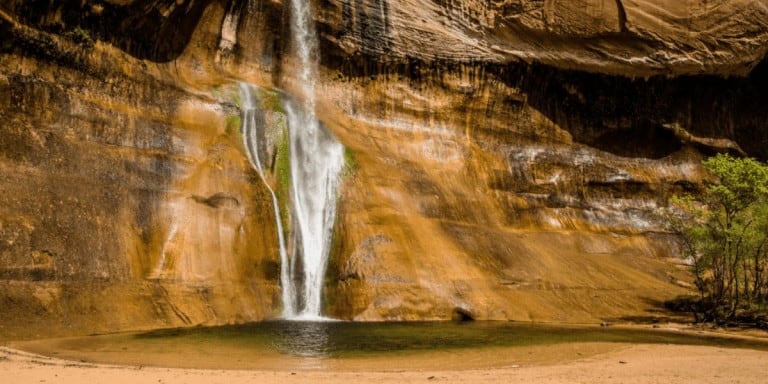
Lower Calf Creek Falls Hiking Guide

Top 15 Tips for Taking Babies to the Beach
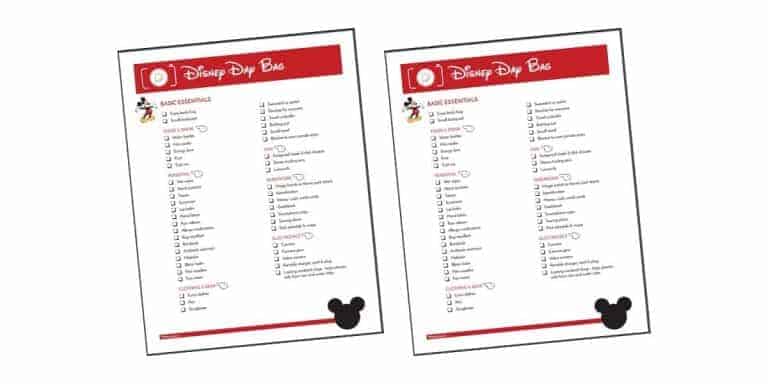
Disney Packing List: What to Pack for Day at Disney With Kids

Fun Travel Games For Adults
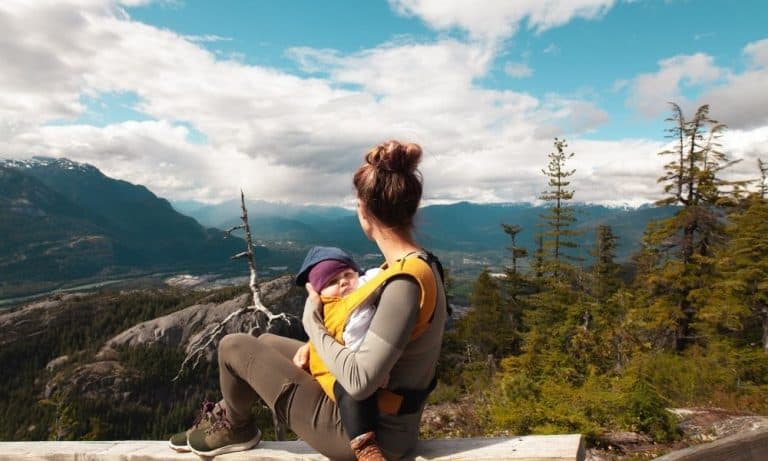
Breastfeeding Tips For Traveling With a Baby
21 comments.
We found a similar thing in Turkey when it came to young mean and babies. They absolutely loved them!
I was born and brought up in India but left some 22 years ago, recently went back with my then 1 year old was blown away with the friendliness and the lengths strangers went to accommodate my daughter. From special made to order at a suepr busy eatery at the Delhi domestic airport to the young man sitting next to us on a domestic flight. We were taken care of, pampered even just because we had a child with us. No blond children, Ia very Indian looking kid.
The information shared in these article is really appreciable. Really a very good article which help reader to increasing their knowledge.
We have been in India for a few days, the people here are so friendly and we have been in a lot of photos already. I have a very cute 3 year old but for once she is not the only one to get asked for a pic!
Ha! You do feel ‘famous’! Enjoy your time there!
You have done an excellent work in passing out the message through this blog, it was really helpful information traveling to India with kids. keep up the good work!
We are happy to hear it was helpful, thank you!
The Indian men whom you talked about are probably wanting to settle down and have kids. I read that 25 years old is the ideal age for Indian men and women to get married. Aside from that, they are probably just super friendly to Western families. Dalton looked so happy.
What a great age for your kids to be there and great that he liked the attention, not so for your daughter though. I haven’t made it to India yet so I had no idea that young men loved kids so much. I have been to countries before when kids and adults have wanted pictures with me because I am so white!!! It can get tiring but if it makes them happy when they have so little then I am all for it 🙂
It must be awesome to walk around with a little blond photo magnet, although you must have been warned indeed. The photo with the manager at Mc Donalds is really amazing. Although it is just a cultural difference I would be on high alert the whole time, but with all good experiences it must get comfortable.
I think the “high alert” thing is more of a cultural differ nice in western cultures, where we worry too much. There were definitely some grabby strangers that I was wary of, that’s when I held him close.
What a great post, thank you! I have considered taking our kids to India but wasn’t sure how kid friendly it is. Boy, it sounds like the complete opposite!! What an interesting cultural difference. I never would have guessed. My kids have dark brown hair so I’m not sure they would be quite as interesting as a lovely blonde baby 🙂 which certainly is a little more unusual to see there I guess. Do they fawn over older children, too, or just babies? Love this cultural difference.
I think it was mostly babies and toddlers, even the Indian ones. But my four year old was so unfriendly there, I don’t have personal experience.
I am so glad to hear that you have had such a wonderful experience in India. Yes, lovely to see how so many people just want to take pictures with you, I am sure you felt like a celebrity isnt it? 😛 haha Meanwhile, your tips about traveling with kids are very well thought off and definitely seem to be a result of your experience.
Thank you! Yes, we definitely felt like the baby, at least, was a celebrity.
I love how much kids are loved in Indian culture! But I would be pretty freaked out if people were coming up to me trying to take my child out of my hands! Thank you for sharing this information because now I will be prepared like you were.
Once you’re prepared it wasn’t as big of a deal. There were a few time ago I definitely didn’t let him go. But when people are just being f i.e. sky, and he didn’t mind, Dalton loves going to strangers.
India is a fascinating place and I’m not at all surprised the attention your youngsters got. I received a similar warning/advice before my trip in my mid-20s, that I would be stared and and followed, not because they are stalking you in creepy way, but just a cultural difference and I was going to stand out with my fair skin and blonde hair. What a great place to raise children though – certainly eye-opening but an incredible culture to experience so young.
Wow, good thing you were warned! That would have creeped me out. I didn’t go out without my kids a lot, except in my own neighborhood where people were familiar with us. And we didn’t go out at night very often at all.
Wow, Dalton is a star in India! I’m sure if you guys live there long enough when he grows up he could be a Bollywood star. It is a completely different culture there, I would not be happy with people taking my daughter, although the tour of McDonald’s must have been pretty cool.
The McDonald’s employees were some of his favorite people!
Leave a Reply Cancel reply
Your email address will not be published. Required fields are marked *
- Main Menu ×
- Search Flights
- Corporate Travel Programme
- Group Booking
- Special Offers
- Travel Insurance
- Flight Schedule
- Check In Online
- Manage Booking
- Seat Selection & Upgrades
- Self-Service Re-accommodation
- Request Refund
- Flight Status
- Nonstop International Flights
- Popular Flights
- Partner Airlines
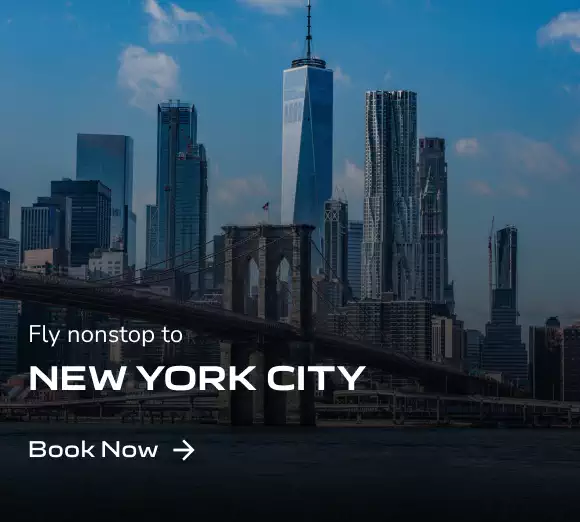
- Baggage Guidelines
- Airport Information
- Visas, Documents and Travel Tips
- First-time Travellers, Children and Pets
- Health and Medical Assistance

- At the Airport
- The Air India Fleet

- About Flying Returns
- Sign In/Sign Up
- Our Partners
- Family Pool
- Earn Points
- Spend Points
- Upgrade Cabin Class
- Points Calculator
- Customer Support

What are you looking for?
Expectant mothers and infants

Mothers-to-be and infants
Nurturing your journey, just like a mother's touch! Your selfless love inspires us to embrace you and your little one with the care you deserve.
Expectant mothers
We are committed to ensuring you have a comfortable journey with us. Your safety is our prime concern. Hence, we have a few guidelines to provide a hassle-free experience.
Travelling while pregnant
You can travel up to the 32nd week of pregnancy if there are no complications. Although, it is best to consult with your gynaecologist or obstetrician before you make any travel plans.
If there is a gap between your departure date and the date you booked your flight, you must get a medical certificate from your obstetrician.
The certificate should:
- Affirm that you can travel and that the pregnancy has no complications.
- Be issued 72 hours before departure.
Travelling beyond the 32nd week of pregnancy
- You can travel up to the 35th week of your pregnancy if you anticipate a normal delivery.
- You will be required to bring a medical certificate from your obstetrician stating that you are fit to travel and that there are no complications.
- If you are beyond your 35th week of pregnancy, we will not allow you to fly with us on account of your safety.
You will not be allowed to travel after the 32nd week in case of the following circumstances:
- You are having multiple pregnancies, i.e., twins, triplets, etc.
- Your pregnancy may be complicated, i.e., you may have suffered a miscarriage on previous occasions or had a complicated delivery in the past.
In the event of an emergency
An emergency counts as an exception and you must:
Fill out the MEDIF form .
Seek permission to travel from the Executive Director of Medical Services. Reach out to our customer service , and they will be happy to guide you.
At the airport and in the air
We understand the challenges of travelling in your condition, and we admire your strength. To make your journey smoother, we have a few provisions in place for you:
- Wheelchair assistance : Walking long distances in your condition may not be advisable. Hence, you may consider opting for our wheelchair assistance.
- Medical rooms and pharmacies: Most airports have medical rooms and pharmacies. You may head to them for assistance in discomfort or an emergency. Click here to check the facilities available at your departure and arrival airport.
- Dining options : We understand that your dietary preference might change now. Maybe you crave a particular dessert, or the baby wants to gorge on fruit. You can choose from our various dining options to select what suits you best.
- Extendable seat belt: We provide seat belt extensions inside the aircraft. Our well-trained in-flight crew will assist you with the same.
Who is an infant?
Children over seven days but under two years on the travel date are considered infants.
Documents
You need to provide valid proof of ID to verify the age of your little one.
Valid ID proof includes:
- Birth certificate
- Vaccination certificate
- A passport is a mandatory document in case of international travel.
If you cannot display valid ID proof on the day of travel, an adult fare will be charged. This is subject to the availability of seats on the flight.
We understand that your little one is your utmost priority, so we have curated special provisions for you throughout your journey.
- Nursing rooms: Most airports are equipped with nursing and mother care rooms. Click here to check the facilities available at the departure and arrival airports.
- Bassinets: We do not allow strollers on the flight. But you can request a bassinet for your little one. Infant bassinets are free of cost but are subject to availability. You can raise a request for the same using our customer support portal .
- Check-in baggage allowance: Your little one is allowed a baggage allowance of 10 kg/22 lb as check-in baggage on all our flights.
- Carry-on baggage allowance: We understand the paraphernalia needed when travelling with a baby. Hence, we allow the following as carry-on baggage: 1. Food for the little one. 2. Feeding bottles 3. A carry-on tote/bag for food and the bottles.
- Priority check-in and boarding: We want to ensure that you and your baby are seated comfortably. So, you can always request our airport staff to fast-track you through all airport formalities.
- Air travel can be a challenging experience for your little one. But our in-flight staff is available to assist you in every way to ensure you and your baby’s comfort. They have everything from hot water to earbuds for blocked ears and lavatory visit assistance.
Minimum age of travel
The minimum age of travel for your little one is seven days.
An exception to the above guidelines is possible in a medical emergency. You will need:
- A medical certificate from your paediatrician.
- Clearance from our medical department. Do reach out to our customer service and they will be happy to guide you.
Guidelines for travelling with more than one infant
When travelling with multiple infants, each baby must be accompanied by an adult. Please ensure your infant is seated on your lap, as extra seats cannot be booked for babies.
It seems like you're in landscape mode. For the best view, switch to portrait mode where the magic happens!
- Skip to main content
- Keyboard shortcuts for audio player

- LISTEN & FOLLOW
- Apple Podcasts
- Google Podcasts
- Amazon Music
Your support helps make our show possible and unlocks access to our sponsor-free feed.
I flew to Japan with my baby. Here's the travel advice that helped me survive the trip
Emily Siner

Journalist Emily Siner went on a trip to Japan with her 8-month-old son and knew it would be daunting. What should she pack? What should she expect? Photo Illustration by Becky Harlan/NPR hide caption
Journalist Emily Siner went on a trip to Japan with her 8-month-old son and knew it would be daunting. What should she pack? What should she expect?
Last winter, my husband and I made the ambitious decision to fly 13 hours with our 8 month old for a two-week vacation around Japan.
We knew flying with a baby would be daunting. What if he has a meltdown on the airplane? What gear do we bring? How will he adjust to the 15-hour time change? And ... will we actually get to enjoy ourselves?

Siner's husband and their 8-month-old son on the 13-hour flight to Tokyo. Siner says their baby loved watching other passengers on the plane. Emily Siner hide caption
Siner's husband and their 8-month-old son on the 13-hour flight to Tokyo. Siner says their baby loved watching other passengers on the plane.
Preethi Harbuck, author of the travel blog Local Passport Family and a mom of six agrees that taking a big trip with young children — that is, babies and toddlers under age 2 — isn't easy. But with the right preparation and mindset, it can also be fun for everyone. You may even be able to "connect with people and places in a new way that [you] wouldn't have been able to experience without kids," she says.
To help set parents up for success, Harbuck and Christine Sarkis, editor-in-chief of the travel website Family Vacationist , share tips on what to pack, how to overcome travel challenges and set realistic expectations.
Take a practice trip

Before you pack your passports for a big international trip, try a shorter trip that's closer to home so you can work out the kinks of traveling with a young child. Photo Illustration by Becky Harlan/NPR hide caption
Before you pack your passports for a big international trip, try a shorter trip that's closer to home so you can work out the kinks of traveling with a young child.
The first step to preparing for a big trip is to take a smaller one, like an overnight trip somewhere close by. It can give you a sense of what it's like to travel with your little one and grow your confidence, says Harbuck. "Find what feels comfortable and keep practicing. It will become easier."
Luckily, my husband and I had a chance to take some shorter trips with our baby before going to Japan. When our baby was three months old, we stayed overnight at a cabin about a half hour away by car. A month later, we took an 8-hour road trip to Chicago to see family.

How to take better (and more distinctive) photos on vacation
From these outings. I learned how important it was to pack a sound machine, which helps my baby fall asleep, and a portable diaper changing pad. I also learned that I didn't need to bring too many toys. My kid loved watching other people talk, walk and interact with each other.
So when we went to Japan, I put those lessons to use. I packed the essentials, left half the toys behind and made sure to sit in an aisle seat on the plane so that my baby, who sat on my lap, could get a good view of the passengers and stay entertained.
Make plans your future self will thank you for
When traveling with a baby or a toddler, everything becomes a little more complicated. There's a lot more to pack (more on that later) and a lot more considerations to make (like naps and kid-friendly meals, perhaps). So the key is to prioritize decisions that will simplify travel, says Sarkis. "Anything you can do to smooth your way [will make you] so happy with yourself."
Here are some planning decisions that our experts recommend.
Put your kid in their own plane seat. Many airlines allow kids under 2 to fly in your lap for a very low rate, sometimes even for free. While that can make travel more budget friendly, Harbuck says it's worth buying your child their own seat. Placing them in a car seat is the safest place for them to sit on an airplane, according to the Federal Aviation Administration. Plus, having your own seats can make long flights more comfortable for the both of you.
Consider their developmental stage. Keep in mind that your child's needs will change as they age. For example, if your kid is walking, it may be harder to "keep them busy and happy" on the airplane, says Sarkis. So you might enjoy your trip more if you choose a destination that's closer to home. Anticipate what stage they'll be in at the time of travel and plan accordingly.
Add more adults to the trip. My husband and I traveled with friends for part of our trip around Japan. They helped us carry luggage and held our baby while we ate. "If you have someone to trade off with, that's really helpful," says Sarkis.

7 tips to help you keep the peace when traveling with a group
Book a vacation rental. If you are traveling with a little one who still naps in the middle of the day or has an early bedtime, you may not want to book a single hotel room. Sarkis says she made that mistake on a trip once and had to bring pillows into the bathtub just to have a place to read after her kids went to bed. "Whereas in a vacation rental I could have sat on a couch."
Plan solo time. Carve out time for you and your travel partners to do things without the baby. On our trip to Japan, my husband and I decided we'd give each other as much time as we wanted in the guesthouse onsen , the heated communal bath, while the other watched our sleeping baby. Another night, we hired a babysitter so we could go out together and sing karaoke.
Pack well ... and lightly
It’s hard to travel light with a baby. So opt for the travel versions of strollers, cribs and car seats — they are often smaller and weigh less than the usual gear.
Credit: Becky Harlan/NPR
Portable cribs, high chairs, playpens and sleep canopies? There's no shortage of recommendations when it comes to choosing travel gear for your little one. But the No. 1 takeaway is to make sure "everything you're carrying is worth the stress of carrying it," says Sarkis.

Planning a trip? Here's how to pack like a pro
Focus on the basic gear. At the minimum, your child will likely need a stroller or baby carrier to get around, a car seat for car trips and a safe place to sleep, like a portable crib. See if you can get travel versions of that gear, which are often lighter, smaller and easier to carry. Many airlines will let you check a stroller and a car seat for free, either before you go through security or at the gate. (If you do this, get some sort of carrying case to protect them.)
Cut down the big stuff ... There may be opportunities to leave some of that gear behind, says Sarkis. Check whether you can rent a stroller at your destination. Your accommodation may offer baby cribs. And some ridesharing apps may have vehicles outfitted with infant car seats.
... and the little stuff. "Kids live all around the world so you can access most of what you really, truly need" at your destination, says Harbuck. If your luggage is getting too full, consider buying diapers, wipes, formula or baby food when you land. In Japan, we did laundry halfway through our trip to minimize the clothing we had to pack.
Set your expectations

Traveling with young children alters the nature of the experience. It's important to set realistic expectations for your trip. Photo Illustration by Becky Harlan/NPR hide caption
Traveling with young children alters the nature of the experience. It's important to set realistic expectations for your trip.
I'll be honest: There were a lot of moments on our trip when I felt overwhelmed and a bit disappointed. Like when my jet-lagged baby woke up crying at 1 a.m., 3 a.m. and somehow again at 3:30 a.m. — for two nights in a row.
Both Harbuck and Sarkis acknowledge that post-kid travel is harder in many ways. But there are a few things you can do to set yourself up for success.
Redirect your attention to the positive aspects of your journey. "If you're focused only on the challenges, you're going to miss the joys," says Sarkis. For me, it was delightful to witness my baby do new things in Japan. He ate new foods like udon, miso soup and smoked fish. He was mesmerized by the Ryoanji Temple's rock garden in Kyoto and even more mesmerized by the steady stream of tourists' faces to observe.

A flight expert's hot take on holiday travel: 'Don't do it'
See drawbacks as opportunities. If you have to go back to your hotel twice a day to let your child nap, see it as a moment to read, journal or "recharge for the next thing you do," says Sarkis.
Look out for special ways your child is helping you connect with the world. On flights, our neighbors told us about their own children or nieces and nephews. In restaurants, servers would come over to coo at him and make conversation with us in the process, despite the language barrier.
And finally, give yourself some kudos. For us parents, traveling was a big priority for us before he was born, and the experience made us proud to realize that yes — even with a small child, we can still see the world.
The audio portion of this episode was produced by Andee Tagle. The digital story was edited by Malaka Gharib. The visual editor is Beck Harlan. We'd love to hear from you. Leave us a voicemail at 202-216-9823, or email us at [email protected].
Listen to Life Kit on Apple Podcasts and Spotify , and sign up for our newsletter .
- Life Kit: Parenting
How to pack — and prepare — for travel with a baby

About to take your first trip with a new baby ? Or maybe this isn't your first time traveling with your little one , but you'd like to pack more efficiently this time around.
It can be hard to know how to prepare and pack when you have a baby in tow. Babies often change so quickly that anticipating their needs can be complicated — especially if you're planning a longer trip.
In addition to typical packing concerns, such as the weather in your destination or luggage size restrictions, it's not always clear what you can carry on or must check when it comes to your infant. Here's our advice to help you prepare, pack and travel better with your baby.
Sign up to receive the daily TPG newsletter for more travel advice .
Choose accommodations wisely (and pack accordingly)
If you're traveling by car, you can easily pack a travel crib and other larger baby items.
However, if you're flying, choosing the right accommodation is the key to packing lighter, which is the goal. Toting around an infant is strain enough — staying somewhere that provides baby items means you can leave the extras at home.
Check with your hotel to see if it offers cribs or other baby items, as well as if it provides laundry services or facilities where you can do your own. Some hotels will even provide an extra fridge for milk storage upon request.
Often, a home rental might be a better choice than a hotel, assuming you pick the right one. Airbnb allows you to filter properties by items such as "crib" and "high chair." You can also message hosts to see if they have any other baby-friendly items available.
For example, I recently filtered an Airbnb search in Punta Cana in the Dominican Republic to show only rentals that included a crib, high chair, washer and dryer. I ended up picking a rental that included not only the aforementioned items, but also a bottle sterilizer, bottle warmer and a few other infant-friendly items, which allowed me to pack less.
Some rentals I've stayed in even provided baby toys, books and cutlery. The key is communication. Don't hesitate to message and confirm the equipment again with hosts as you pack. You can also request or confirm that everything will be set up and ready for the baby upon your arrival.
Access to a washer and dryer is important since babies tend to have accidents or leaky diapers. Being able to do laundry also lets you pack fewer clothes. Also, if your rental is not a stand-alone house or a unit on the first floor, check that there is an elevator. A five-floor walk-up in a multi-unit building can be difficult with a stroller, shopping bags and baby in your arms.
Call your airline to understand the regulations
Depending on your airline, fare class and destination, you may have to adhere to different rules when it comes to traveling with an infant.
Those regulations can also vary depending on whether you've purchased a lap ticket versus a separate seat for your baby. In almost all cases, airlines allow travelers with an infant to gate-check a stroller or buggy, and some may also allow a car seat. Check with your airline ahead of time to understand baggage rules for your little one to avoid getting caught off guard at the airport or paying extra, especially when flying low-cost carriers like Ryanair or Spirit .
Flying with an infant in a car seat and hoping to bring it on the plane? Make sure it's approved for air travel. You may also want to request a bassinet for your baby, if the aircraft you're flying offers one (check the weight limits, however). Ask for an aisle seat, as it makes standing up with your baby much easier.
Invest in travel-friendly baby items
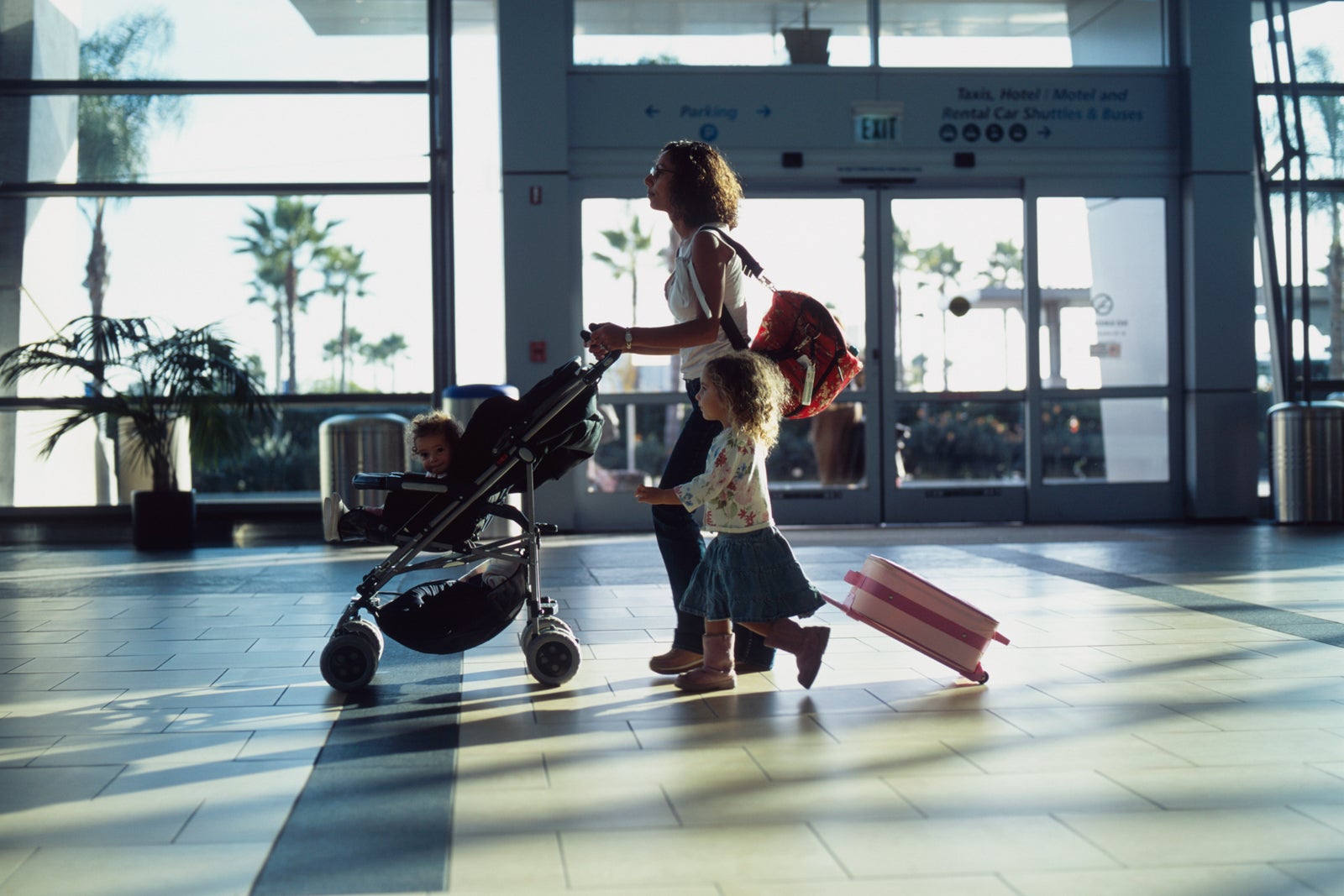
Having a dedicated (foldable) travel stroller will be useful beyond air travel. It's the perfect item to have when exploring a new city. Other key travel baby items to consider taking along are:
- Travel diaper backpack.
- Portable changing pad.
- Travel car seat.
- A bag for a car seat or stroller so these items aren't damaged if checked.
- Portable baby monitor.
- Baby carrier or wrap.
- Swaddle or baby blankets.
- Inflatable bathtub .
- Pack 'n Play or travel crib.
- Travel neck pillow (use it while feeding your baby).
- Baby chair strap.
- Disposable bottle liners.
- Disposable bibs.
- Portable blackout shades for travel cribs or strollers.
Purchase (or preorder) diapers, formula and more at your destination
Depending on how long your trip is and where you're headed, calculate (and it's always best to over-calculate) how many diapers you'll need for the trip.
If your baby uses a specific formula or baby food, make sure you know where to buy it at your destination. Amazon and other delivery services can be useful for ordering these items -- and remember, these services are available internationally, too. You can also compare ingredients to see if you can get a similar formula or food at your destination, so you won't have to load up your suitcase with diapers or formula.
Don't worry if you forget baby socks or another basic item. Babies live all over the world, so you'll likely find many basic items available for purchase wherever you are. If your baby requires something specific, though, pack it just in case.
There are also companies that rent baby gear in many destinations around the world. Research ahead of time to find out exactly where and how to obtain these necessary items, especially when traveling abroad .
Carry on the essentials (and extras)
Always pack your baby's key essentials in your carry-on . This includes comfort items like their favorite toy or pacifier, and extra clothes for both your baby and you (in case their wardrobe disaster becomes yours, as well). You should also pack enough food, diapers and other key items to last you through the trip, plus more for any possible delays and/or cancelations.
Here's a list of items you may want to keep in your carry-on bag :
- Extra clothing for you and your baby.
- Layers of clothing or blankets (plane temperatures are often extreme).
- Pacifier and clip (and backup).
- Comfort toy(s) or blanket.
- Extra diapers.
- Breast pump.
- Snacks (for you and your baby).
- Baby wipes.
- Sanitizing wipes.
- Extra bibs.
- Ziploc bags for stowing soiled clothing (or a reusable, waterproof bag).
- Baby Tylenol or any infant medications.
- A basic first aid kit.
- Small toy(s).
The rest of your baby's items, like additional clothing, blankets and more, can go in your checked bag. If you're checking more than one bag, split your baby's items among different checked suitcases. That way you'll be covered if the airline loses one of your suitcases.
Know the security regulations and have a backup plan
On a recent call to Iberia Airlines , I was told I could bring "reasonable quantities" of formula and breast milk through security. However, the representative also told me that in some cases during security checks, certain agents might not allow me to pass these items through security at the Madrid-Barajas Airport (MAD) . What?
Not all security checks, Transportation Security Administration agents or customs agents are alike, and each country, airport or airline may have specific regulations. Call ahead of time and prepare for things to not go as planned. If you do use formula, take your bottles already mixed, but also bring extra powder in case you need to prepare new bottles on board.
If you're pumping, it might also be a good idea to bring both a hand pump and an electric pump in case you have limited access to electricity or encounter issues with electrical outlets or voltage when traveling internationally.
Arriving at the airport early is always a good idea, because you may not breeze through security as you might have in your pre-baby days. Everything takes longer with an infant, so having that extra time can ensure a low stress travel experience. Take advantage and board the airplane first to give you extra time to get settled. If your airport has a family security line, use it.
Make sure you understand any remaining COVID-19 regulations
As mask rules and COVID-19 testing, entry and vaccine regulations continue to evolve in countries around the world, stay on top of exactly what you need to know and bring for your baby to get to your destination (and back home again). It's important to understand whether you'll need masks for your 2-year-old or need to show proof of a negative COVID-19 tests upon arrival at your destination or re-entry into the U.S. when traveling abroad.
Remember that airline staff members also struggle to keep track of ever-changing rules, so if you know something has recently changed or a rule seems specific, make sure to bring along proof of this information and whatever documentation you need in case you have trouble when boarding.
Photocopy important documents and always have extras. I loathe having to take paper documents along when traveling. However, having them may mean the difference between getting through customs, being able to board or being stranded at the airport. This is especially true if your phone battery dies or you're left without service for any reason. While being denied boarding is always dramatic, it's even worse with a baby in tow.
Download the right apps
Mobile phone apps can help you anticipate what you need, as well as keep your baby (and yourself) comfortable during travel.
A white noise app is key for better sleep for your baby — and therefore better sleep for parents — and allows you to leave a white noise machine home. Nightlight apps are also helpful during travel.
You can also connect most modern baby monitors to your phone and use an app to access the video of your baby so you won't need a separate viewing device.
Parents may find an app to track sleeping and feeding especially helpful during travel, particularly when switching time zones. A general packing app could help you keep track of what you need to bring for your infant, as well as the entire family. Make sure these apps are accessible offline if you need them while flying.
Don't forget their passport
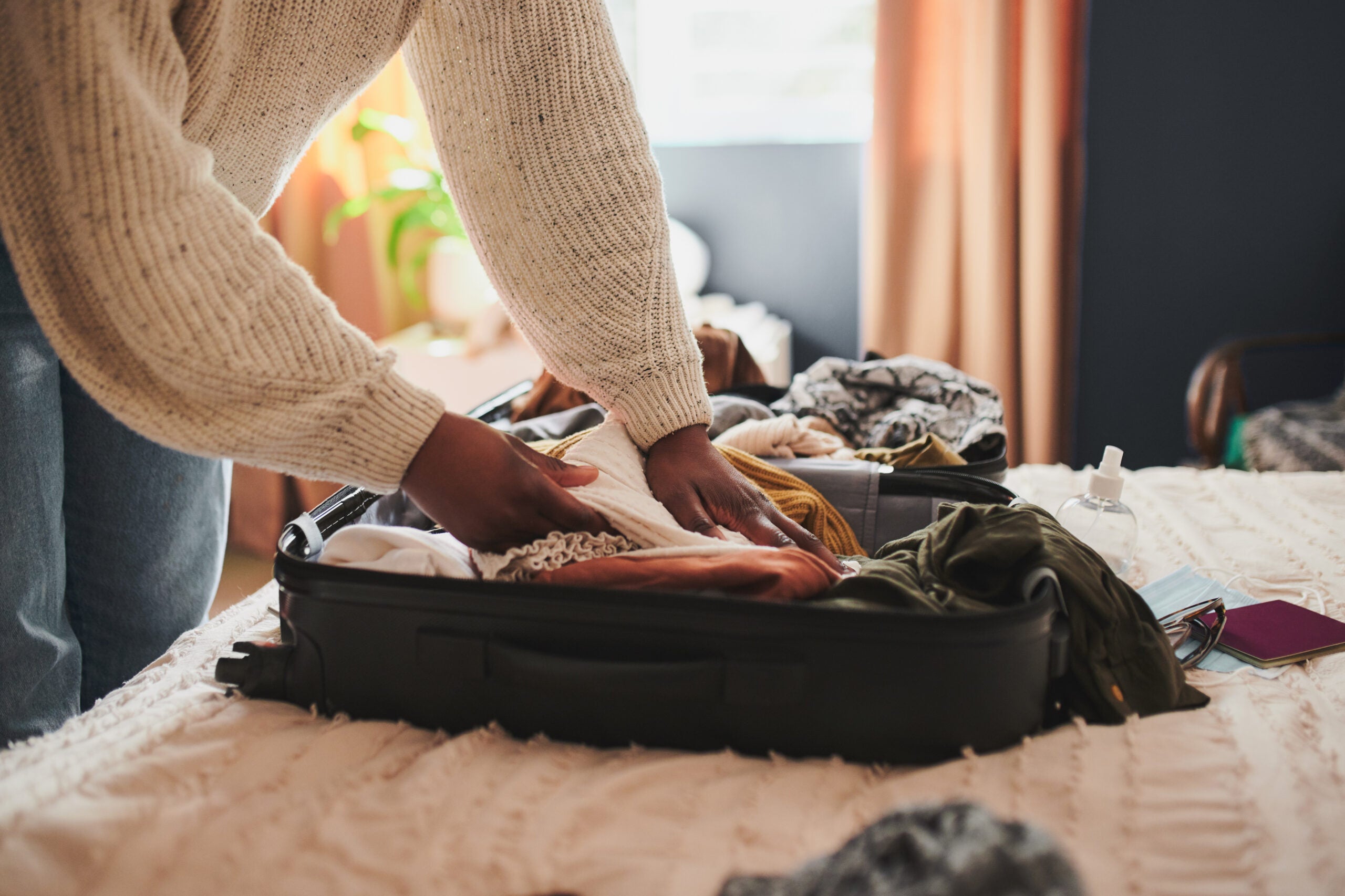
This one is obvious, but you'd be surprised. Don't forget your baby's passport when traveling.
Look into identity and consent documents, as each country has its own requirements, especially if your partner isn't with you. If you have any older children, make sure to check that their passports are valid, as children's U.S. passports expire in just five years.
Traveling with a baby might seem like a lot. However, once you get the hang of it, packing, prepping and traveling with your infant becomes second nature. Ask for help when you need it and accept help when offered.
And when things don't go quite right, stay relaxed (remember, baby can feel your moods) — you'll figure it out. While it may seem tragic in the moment (like that major diaper blowout on board a plane), it will be an epic story to share one day.
Bottom line
When in doubt, bring enough baby supplies for a few extra days or a flight delay, but don't overpack. Make sure to be clear on any and all regulations that will cover your travel, from having the right documents to understanding what baby items you can bring through airport security . With these tips, packing and traveling will be a more enjoyable experience for the entire family .
22 things you need to know before visiting India

Dec 15, 2023 • 14 min read
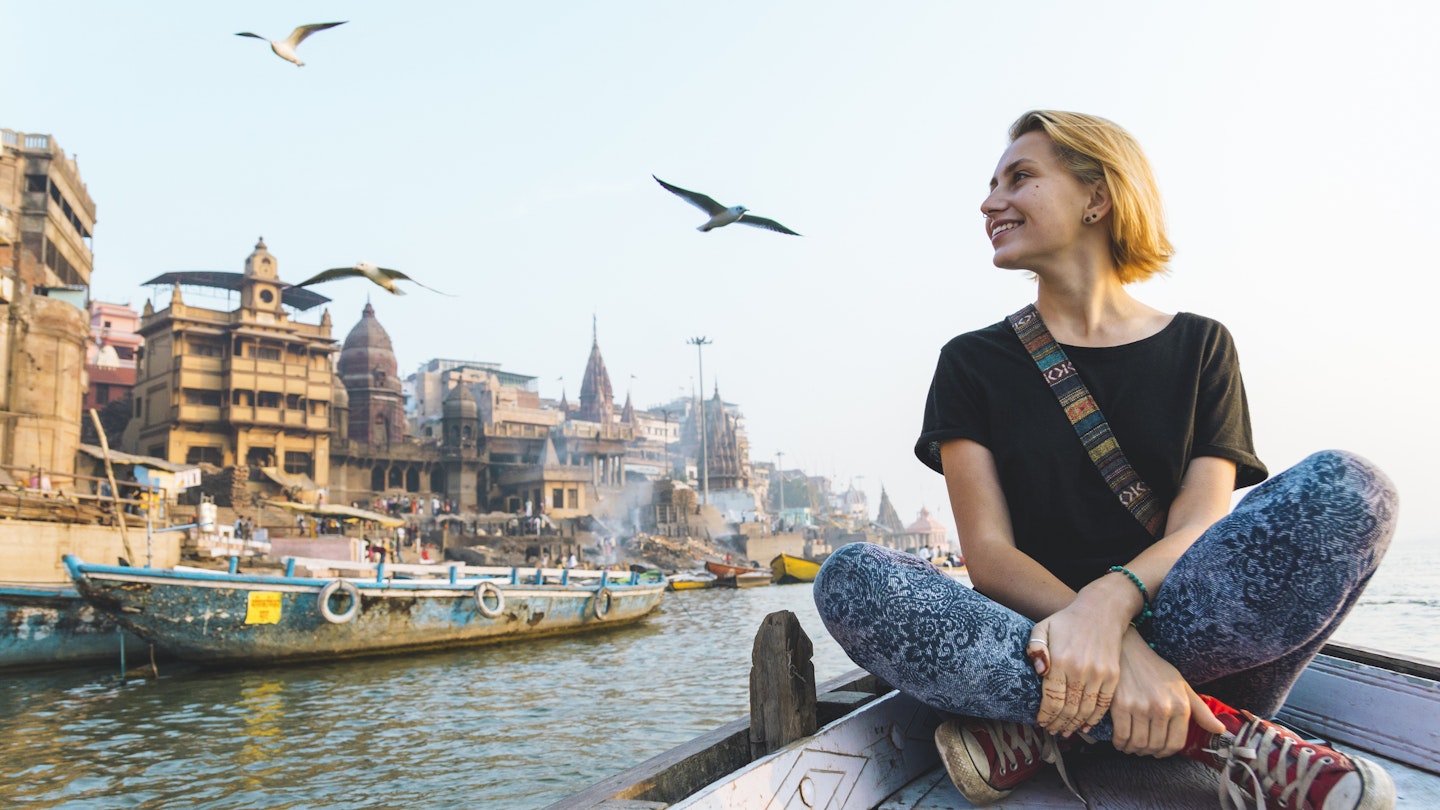
India is a feast for the senses and we've got everything you need to know before you visit © Andrii Lutsyk / Ascent Xmedia / Getty Images
India is a place that overwhelms your senses in the best possible way – nowhere else delivers quite the same barrage of sights, sounds and sensations as this continent-sized country at the heart of Asia.
It would take a lifetime to see all of India , let alone understand every nuance and facet of this nation of 1.4 billion inhabitants. But with a little preparation, you can learn to navigate the richness of this country, from its snow-capped peaks and velvety beaches to its historic temples and luxuriant palaces.
We've collated the top things you need to know about visiting India, but the journey begins before you leave home. Apply for your Indian visa online for a smooth arrival on the subcontinent. Read on for 22 more insider tips that will help make your vacation unforgettable.
1. Plan your trip around the seasons
India has a reputation for being hot and humid, but with beaches, mountains, hills, coastlines and plains all jammed into a relatively small geographical area, the climate is quite diverse. The southwest monsoon brings rainy weather to most of the country from June to September, but this is the best time of year to visit the high-altitude deserts of Ladakh , although depending on the route you take, you risk encountering landslides and floods.
In the far south, there’s also a milder rainy season from October to December. The ideal weather window for travel is from October to May, though temperatures and humidity climb to agonizing levels from March onwards in the run-up to the monsoon. If you find yourself in India in the spring, head to the Himalayan foothills for milder temperatures and good trekking conditions.
2. Get your jabs before you travel
There is no official requirement for vaccinations to enter India (although yellow fever vaccination is needed if you are traveling from a country where the disease is endemic).
That said, it is important that you contact a health professional at least eight weeks before you travel to ensure your jabs are up to date. Vaccinations for diphtheria and tetanus, hepatitis A and B, polio and typhoid are usually recommended, on top of childhood vaccinations for measles, mumps, rubella and varicella.
Vaccinations worth considering for longer trips include Japanese B encephalitis, meningitis and rabies. Monkeys, dogs and cats can all carry the rabies parasite, and infection is fatal if untreated.
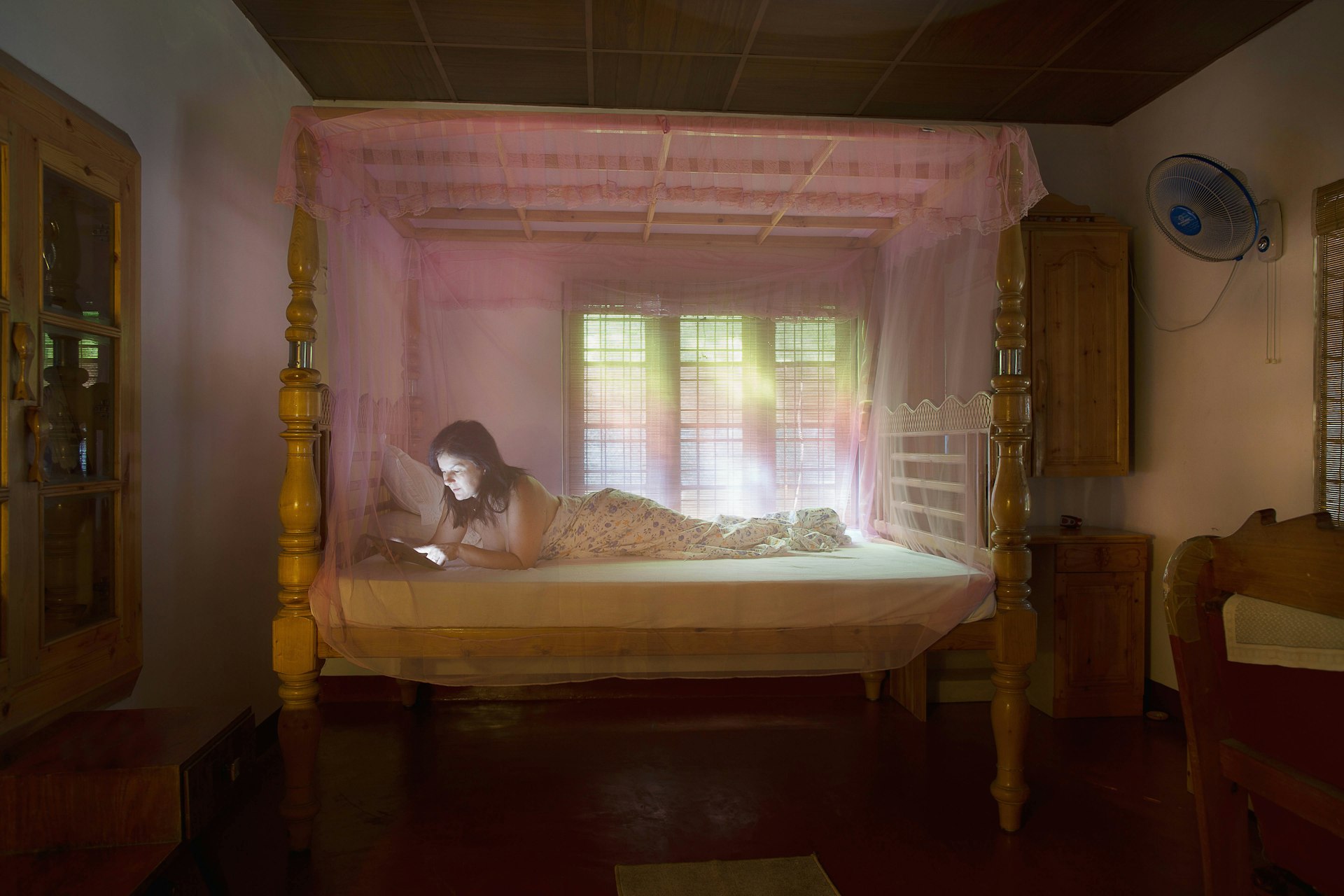
3. Take malaria precautions
Depending on where in India you are traveling to, you may want to speak to your healthcare provider about taking a course of anti-malarial tablets. For instance, northeastern and eastern parts of India, as well as the city of Mangalore, have a higher malaria risk.
Always take precautions to avoid mosquito bites – this will also help you avoid dengue fever, a viral infection that is transmitted by mosquitoes to humans. Sleeping under a mosquito net, wearing long sleeves and trousers in light colors, and using a repellent and/or a plug-in mosquito killer with a high concentration of DEET (diethyltoluamide) is advisable.
4. Get insured
Travel insurance is essential for India. Depending on where you travel to, you may find public hospitals are poorly equipped. Additionally, most private clinics and hospitals require payment ahead of treatment. Make sure you are covered for emergency evacuation and also for any adventure activities you plan to get involved in.
If you’re unlucky enough to be a victim of crime, contact the local police station or dial 100 or 112, the national emergency number. You’ll need to get the police to file a report (a “FIR" – First Information Report) to make a claim on your travel insurance.
5. Book ahead for busy times and festivals
India can get very busy from November to February, so affordable accommodation is usually swamped in peak season. It’s a good idea to book ahead, either directly with the venues or via booking aggregator sites such as Agoda and MakeMyTrip .
Also, book train tickets in advance where possible , particularly for popular routes. Tickets can be booked (with a fair amount of hassle) via the government booking site IRCTC or more easily through local booking sites such as 12Go or Cleartrip .
6. Plan your comms before you travel
Many things in India (including train bookings or ordering food online) get easier if you have a local SIM card. Bring an unlocked phone from home (or pick one up locally) and get a phone shop to sign you up for a local pay-as-you-go SIM package on arrival. You’ll need to bring passport photos and photocopies of your passport ID pages to complete the application.
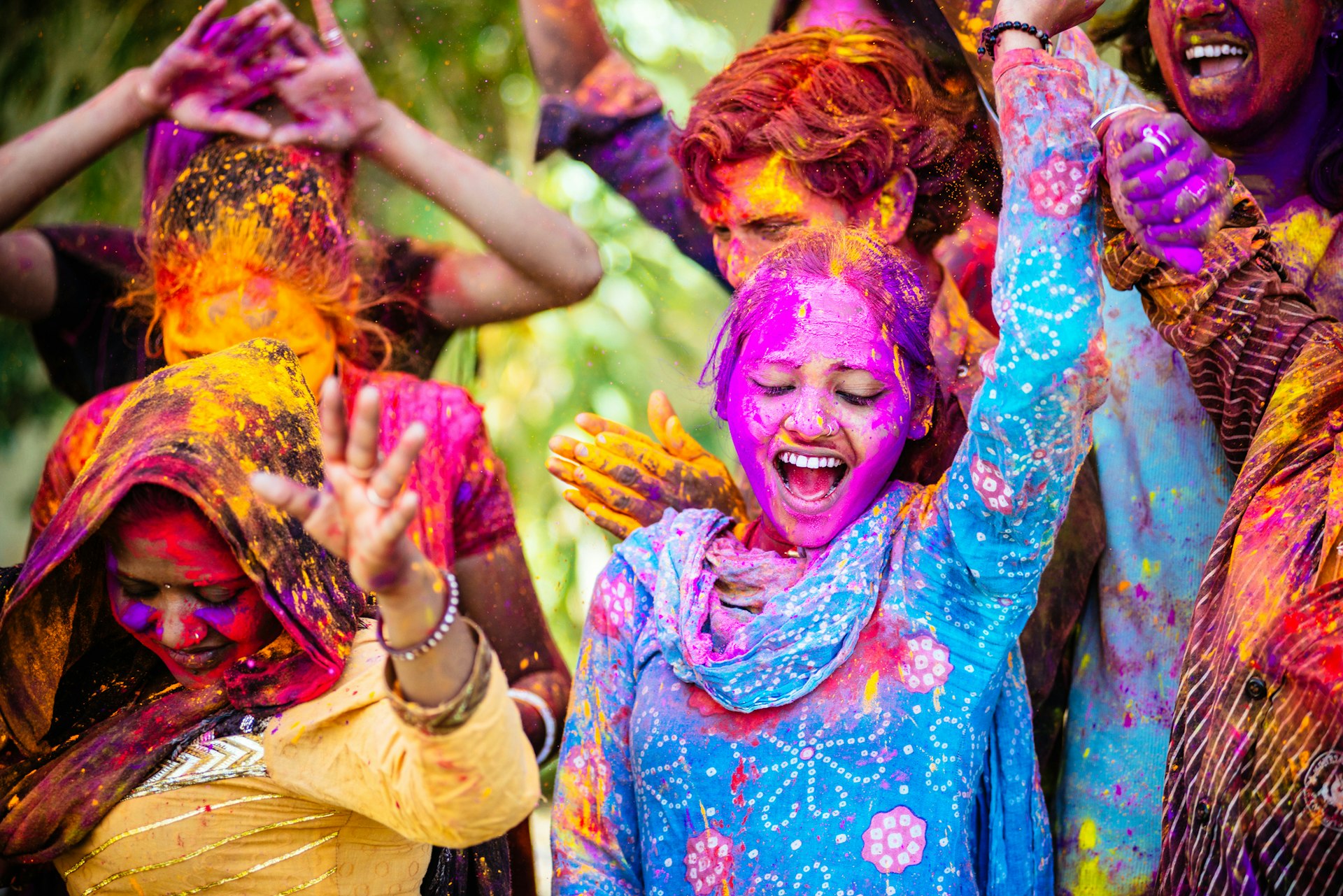
7. Check your lunar calendars
While India officially follows the Gregorian calendar, the major festivals for Hinduism, Buddhism, Jainism, Islam and several other religions follow lunar calendars and fall on different dates from year to year. Always check festival dates before you book your trip (bearing in mind these dates are subject to change); the Indian government maintains a useful online list of public holidays .
8. Learn local etiquette
English is the lingua franca in most metropolitan areas in India, and you’ll get away with polite hellos, goodbyes and thank yous in smaller towns too. However, if you’re traveling in northern India, you can say "namaste" (I bow to you) with your hands together in a prayer-like gesture in front of your chest. Similarly, when meeting Muslims in north India, you can say "salaam alaikum" (peace be with you) – the correct response is "alaikum salaam." Most of the time, it’s the effort that’s welcomed over pronunciation, so don’t be shy!
Shaking hands is a standard business greeting between men, but outside metropolitan regions, men and women rarely shake. Only ever use your right hand. The same rule applies when passing things to people – including money.
If you get invited to someone’s home, bring a small gift (flowers or sweets are always a safe bet) and remove your shoes before entering. It’s polite to eat and drink what you are offered, even if you don’t really fancy it.
9. Dress modestly
Depending on where in India you are, modesty is taken seriously – especially for women. Travelers of any gender will have an easier time if they wear loose-fitting clothing that covers their legs and arms. Swimwear is only appropriate for the beach – although it is not uncommon to see locals swim fully clothed. To fit in, consider investing in a kurta pyjama (a traditional garment resembling a long shirt and loose trousers for men) or a salwar kameez (a long shirt, loose trousers and scarf for women).
10. What to eat and how to eat it
Many religions in India have their own dietary rules. Muslims avoid pork, many Hindus avoid beef, and some Hindus and Buddhists are vegetarian or vegan. Many Jains are vegetarians who avoid some vegetables (most notably onions, garlic and potatoes) and who try to avoid causing harm to all living creatures. These rules mean vegan and vegetarian food is often easy to find in India.
Eating with your hands is the norm in many restaurants, particularly in parts of southern India. Take your cue from other patrons in the restaurant, and remember to eat with your right hand. Mix rice and curry into balls with your fingers and push it into your mouth with your thumb. Some thalis (plate meals consisting of multiple dishes served in tandem) are served not on a plate but on a washed and flash-heated banana leaf.
11. Haggling is not a game of life and death
Haggling for a fair price when buying things – in street stalls and open-air markets – is a way of life in India. Although it can sometimes be a frustrating experience, losing your temper is extremely bad form – if you can’t agree on a price with the vendor that you are both happy with, politely decline and shop somewhere else.
The rules of the game are as follows. The vendor will quote you a price that is more than the item is worth, then you’ll come back with a counter-offer, working up from there until you reach a mutually agreeable figure.
The “walking away” trick may bring a few last-minute adjustments, but before long, you’ll reach a threshold that the vendor won’t go below. Throwing in extra items may bring a discount on the overall cost. Many travelers prefer not to haggle in places where the money goes directly to artisans.
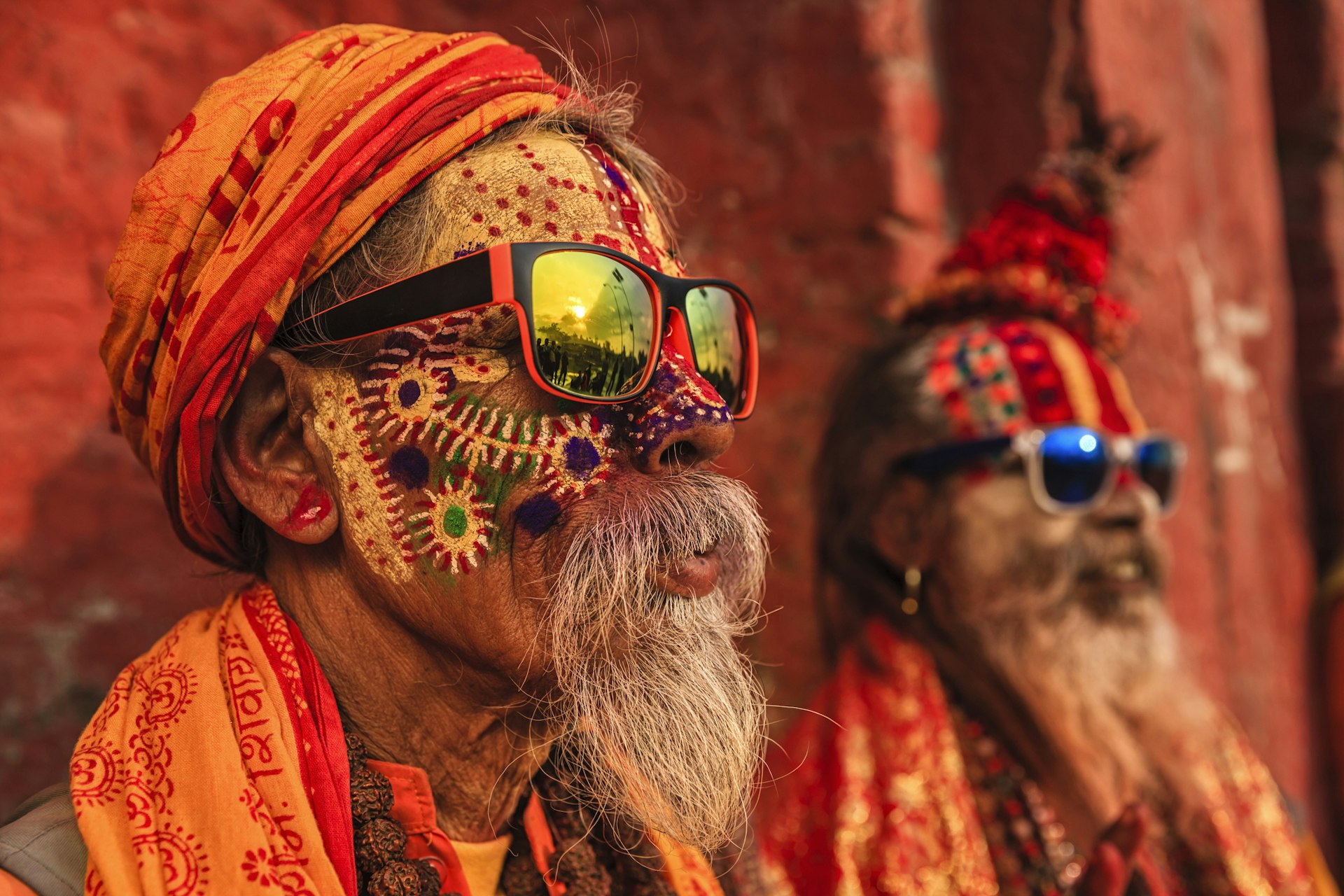
12. Respect etiquette at religious sites
Religion is taken very seriously in India, so it pays to know the rules and expectations for visits to temples, mosques, monasteries, gurdwaras (Sikh shrines), synagogues and churches. Always check if you are allowed to enter – some temples and mosques are closed to people who don’t follow the faith. Mosques may also be closed to visitors during prayers or on Fridays.
If asked to do so, remove your shoes before entering any religious building, and be prepared to cover your head with a scarf or shawl. Generally, always cover your legs and arms (a sarong can be handy as an emergency cover-all). Some temples also ban leather goods, and many religious sites do not allow photography.
Avoid pointing the soles of your feet towards a person or deity – this is considered disrespectful. The same goes for touching any person or effigy on the head. It is conventional to walk around Buddhist and Hindu shrines in a clockwise direction, in a ceremonial circuit known as a parikrama .
Making an offering or leaving a donation is often expected – locals always offer something, but be wary of people waving receipts showing huge donations. Giving something is appropriate, but don’t feel pressured into leaving large sums.
13. Giving alms is common but up to you
The giving of alms has a long history in India, and foreigners can expect to be approached regularly with requests for money. Whether you give or not is a personal choice, but many Indians give on a daily basis, particularly when visiting temples and mosques. Be aware that some requests for money will be scams, and you may be able to do more good by giving your time or cash to charity or aid organizations you’ve taken time to research, rather than handing out cash.
14. Respect local social attitudes
India has complex social rules about respect for elders. Depending on where you are traveling to, older people are often greeted with the honorific “auntie” or “uncle,” and the ending ji may also be added to someone’s name as a sign of respect.
Outside bigger cities, India can be quite conservative when it comes to interactions between unmarried men and women. Also, most parts of India are conservative when it comes to same-sex relationships. Whatever your sexuality, it’s best to avoid public displays of affection.
15. Street harassment is unfortunately common
Although harassment can happen anywhere, parts of India are constantly in the news owing to a lack of women’s safety. Beyond long, unwelcome stares and persistent attempts to start a conversation, more serious assaults are also a risk. Groping is common in crowds (particularly during festivals).
Exercise caution like you would anywhere else, and remain alert. Never get into a taxi or auto rickshaw containing anyone other than the driver, and avoid walking alone in quiet areas, particularly at night. Decline offers of food or drinks from strangers.
If traveling by public transport as a woman, it's best to seek out train carriages and designated seating reserved for women. Wearing a wedding ring (even if not married) and using dark sunglasses and headphones can buy you some privacy on public transport. If you are being hassled, drawing loud attention to the intrusion may encourage others to come to your aid.
16. Keep track of security situations in India
India has seen deadly attacks by separatist and Marxist groups and Kashmiri insurgents. Monitor the local news and be alert for suspicious behavior, particularly around major tourist sites. Always check the security situation before traveling to Srinagar and the Kashmir Valley in case of flare-ups of unrest. Strikes, demonstrations and protests are also best avoided, as violence is a risk. It goes without saying but in the event of trouble, obey local curfews and stay inside – your hotel is probably the safest place to be.
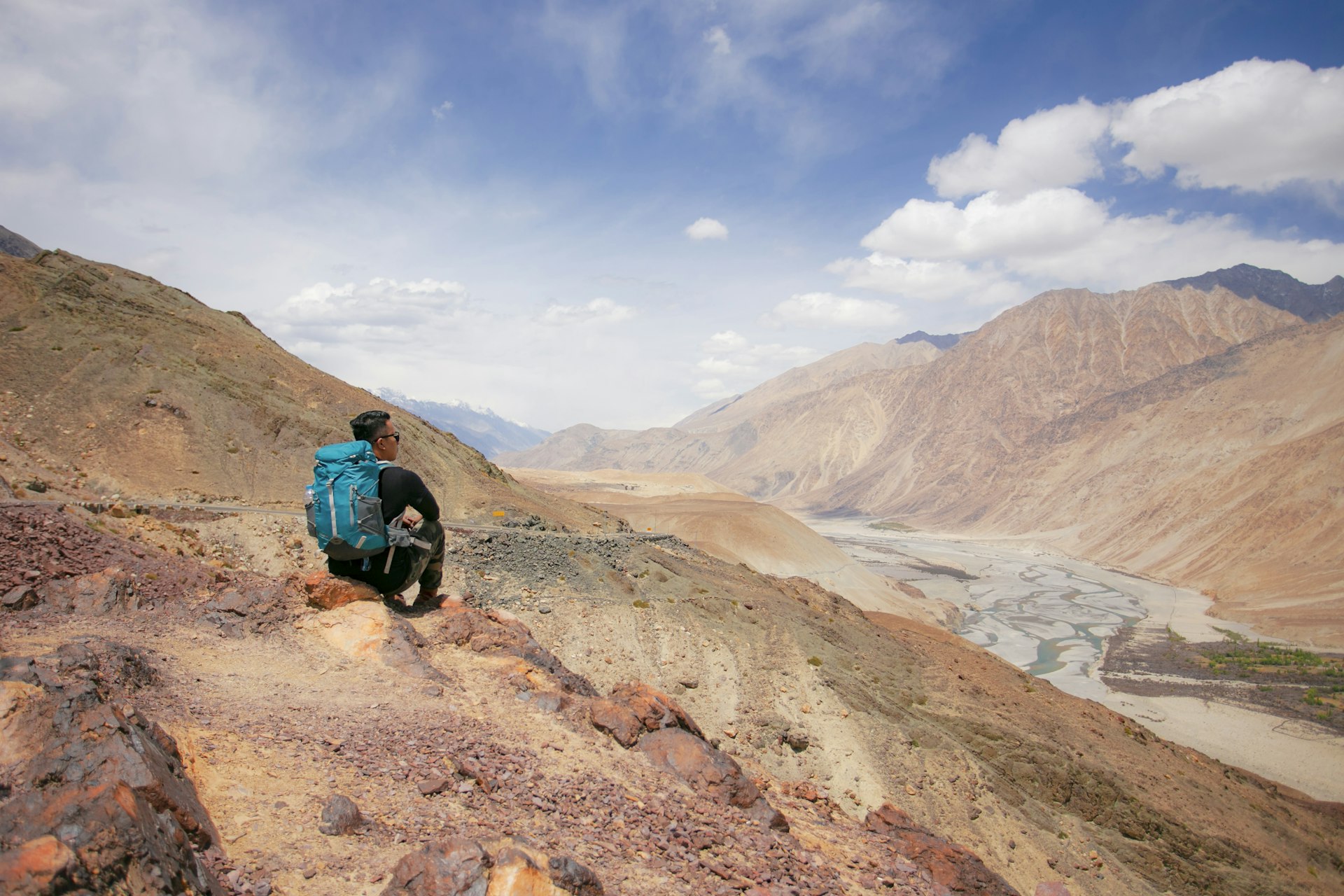
17. Take the altitude seriously when hiking
Acute Mountain Sickness (AMS) is a risk when traveling above 2500m (8202ft), which covers most of the Indian Himalayas . AMS can be fatal, so always ascend slowly and take rest days to allow your body to acclimate to significant elevation changes. If you begin to feel ill while hiking in the mountains, stop, and if your symptoms don’t improve, descend immediately.
18. Familiarize yourself with local rules and regulations
India has a few laws and regulations that visitors might be unfamiliar with. For instance, taking photographs of bridges, the periphery of military camps and border crossings – or flying drones over them – is considered a serious security issue.
When traveling by plane internally in India, you may be asked to surrender batteries from devices in your cabin bags. Smoking is banned in most public places, and a few states also have bans on the consumption of beef – killing or injuring a cow in a road accident, even accidentally, can lead to violent reprisals.
To avoid sticky situations, take the time to research where you’re going, and talk to staff at your hotel or hostel or your B&B host for advice on things to be aware of.
19. Steer clear of drugs
India may have a reputation amongst travelers as a place to push boundaries, but its drug laws are strict. Possessing even small amounts of drugs for personal use can lead to a prison sentence.
Some religious groups are permitted to consume marijuana for ceremonial purposes, but that often doesn’t extend to tourists. You can, however, find bhaang – a marijuana mixture made with the leaves (rather than the bud) of the cannabis plant – at government-approved bhaang shops.
20. Avoid the tap water
The tap water in India is not potable. Drinking or brushing your teeth with it can be a fast track to stomach troubles – the most common illness tourists experience in India. Stick to purified or bottled water (or even better, purify your own to avoid contributing to India’s plastic waste mountain).
The water rule extends to ice (be wary of ice in drinks and ice cream) and to uncooked foods, particularly salads and dishes such as coriander chutneys, which may have been washed with contaminated water. When eating fruit, stick to things you can peel or wash thoroughly yourself, and be cautious of freshly prepared juices. Hot drinks are generally fine, so drink your fill of chai (milky tea, often spiced and sweet).

21. Watch local news to keep track of natural disasters
Some geographical areas in India are prone to natural disasters, and the risk is higher in certain seasons. Hilly areas of Himachal Pradesh, for instance, often see flash flooding and landslides during the monsoon. Be alert to signs of natural disasters and keep an eye on the local news so you know which areas to avoid. Follow the Indian Meteorological Department’s website as well as their social media handle for timely updates.
If you are caught up in a natural disaster, follow the advice of emergency workers and try to leave the area quickly.
22. Spot the scams
India has a reputation for scams designed to separate tourists from their money, and touts and confidence tricksters can often be found where tourists gather. Get tourist information and make bookings at official offices, rather than “tourist offices” you have been led to by people offering unsolicited help.
If anyone steers you to a hotel, shop or other establishment without you asking, they may be angling for a commission, which will be added to the price you pay. Be dubious of claims that the place you want to go is “closed” – always check yourself to be sure.
Exercise common sense and be wary of deals that sound too good to be true – for example, the gem scam, where travelers are tricked into buying worthless gems to “sell at a profit back home.”
This article was first published March 2022 and updated December 2023
Explore related stories
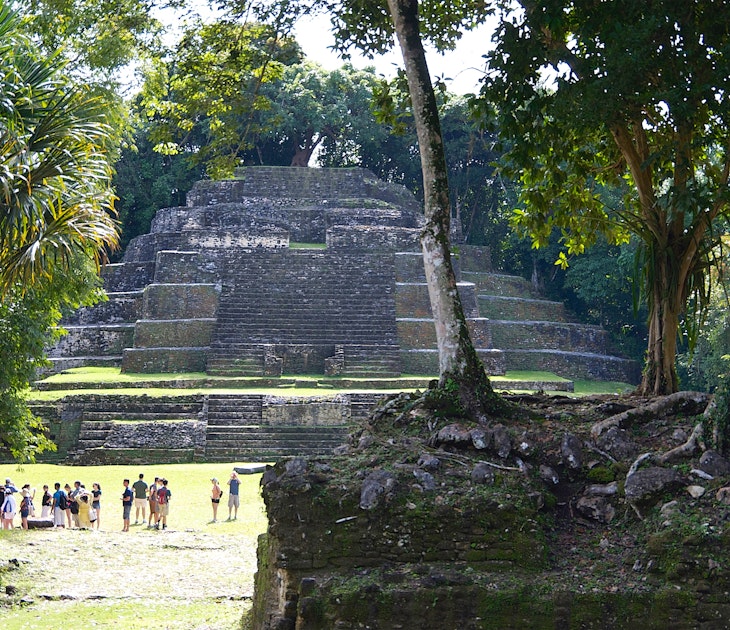
Destination Practicalities
Jan 11, 2024 • 4 min read
Here's what you need to know about visa requirements ahead of travel to Belize.

Jan 5, 2024 • 20 min read

Jan 2, 2024 • 8 min read

Dec 27, 2023 • 8 min read

Dec 20, 2023 • 11 min read

Dec 13, 2023 • 7 min read
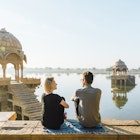
Dec 11, 2023 • 14 min read
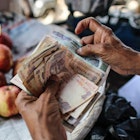
Dec 1, 2023 • 4 min read

Nov 21, 2023 • 6 min read

Nov 7, 2023 • 8 min read
- Search Please fill out this field.
- Manage Your Subscription
- Give a Gift Subscription
- Sweepstakes
- Travel Products
- Travel Accessories
I Traveled Through Southern India for 2 Weeks Without Checking a Bag — These 14 Products Made It a Breeze
These travel essentials come recommended by someone who has been traveling to Asia for 15 years.
:max_bytes(150000):strip_icc():format(webp)/Screenshot2024-03-27at8.41.45AM-d2c20db7b82947f79a863625c7c42018.png)
We independently evaluate all recommended products and services. If you click on links we provide, we may receive compensation. Learn more .
Travel + Leisure / Madison Woiten
For the last 15 years (with a brief exception for the COVID-19 pandemic), my family and I have celebrated Christmas and New Year’s abroad in Africa or Asia. From Madagascar, Indonesia, and Tanzania to Vietnam, Thailand, and Singapore, I’ve gotten used to spending two weeks during the holidays in warm, muggy climates, swapping coats and boots for sandals and flowy dresses .
This year, my family and I spent two weeks bouncing around India’s southwestern state of Kerala, nicknamed “God’s own country” for the richness of its natural beauty . From misty mountain towns and river-framed cities to urban metropolises and the roaring sandy coast of the Arabian Sea, the a trip filled with constant movement and changing climates, requiring gear, accessories, and clothing that could accommodate everything (think: versatile travel bags , one-and-done outfits , and more).
And, as someone who is prone to overpacking, I wanted to challenge myself to only bring a carry-on suitcase and a personal item in an effort to travel light — a skill that I have yet to master since becoming a travel writer. These are the 14 travel essentials that topped my packing list, and ensured that my whirlwind ,two-week trip was smooth and effortless – even with just a carry-on.
R. Vivimos Women’s Long-sleeve Midi Dress
I had three requirements when packing my wardrobe for my trip: stylish, breathable, and modest. These Amazon long-sleeved bohemian-style dresses (thankfully) satisfied them all. As someone just under 5 feet, 1 inches, I was initially worried that the length and oversized style would dwarf my small frame, but I was pleasantly surprised when they only came up to mid-shin. I purchased three styles and colors, and wore them while exploring the city of Kochi and the mountain town of Munnar.
Despite being long-sleeved, they were breathable and comfortable, and they helped me survive the oppressive Indian heat with optimal sun coverage. The dress comes in 35 different color and print variations that can be worn during the summer, fall, or spring, so it’s a versatile wardrobe staple for any traveler.
Topbag Family Passport Holder
I’m a triple citizen of Italy, Ireland, and the United States, and, as an anxious flier, I always travel with all three of my passports, just in case. That’s why I use this family passport holder to safely secure my three passports and other important documents in one easy-to-reach place.
It can hold up to six passports, which is convenient for families or friends traveling together. The passport holder also comes with a cash pocket and six card slots, which I use to stash away my other forms of identification, bills, loose change, past flight tickets, and my Italian SIM card for when I return home to Rome. But that’s not all: it also has a strap that you can wear around your wrist and a back pocket large enough to fit an iPhone, so you can have all of your major belongings on you in one place (and it doubles as a secure sling bag if you're not a fan of big purses). It helps make the chaos of traveling just a little more organized.
Prite Corduroy Tote Bag
I collect tote bags, especially for when I travel, so when I received this large, olive-green corduroy one for Christmas, it was a match made in tote heaven. It has a zippered closure that I appreciated for keeping my valuable items from tumbling out. And, for those who love pockets – well, you’re in luck: The tote has a large outside pocket that can close magnetically, two interior slip pockets, and one ample interior zippered pocket which I used to secure my wallet, passports, and keys.
I carried this tote around with me everywhere during my trip, and was able to fit my passports, sunglasses, Kindle Fire, lip balms, earphones, chargers, mints, a 32-ounce HydroJug tumbler, and deodorant, all with plenty of room to spare. The large 18-inch by 15-inch by 4-inch tote is made with durable corduroy and is sturdy enough to carry heavier items like books and laptops, which is what I’ve been using it for since my trip.
VibiVenezia Women's Timeless Rosso Velvet Slippers
Vibivenezia
Friulane, or furlane, are popular Venetian velvet slippers that date as far back as the 19th century. They’re a staple in every Italian woman’s closet and add a pop of color and playful elegance to any outfit, which is why I wear mine all the time when I travel. They’re also very comfortable, especially since I had my favorite cobbler in Rome add another layer of rubber to the soles for extra cushioning.
I love the burst of color that they give my outfits, and my orange pair paired especially well with one of the long-sleeved dresses that I purchased for my trip in shades of yellow and orange. I buy most of my friulane from small boutiques when I’m home in Italy, but VibiVenezia is a popular Italian brand that offers the slippers in a literal rainbow of colors and styles. No need to worry – they ship to the United States, so you can wear a small piece of Italy on your feet, too.
HydroJug 32-ounce Tumbler
I’m especially horrible at remembering to drink water during long flights, which is likely why I always feel like a wretched, dried husk after traveling. I’ve gotten better at hydrating myself since purchasing a mini, 32-ounce HydroJug tumbler. I usually fill it using water fountains at the airport to ensure that I have enough to keep my body happy while up in the air. This was especially important during my many long flights to India, and even more so upon arriving, as my family and I had to be careful of the drinking water we consumed.
The hotels we stayed at provided bottles of purified drinking water, which I used to fill up my HydroJug while we were out exploring. This not only ensured that I was staying hydrated in the unforgiving heat, but also that I was consuming safe drinking water. HydroJugs come with the option to purchase a sleeve and strap that can be worn around your person for a hands-free experience, which is especially useful for trips where you’re moving around a lot.
Asia Palomba
Longbida Women's Cropped Denim Jacket
While the majority of my trip called for a summer wardrobe, there was one occasion that required slightly warmer attire. My family and I spent two days in Munnar, a mountain town nestled between sprawling emerald-green tea plantations and lush forests. The higher altitude was pleasantly chilly, especially at night and in the early morning. Although it was a welcome respite from the heat, I needed to stay warm, and my cropped, faded denim jacket did just the trick.
Although mine can technically be classified as “vintage,” as it was passed down to me from my mother, I found this affordable version at Amazon that comes in 16 different colors and patterns and is easy to pack (or wear on a plane if you're trying to save luggage space).
Havaianas Mini Bag
I spent a week soaking up some much-needed vitamin D rays in the coastal town of Kovalam, and this water-resistant Havaianas mini bag was wrapped around my wrist every day. Made with durable silicone, this small, colorful bag is a staple of mine for any beach outing. I mostly use it to safely store my iPhone from sand and water, but it’s also doubled as a no-frills purse for my wallets, keys, and lip balms. It was gifted to me by my Brazilian friend nearly a decade ago, and it’s accompanied me all over the world, from Greece and Sardinia to Thailand and Indonesia – and it still looks brand new.
Sun Bum Lip Balm SPF 30 3-pack
As someone who is unfortunately prone to lip blisters after prolonged exposure to the sun, I always have SPF lip balms on deck. Sun Bum’s lip balms have recently become a favorite of mine, not just for their high protection, but also for their tropical flavors that release a burst of summer whenever I twist off their caps. Each gluten-free and vegan lip balm is packed with aloe vera, cocoa butter, and vitamin E, so they roll on super smooth and keep my lips soft and hydrated throughout the day.
I bought this three-pack ahead of my trip, and almost used them all down to the nub. Part of my excessive use may have been because of how nice they smelled (and tasted), but regardless, I was relieved that my laying in the sun like a lizard didn’t result in any sun blisters.
Anrabess Women’s Loose Spaghetti Strap Jumpsuit
Jumpsuits are one of my favorite go-to summer outfits for a breathable, comfortable, and stylish look. I have a bordeaux-colored one that I purchased years ago from Urban Outfitters that I wear to near tatters every summer for these reasons. I, of course, brought this jumpsuit on my trip with me and paired it with black lace-up sandals for more formal events such as New Year’s Eve. For most of my trip, however, flip-flops were my standard footwear.
While the exact jumpsuit I own can’t be found online anymore, there is this affordable Amazon option that has more than 2,000 five-star ratings. Available in 25 colors and patterns with sizes ranging from S to 2XL, it's an especially versatile and traveler-loved staple that I’m looking into trying myself once summer comes around.
Miady Dual USB Portable Chargers 2-pack
These pocket-sized dual USB chargers have been a boon during my travels, and my trip through India was no exception. There were a couple of days when my family and I spent hours traveling between cities, so these portable chargers helped juice up our phones throughout the day. I’ve also used them to power up other devices such as my Kindle Fire and iPad, so it's an especially helpful travel essential to always have on you.
Available in a variety of colors, each charger has two USB ports that can charge two devices at the same time, so they’re useful for traveling with friends and family. But don’t just take it from me — these durable, slim portable chargers have over 75,000 five-star ratings at Amazon.
Tessan Universal Travel Adapter
Any frequent flier knows the value of a good travel adapter, and this Amazon one is one of my favorites. The plug works in over 150 countries, from Italy and Dubai to China and New Zealand — so you know that you’ll always be covered no matter how far you travel. It also comes with four USB ports that can charge up to five devices at a time. Because of its versatility, I was able to easily share it with members of my family, which significantly cut down the amount of arguments over outlets that we had during our trip. Compact and lightweight, it can easily fit into any carry-on or personal item, which is why it’s always one of the travel essentials I pack first.
Twelve South AirFly Bluetooth Wireless Audio Transmitter
I can never sleep on airplanes, so watching movies is one of the best ways for me to pass the long hours. The earphones they hand out on the airplanes have always bothered my ears, not to mention the subpar audio quality they provide that makes watching anything a frustrating experience. That’s why I was intrigued when I came across this traveler-loved, pocket-sized bluetooth audio transmitter . The Airfly device seamlessly connects your wireless earphones to the airplane’s seatback television (and can also be used to connect to tablets, hotel gym TVs, etc.), which has vastly improved my international flight experience.
The many flights and hours it took to reach India literally flew by (pun intended) because of this small but mighty device. I currently have the device that can only connect one pair of headphones, but I’m looking into purchasing the dual AirFly version for when I travel with my partner.
Béis The Mini Weekender Bag
This Mini Weekender has quickly become my favorite carry-on for international trips since I received it for Christmas. Durable, compact, and sleek, it’s perfect for maximizing your limited packing space when only traveling with carry-on items — there’s a reason why it’s universally loved by flight attendants .
It especially came in handy when returning from India, as it was able to hold the majority of the souvenirs that I had purchased during my two weeks there. Its structured bottom shoe compartment, which is trimmed with stylish vegan leather, was useful for holding all of my sandals, slippers, and flip-flops, which freed up much-needed space in my carry-on suitcase. I have trips to Ireland, Italy, Portugal, and Morocco planned within the next few months, and I’m looking into using compression packing cubes to maximize the Mini Weekender’s potential.
Ray-Ban Classic Aviator Sunglasses
The Ray-Ban classic aviators have been my go-to pair of sunglasses since I was 13, so it should come as no surprise that they came to India with me. They’re lightweight, easy to pack, and stylish — and, not to mention, great at shielding my eyes from the harsh sunlight. I have the gold-tinted shades that I chose to match my coloring and the gold jewelry that I always wear (us Italians really do love our gold).
Based on my experience, Ray-Ban sunglasses are worth the investment. I’ve had my pair for the last 13 years, and aside from a few small nicks, they still look brand new. But for those who don’t want to splurge, there’s this affordable Amazon-loved pair from the brand Pro Acme that’ll give you that same "Top Gun" feel.
Love a great deal? Sign up for our T+L Recommends newsletter and we’ll send you our favorite travel products each week.
See More T+L Shopping Deals
:max_bytes(150000):strip_icc():format(webp)/merrell-mens-moab-2-vent-hiking-shoe-tout-AMZN-SHOE0422-1eb58958f0e04aa99d1ca44818fdcd06.jpg)
By barge, rail or truck? Feds propose travel routes for Indian Point's nuclear fuel

At Indian Point nuclear power plant , 125 hardened casks of spent radioactive fuel sit idle, waiting until the federal government can figure out how to safely transport and dispose of them.
So far, no one's been able come up with a plan everyone can agree on, but hundreds of pages of documents offer clues on the range of options.
The radioactive waste stored at Indian Point could be trucked to Connecticut along U.S. 9, to Metro-North railyards in the lower Hudson Valley or by barge along the Hudson River, according to an Energy Department study of shuttered nuclear power plants.
The 558-page study released in February is based on site visits over the past 12 years at 18 power plants in 13 states, as well as one still in operation and a nuclear waste site, both in Illinois.
It offers up dozens of potential truck, rail and barge routes that could be used to alleviate the nuclear power industry’s biggest headache as it tries to capitalize on the nation’s push for carbon-free energy sources: What to do with spent fuel stranded at 75 sites across the U.S.A.
Nearly 90,000 metric tons of radioactive waste is being stored at the nation’s nuclear power plants at a cost to the federal government of more than $9 billion and counting. The total is expected to grow by 2,000 metric tons a year.
And there’s still no place to put it. A decades-old effort to build an underground repository in the Mojave Desert northwest of Las Vegas floundered in 2010 amid political opposition. Efforts to build interim sites in western states are mired in legal challenges spearheaded by the oil and gas industry.
Anti-nuclear groups say the answer is keeping it where it is — at shuttered and operating nuclear power plants in 33 states.
They say it’s too dangerous to move radioactive material across public highways, railroads and waterways.
“That DOE is relying even more so than ever, it seems, on barge shipping, is very concerning,” said Kevin Kamps, a radioactive waste specialist for the anti-nuclear group Beyond Nuclear. “I mean, look at what just happened in Baltimore. What if a high-level radioactive waste barge were involved in a major disaster like that?”
Beyond Nuclear is fighting efforts to build interim repositories for the waste in Texas and New Mexico, where it has found allies in oil and gas companies eager to keep drilling in the Permian Basin.
Radioactive fuel on trucks to Connecticut, lower Hudson Valley?
Several of the shuttered plants studied don’t have direct rail access, which means multiple modes of transportation would be needed, in some cases all three.
At Indian Point, the 125 casks of spent fuel housed at the site could be put on trucks and delivered to nearby rail links.
The report lists eight routes for heavy trucks, most of which would use U.S. 9 North. Four options include travel to rail links in the Connecticut towns of Newtown or Danbury.
Fuel: Nuclear waste stranded at Indian Point as feds search for permanent solution
The Hawleyville Road rail yard in Newtown, some 60 miles from Buchanan, has been used to receive truck shipments of low-level waste from Indian Point that have been sent by rail to a waste site in Andrews, Texas.
Other possible options include the Hopewell Railyard in Hopewell Junction, some 30 miles from Indian Point. It’s run by Metro-North Railroad but not connected to its commuter rail network.
Also included as possible rail links are Metro-North’s Croton-Harmon Railyard in Westchester County and Lower South Street in Peekskill.
All the routes would need to be approved by the U.S. Department of Transportation, which oversees the movement of spent fuel across the nation’s highways.
Decommissioning funds for sports teams? Indian Point owner Holtec used $63K in ratepayer funds for sports teams, fashion show
What about barges to move Indian Point's spent fuel?
Indian Point, some 35 north of New York City, sits on 240 acres along the Hudson in the village of Buchanan. It was once the site of an amusement park where day travelers would come by boat from New York City.
To use barges, the Indian Point site would need to fortify a dock at a cost between $2 million and $6 million, the study notes. The area was used to deliver a massive transformer to the site in 2016.
The Energy Department report included barges is an option at 17 of the 20 sites it visited. Many of the nation’s nuclear plants were built beside lakes, rivers and oceans, which are used to discharge hot water from reactors or in emergencies to cool down reactors.
This is not the first time barges have been broached as an option for Indian Point’s fuel.
In 2020, the plant’s owners, New Jersey-based Holtec, said it was considering using a portion of $2.3 billion in decommissioning trust funds to move spent fuel by barge. Indian Point is among 17 nuclear power plants across the country that don’t have rail access.
And a 2002 Energy Department study of possible routes to an underground site at Nevada’s Yucca Mountain Indian Point fuel could be moved by barge down the Hudson to railyards in New Jersey for the trip west.
The proposal ignited an outcry from lawmakers in both states.
Attempts to use the Hudson for radioactive transport would likely run into opposition.
Last year, responding to concerns raised by the environmental group Riverkeeper and others, Gov. Kathy Hochul signed into law a bill that would prohibit the discharge of millions of gallons of radiological into the Hudson.
Holtec said the decision will delay the completion of decommissioning until 2041, eight years longer than its earlier estimate.
Radioactive: Hochul inks Indian Point bill but radiological waste debate rages on
What options are best? What the nuclear industry says
Nuclear energy proponents, including the Nuclear Energy Institute, say some 1,300 shipments of spent have been moved across the country by barge, truck and rail in hardened containers without a release of radioactive material.
“Trucks are commonly used for smaller shipments,” said Rod McCullum, a specialist in nuclear waste transport at the NEI. “Rail for larger shipments. Fuel from the Navy’s nuclear-powered ships is routinely transferred from the ports in which the ships are refueled to inland storage facilities using both methods.”
Barges were used to move spent fuel from the Shoreham nuclear power plant on Long Island, the Limerick Plant in Pennsylvania and overseas in Sweden, France, Japan, and England.
For now, with no place for the spent fuel to go, the Energy Department study remains mostly academic.
And, if a repository is chosen, it could take years to come up with a transportation plan.
Teardown: Why Indian Point nuclear plant won't close until 2041
What about the cost?
Nevada lawmakers opposed to the Yucca Mountain site used the transportation issue argue it wasn’t just just a Nevada problem, but one shared by all communities where the waste would pass through.
And there are still cost issues that haven’t been resolved, according to Fred Dilger, the executive director of the Nevada Agency for Nuclear Projects, a state agency born out of opposition to Yucca Mountain.
“Although we are learning about the best way to move waste from the various sites, there is no clear idea about who will pay for needed infrastructure upgrades, how long it will take and when it will begin,” Dilger said. “Many nuclear power plant sites may need costly, time-consuming improvements to enable shipments to take place.”
A snarl in nuclear energy's potential comeback?
The debate comes at a time when the U.S. nuclear industry is on the cusp of what some have termed a nuclear renaissance.
Government officials in Michigan, California and elsewhere, faced with hard-to-achieve climate goals, are rethinking their views on nuclear power.
The Biden Administration says nuclear power should be a key piece of its strategy to rid the electric grid of carbon-spewing energy sources.
In Michigan, officials are considering restarting the shuttered Palisades Nuclear Power Plant. And in California, rolling blackouts caused state officials to pivot in 2022 and reconsider opening the state’s last nuclear plant, Diablo Canyon.
Dilger said he’s unpersuaded by those who say the future lies in advanced nuclear options like small modular reactors that don’t produce the same amounts of spent fuel as traditional reactors.
“The recent boosterism about advanced nuclear wishes away the problem of waste,” Dilger said. “We already have more spent nuclear fuel than can fit in Yucca Mountain. Ideally, we should already be looking for a second repository and haven’t got the first. Advanced nuclear will make even more.”
Towns caught in the middle
Caught in the middle are communities that are home to shuttered nuclear power plants.
They’re dealing with the loss of property tax revenue from revenue-producing power plants, as well as canisters of spent nuclear fuel that makes redevelopment problematic.
The town of Vernon, Vermont, chose to scrap its police force in 2015 after the Vermont Yankee plant shut down in 2014, putting a strain on its $2 million budget. Police services were taken over by county sheriffs.
Fiscal planning helped the town weather the worst of it and Vernon’s tax rate is around the average for the region, said Tim Arsenault, the town clerk.
“Unfortunately, the whole issue right now is not in my backyard,” said Arsenault. “Nobody seems to want to have a depository for spent fuel. So, while some people may not like it, it’s there until something changes.”
Funds: Indian Point owner Holtec used $63K in ratepayer funds for sports teams, fashion show
Vermont Yankee, unlike Indian Point, has direct access to rail, which would be used to transport its containers of spent fuel.
Power plants owners have been able to recoup billions of dollars from the federal government as compensation for the failure to find a repository. A 2021 Government Accountability Office report pegged the total at $9 billion but that’s expected to grow in the coming years.
State and federal officials have passed measures to help towns where plants shut down. But Buchanan Mayor Theresa Knickerbocker said it’s not enough.
“It is time for the federal government to resolve this,” she said. “There was an agreement that was made. The nuclear communities did not agree to become de-facto storage facilities.”
Knickerbocker questions why nuclear plant owners are able to recoup their costs while towns can’t.
“Holtec and others sue the DOE every few years to recoup their expenses,” she said. “Why isn't the host community compensated? Either find a home for the spent fuel or compensate the community until it is removed from the site.”
- Cast & crew
- User reviews
Back to Black

The life and music of Amy Winehouse, through the journey of adolescence to adulthood and the creation of one of the best-selling albums of our time. The life and music of Amy Winehouse, through the journey of adolescence to adulthood and the creation of one of the best-selling albums of our time. The life and music of Amy Winehouse, through the journey of adolescence to adulthood and the creation of one of the best-selling albums of our time.
- Sam Taylor-Johnson
- Matt Greenhalgh
- Marisa Abela
- Eddie Marsan
- Jack O'Connell
- 2 User reviews
- 18 Critic reviews
- 52 Metascore

- Amy Winehouse

- Mitch Winehouse

- Blake Fielder-Civil

- Cynthia Winehouse

- Janis Winehouse

- Raye Cosbert

- Nick Shymansky

- A & R Manager

- Aunt Melody

- Perfume Paul

- Island Records Senior Executive

- CID Officer

- Uncle Harold

- Chris Taylor
- All cast & crew
- Production, box office & more at IMDbPro
More like this

Did you know
- Trivia Marisa Abela did all the singing in this film herself. She trained extensively to mimic Amy Winehouse 's vocals.
Technical specs
- Runtime 2 hours 2 minutes
Related news
Contribute to this page.

- See more gaps
- Learn more about contributing
More to explore

Recently viewed
Situation in Haiti April 5, 2024
U.s. citizens in haiti, update january 10, 2024, information for u.s. citizens in the middle east.
- Travel Advisories |
- Contact Us |
- MyTravelGov |
Find U.S. Embassies & Consulates
Travel.state.gov, congressional liaison, special issuance agency, u.s. passports, international travel, intercountry adoption, international parental child abduction, records and authentications, popular links, travel advisories, mytravelgov, stay connected, legal resources, legal information, info for u.s. law enforcement, replace or certify documents, u.s. visa law & policy.
Judicial Assistance Country Information
Share this page:
The Visa Bulletin
Visa Statistics
Laws & Regulations
Accepting, Serving in, or Performing Duties of a Position with the Government of a Foreign State - Immigration and Nationality Act (INA) Sectioin 349(a)(4)
Loss of U.S. Nationality and Service in the Armed Forces of a Foreign State - Immigration and Nationality Act (INA) Section 349(a)(3)
Visa Bulletin For May 2024
Number 89 Volume X Washington, D.C
View as Printer Friendly PDF
A. STATUTORY NUMBERS FOR PREFERENCE IMMIGRANT VISAS
This bulletin summarizes the availability of immigrant numbers during May for: “Final Action Dates” and “Dates for Filing Applications,” indicating when immigrant visa applicants should be notified to assemble and submit required documentation to the National Visa Center.
Unless otherwise indicated on the U.S. Citizenship and Immigration Services (USCIS) website at www.uscis.gov/visabulletininfo , individuals seeking to file applications for adjustment of status with USCIS must use the “Final Action Dates” charts below for determining when they can file such applications. When USCIS determines that there are more immigrant visas available for the fiscal year than there are known applicants for such visas, USCIS will state on its website that applicants may instead use the “Dates for Filing Visa Applications” charts in this Bulletin.
1. Procedures for determining dates. Consular officers are required to report to the Department of State documentarily qualified applicants for numerically limited visas; USCIS reports applicants for adjustment of status. Allocations in the charts below were made, to the extent possible, in chronological order of reported priority dates, for demand received by April 1st . If not all demand could be satisfied, the category or foreign state in which demand was excessive was deemed oversubscribed. The final action date for an oversubscribed category is the priority date of the first applicant who could not be reached within the numerical limits. If it becomes necessary during the monthly allocation process to retrogress a final action date, supplemental requests for numbers will be honored only if the priority date falls within the new final action date announced in this bulletin. If at any time an annual limit were reached, it would be necessary to immediately make the preference category “unavailable”, and no further requests for numbers would be honored.
2. The fiscal year 2024 limit for family-sponsored preference immigrants determined in accordance with Section 201 of the Immigration and Nationality Act (INA) is 226,000. The worldwide level for annual employment-based preference immigrants is at least 140,000. Section 202 prescribes that the per-country limit for preference immigrants is set at 7% of the total annual family-sponsored and employment-based preference limits, i.e., 25,620. The dependent area limit is set at 2%, or 7,320.
3. INA Section 203(e) provides that family-sponsored and employment-based preference visas be issued to eligible immigrants in the order in which a petition in behalf of each has been filed. Section 203(d) provides that spouses and children of preference immigrants are entitled to the same status, and the same order of consideration, if accompanying or following to join the principal. The visa prorating provisions of Section 202(e) apply to allocations for a foreign state or dependent area when visa issuances will exceed the per-country limit. These provisions apply at present to the following oversubscribed chargeability areas: CHINA-mainland born, INDIA, MEXICO, and PHILIPPINES.
4. Section 203(a) of the INA prescribes preference classes for allotment of Family-sponsored immigrant visas as follows:
FAMILY-SPONSORED PREFERENCES
First : ( F1 ) Unmarried Sons and Daughters of U.S. Citizens: 23,400 plus any numbers not required for fourth preference.
Second : Spouses and Children, and Unmarried Sons and Daughters of Permanent Residents: 114,200, plus the number (if any) by which the worldwide family preference level exceeds 226,000, plus any unused first preference numbers:
A. ( F2A ) Spouses and Children of Permanent Residents: 77% of the overall second preference limitation, of which 75% are exempt from the per-country limit;
B. ( F2B ) Unmarried Sons and Daughters (21 years of age or older) of Permanent Residents: 23% of the overall second preference limitation.
Third : ( F3 ) Married Sons and Daughters of U.S. Citizens: 23,400, plus any numbers not required by first and second preferences.
Fourth : ( F4 ) Brothers and Sisters of Adult U.S. Citizens: 65,000, plus any numbers not required by first three preferences.
A. FINAL ACTION DATES FOR FAMILY-SPONSORED PREFERENCE CASES
On the chart below, the listing of a date for any class indicates that the class is oversubscribed (see paragraph 1); "C" means current, i.e., numbers are authorized for issuance to all qualified applicants; and "U" means unauthorized, i.e., numbers are not authorized for issuance. (NOTE: Numbers are authorized for issuance only for applicants whose priority date is earlier than the final action date listed below.)
For May, F2A numbers EXEMPT from per-country limit are authorized for issuance to applicants from all countries with priority dates earlier than 08NOV20. F2A numbers SUBJECT to per-country limit are authorized for issuance to applicants chargeable to all countries EXCEPT MEXICO , with priority dates beginning 08NOV20 and earlier than 01JUN21. All F2A numbers provided for MEXICO are exempt from the per-country limit.
B. DATES FOR FILING FAMILY-SPONSORED VISA APPLICATIONS
The chart below reflects dates for filing visa applications within a timeframe justifying immediate action in the application process. Applicants for immigrant visas who have a priority date earlier than the application date in the chart below may assemble and submit required documents to the Department of State’s National Visa Center, following receipt of notification from the National Visa Center containing detailed instructions. The application date for an oversubscribed category is the priority date of the first applicant who cannot submit documentation to the National Visa Center for an immigrant visa. If a category is designated “current,” all applicants in the relevant category may file applications, regardless of priority date.
The “C” listing indicates that the category is current, and that applications may be filed regardless of the applicant’s priority date. The listing of a date for any category indicates that only applicants with a priority date which is earlier than the listed date may file their application.
Visit www.uscis.gov/visabulletininfo for information on whether USCIS has determined that this chart can be used (in lieu of the chart in paragraph 4.A.) this month for filing applications for adjustment of status with USCIS.
5. Section 203(b) of the INA prescribes preference classes for allotment of Employment-based immigrant visas as follows:
EMPLOYMENT-BASED PREFERENCES
First : Priority Workers: 28.6% of the worldwide employment-based preference level, plus any numbers not required for fourth and fifth preferences.
Second : Members of the Professions Holding Advanced Degrees or Persons of Exceptional Ability: 28.6% of the worldwide employment-based preference level, plus any numbers not required by first preference.
Third : Skilled Workers, Professionals, and Other Workers: 28.6% of the worldwide level, plus any numbers not required by first and second preferences, not more than 10,000 of which to "*Other Workers".
Fourth : Certain Special Immigrants: 7.1% of the worldwide level.
Fifth : Employment Creation: 7.1% of the worldwide level, of which 32% are reserved as follows: 20% reserved for qualified immigrants who invest in a rural area; 10% reserved for qualified immigrants who invest in a high unemployment area; and 2% reserved for qualified immigrants who invest in infrastructure projects. The remaining 68% are unreserved and are allotted for all other qualified immigrants.
A. FINAL ACTION DATES FOR EMPLOYMENT-BASED PREFERENCE CASES
*Employment Third Preference Other Workers Category: Section 203(e) of the Nicaraguan and Central American Relief Act (NACARA) passed by Congress in November 1997, as amended by Section 1(e) of Pub. L. 105-139, provides that once the Employment Third Preference Other Worker (EW) cut-off date has reached the priority date of the latest EW petition approved prior to November 19, 1997, the 10,000 EW numbers available for a fiscal year are to be reduced by up to 5,000 annually beginning in the following fiscal year. This reduction is to be made for as long as necessary to offset adjustments under the NACARA program. Since the EW final action date reached November 19, 1997 during Fiscal Year 2001, the reduction in the EW annual limit to 5,000 began in Fiscal Year 2002. For Fiscal Year 2024 this reduction will be limited to approximately 150.
B. DATES FOR FILING OF EMPLOYMENT-BASED VISA APPLICATIONS
The chart below reflects dates for filing visa applications within a timeframe justifying immediate action in the application process. Applicants for immigrant visas who have a priority date earlier than the application date in the chart may assemble and submit required documents to the Department of State’s National Visa Center, following receipt of notification from the National Visa Center containing detailed instructions. The application date for an oversubscribed category is the priority date of the first applicant who cannot submit documentation to the National Visa Center for an immigrant visa. If a category is designated “current,” all applicants in the relevant category may file, regardless of priority date.
Visit www.uscis.gov/visabulletininfo for information on whether USCIS has determined that this chart can be used (in lieu of the chart in paragraph 5.A.) this month for filing applications for adjustment of status with USCIS.
B . DIVERSITY IMMIGRANT (DV) CATEGORY FOR THE MONTH OF MAY
Section 203(c) of the INA provides up to 55,000 immigrant visas each fiscal year to permit additional immigration opportunities for persons from countries with low admissions during the previous five years. The NACARA stipulates that beginning with DV-99, and for as long as necessary, up to 5,000 of the 55,000 annually allocated diversity visas will be made available for use under the NACARA program. Visa numbers made available to NACARA applicants in FY 2023 will result in reduction of the DV-2024 annual limit to approximately 54,850. Section 5104 of the National Defense Authorization Act (NDAA) for Fiscal Year 2024 amended the NACARA’s provisions on the Diversity Visa program such that the number of visas made available under the NDAA will be deducted from the 55,000 DVs annually allocated. These amendments will not impact the number of diversity visas available until FY 2025. DVs are divided among six geographic regions. No one country can receive more than seven percent of the available diversity visas in any one year.
For May , immigrant numbers in the DV category are available to qualified DV-2024 applicants chargeable to all regions/eligible countries as follows. When an allocation cut-off number is shown, visas are available only for applicants with DV regional lottery rank numbers BELOW the specified allocation cut-off number:
Entitlement to immigrant status in the DV category lasts only through the end of the fiscal (visa) year for which the applicant is selected in the lottery. The year of entitlement for all applicants registered for the DV-2024 program ends as of September 30, 2024. DV visas may not be issued to DV-2024 applicants after that date. Similarly, spouses and children accompanying or following to join DV-2024 principals are only entitled to derivative DV status until September 30, 2024. DV visa availability through the very end of FY-2024 cannot be taken for granted. Numbers could be exhausted prior to September 30.
C. THE DIVERSITY (DV) IMMIGRANT CATEGORY RANK CUT-OFFS WHICH WILL APPLY IN JUNE
For June , immigrant numbers in the DV category are available to qualified DV-2024 applicants chargeable to all regions/eligible countries as follows. When an allocation cut-off number is shown, visas are available only for applicants with DV regional lottery rank numbers BELOW the specified allocation cut-off number:
D. EMPLOYMENT FOURTH PREFERENCE (SR) RELIGIOUS WORKERS CATEGOY EXTENDED
H.R. 2882, signed on March 23, 2024, extended the Employment Fourth Preference Certain Religious Workers (SR) category until September 30, 2024. No SR visas may be issued overseas, or final action taken on adjustment of status cases, after midnight September 29, 2024. Visas issued prior to that date will be valid only until September 29, 2024, and all individuals seeking admission in the non-minister special immigrant category must be admitted (repeat admitted) into the United States no later than midnight September 29, 2024.
The SR category is subject to the same final action dates as the other Employment Fourth Preference categories per applicable foreign state of chargeability.
E. ANNUAL WAITING LIST REPORT OF IMMIGRANT VISA APPLICANTS IN THE FAMILY-SPONSORED AND EMPLOYMENT-BASED PREFERENCES REGISTERED AT THE NATIONAL VISA CENTER AS OF NOVEMBER 1, 2023
The National Visa Center has provided the totals of applicants who are registered in the various numerically-limited immigrant categories for processing at overseas posts. This information is available on the Consular Affairs www.travel.state.gov website. The direct link to the item is:
https://travel.state.gov/content/travel/en/legal/visa-law0/visa-statistics/immigrant-visa-statistics.html
F. U.S. GOVERNMENT EMPLOYEE SPECIAL IMMIGRANT VISAS (SIVs)
The National Defense Authorization Act (NDAA) for Fiscal Year 2024, signed into law on December 22, 2023, may affect certain current and former employees of the U.S. Government abroad applying for SIVs or adjustment of status, as described in section 101(a)(27)(D) of the INA. This does not affect certain Iraqis and Afghans applying for SQ and SI SIVs. Applicants should contact the consular section at which they filed their Form DS‑1884 for further information on the impact of that law on their case.
G. FOR THE LATEST INFORMATION ON VISA PROCESSING AT U.S. EMBASSIES AND CONSULATES, PLEASE VISIT THE BUREAU OF CONSULAR AFFAIRS WEBSITE AT TRAVEL.STATE.GOV
Department of State Publication 9514
CA/VO: April 3, 2024
External Link
You are about to leave travel.state.gov for an external website that is not maintained by the U.S. Department of State.
Links to external websites are provided as a convenience and should not be construed as an endorsement by the U.S. Department of State of the views or products contained therein. If you wish to remain on travel.state.gov, click the "cancel" message.
You are about to visit:
- India Today
- Business Today
- Reader’s Digest
- Harper's Bazaar
- Brides Today
- Cosmopolitan
- Aaj Tak Campus
- India Today Hindi
Sunny Leone wishes 'baby love' Daniel Weber on their anniversary with rare pic
Sunny leone and daniel weber celebrated 13 years of marriage on april 9. she shared a beautiful throwback photo from their 'anand karaj' ceremony..
Listen to Story

- Sunny Leone and Daniel Weber celebrated their 13th wedding anniversary on April 9
- Sunny shared a throwback photo from their Sikh wedding
- The couple are parents to three children - Nisha, Noah and Asher
Sunny Leone and her husband Daniel Weber are celebrating 13 years of their marriage on April 9. While Sunny posted a throwback photo from their 'Anand Karaj' ceremony, Daniel posted a hilarious video of his wife.
View this post on Instagram A post shared by Sunny Leone (@sunnyleone)
View this post on Instagram A post shared by Daniel Weber (@dirrty99)
7yrs ago we vowed in front of God to always love each other no matter what life throws at us!I can say that I love you more today then I did that day!We are on this crazy journey of life together!Love you so much @DanielWeber99 Happy Anniversary!! pic.twitter.com/mo45C75xq4 — Sunny Leone (@SunnyLeone) April 11, 2018

COMMENTS
Do your research or book a tour. 3. Find the right flights to India with kids. View more. 1. Be flexible. When my husband and I first visited India with our firstborn, Alexander, he was just 6 months old. The entire trip was certainly a learning experience. (Example: We believe in the method of self-soothing.
India gives you the chance to experience a bit of luxury and actually get a vacation in - instead of settling for a trip simply because you have children. The affordable hotels, dining, fantastic service, family-friendly culture, and easy access to quality childcare make India a really GREAT destination choice for traveling with babies and ...
Here's what you can expect to find. Part 1: Why India This section explores why you might choose to go to India, including what it's like being there with kids. Part 2: Plan Your Trip Next, we dive into the nitty gritty details like what vaccines your kids need and how to get around with them safely.
15 Tips to Take Care While Travelling with Your Infant. Consider whether traveling is safe for both mother and baby. Follow all the precautions which have been implemented to prevent COVID-19, such as wearing masks, and carrying hand sanitizer for you and for your baby. Try to prefer relaxing places only while traveling with a baby.
Do try to avoid rush hour (s), although in the major cities, traffic is horrendous most of the time. 3. Go up a notch with your accommodation choice. India is chaotic. To balance this, you need to ensure the place you stay is an oasis away from the chaos. This will give you all a breather and much needed time out.
Feeding Bottles. Toys and rattles. Baby-Friendly Snacks. Ziploc bags. 2. Book Direct Flights or Long Layovers. When you are traveling with a kid, try and make the number of connecting flights to the minimum. Changing seats and adjusting to a newer one can be quite a task for your infant.
For this kind of seriously long travel by plane with a 2-year-old, I suspect you will be glad to have: 1) The car seat, which will make your 2-year-old much more comfortable for long periods of sitting than the adult-size airplane seat (which, let's face it, is not built for comfort!), and the 5-point harness with buckles will also help keep ...
7. Drink only purified water - Water sanitation is a big problem in India. Even if you get water from a nice restaurant, ask for bottled water. You just can't trust what comes out of the tap, especially for little tummies. 8. Pack a thermos flask - . Getting hold of boiling water to heat milk can be a challenge.
11. Car trips - Car seats are not required in India but to be on the safe side always wear your seat belt and wear your baby in a carrier. 12. Organize your diaper bag - This is useful in general ...
Here are a few things to do to make your trip the best it can be. 10 Top Tips on Travelling to India with Kids. Book Ahead. Take Your Time. Let Kids Be Kids. Keep Bugs Away. Eat What You Can. Prepare for Poverty. Personal Space & Touching.
Young passenger. For children above the age of 12, but below the age of 18, special handling services are provided only upon request by a parent or guardian. Children in this age group are expected to report to the check-in counter and identify themselves. Assistance will be provided for pre-boarding processes at the gate before departure.
Indian trains can fill up quickly, so booking tickets well in advance is essential. If you're traveling with a baby, consider booking tickets as soon as the booking window opens (usually 120 days in advance) to secure the best berths or seats for your family.
You must read this first! India, Asia / January 8, 2020. Travelling to India with kids might seem like a crazy idea; the country's size, geography and the sheer number of people can test even the most experienced of travellers. But even if India might not be the most obvious family holiday choice, it's a magical, eye-opening destination for ...
India is one of those places that I'm both fascinated and intimidated by. And while I've heard time and again how incredible India is to visit, I find just thinking about it kind of exhausting. That's why I'm so pleased that Kaamna Bhojwani-Dhawan is sharing this enlightening piece with Have Baby Will Travel on India with kids…
TRAVEL TO INDIA WITH KIDS - THINGS TO KNOW Indians Love Children. Luckily, I was warned about one specific cultural difference that I found very surprising: young Indian men love babies. In the US, the stereotypical baby lovers are old ladies and pre-teen girls.
12 tips for international travel with an infant. Pack a change of clothes. Having a couple of full-body changes of clothes in your carry-on bag, including socks, is essential. There's a good chance you'll have to deal with at least one leaky diaper or major spit-up on a long-haul flight.
When travelling with multiple infants, each baby must be accompanied by an adult. Please ensure your infant is seated on your lap, as extra seats cannot be booked for babies. Air India is responsible for the safety of all its passengers. Check the rules, documents required for expectant mothers and newborns on Air India flights.
Siner's husband and their 8-month-old son on the 13-hour flight to Tokyo. Siner says their baby loved watching other passengers on the plane. Emily Siner. Preethi Harbuck, author of the travel ...
For safety reasons, children above the age of 2 days and under the age of 2 years, as on the date of travel, can travel as Infants. Age proof needs to be provided at the time of check-in. Valid ID proof for Infants: Birth Certificate Mother's hospital discharge summary Vaccination certificate Passport.
A basic first aid kit. Small toy (s). The rest of your baby's items, like additional clothing, blankets and more, can go in your checked bag. If you're checking more than one bag, split your baby's items among different checked suitcases. That way you'll be covered if the airline loses one of your suitcases.
Travelling with infant - USA to India. Rachana Katkam. ·. Follow. 8 min read. ·. Apr 13, 2023. Sept 11, 2022. The purpose of this blog is to narrate the experience, pros, cons, should-haves ...
The same rule applies when passing things to people - including money. If you get invited to someone's home, bring a small gift (flowers or sweets are always a safe bet) and remove your shoes before entering. It's polite to eat and drink what you are offered, even if you don't really fancy it. 9. Dress modestly.
Vaccination may be considered for children and adults who are traveling to areas of active cholera transmission. Cholera - CDC Yellow Book. Hepatitis A. Recommended for unvaccinated travelers one year old or older going to India. Infants 6 to 11 months old should also be vaccinated against Hepatitis A.
A travel writer shares her 14 top travel essentials for a two-week trip through southern India. Complete with travel bags, important gadgets, and versatile clothes, this packing list ensures a ...
Suki Waterhouse has debuted her joint production with Robert Pattinson. "The Daisy Jones & The Six" star posted a photo to her verified Instagram on Thursday showing her cradling a baby ...
A total solar eclipse created a celestial spectacle Monday in the skies over parts of Mexico, the United States and Canada after a nearly seven-year wait.
At Indian Point nuclear power plant, 125 hardened casks of spent radioactive fuel sit idle, waiting until the federal government can figure out how to safely transport and dispose of them.. So far ...
Back to Black: Directed by Sam Taylor-Johnson. With Marisa Abela, Jack O'Connell, Eddie Marsan, Lesley Manville. The life and music of Amy Winehouse, through the journey of adolescence to adulthood and the creation of one of the best-selling albums of our time.
Number 89 Volume X Washington, D.C. View as Printer Friendly PDF. A. STATUTORY NUMBERS FOR PREFERENCE IMMIGRANT VISAS This bulletin summarizes the availability of immigrant numbers during May for: "Final Action Dates" and "Dates for Filing Applications," indicating when immigrant visa applicants should be notified to assemble and submit required documentation to the National Visa Center.
Daniel, on the other hand, shared a recent video with Sunny. It had the actor-host at her playful best. Sharing the video, Daniel wrote, "Happy anniversary baby @sunnyleone I remain with my eye on the prize just as focused as I was on Day 1 I love you baby !!! Happy Anniversary!!!!! It's Just the beginning!!! (sic)."